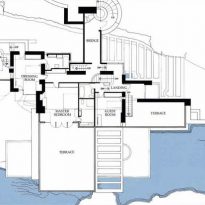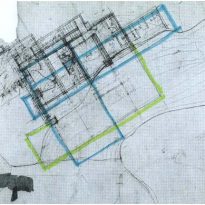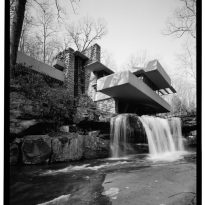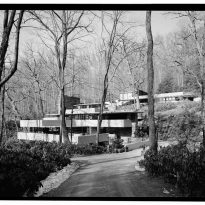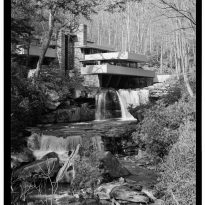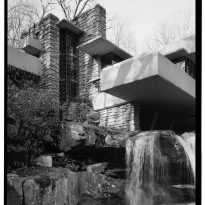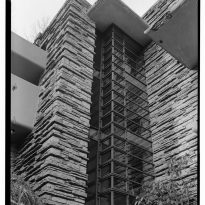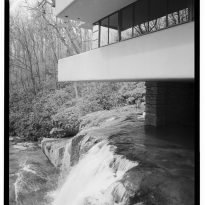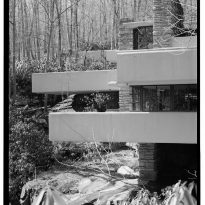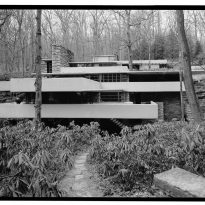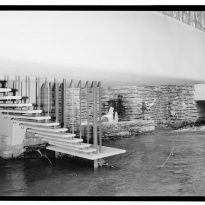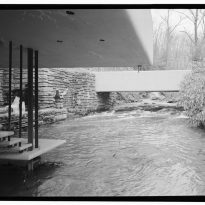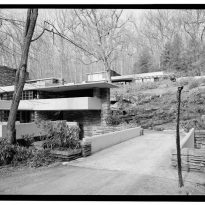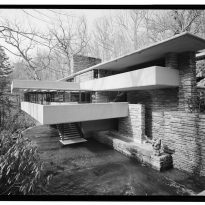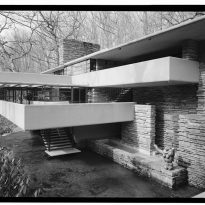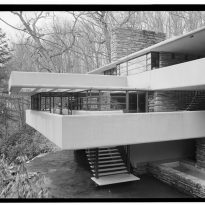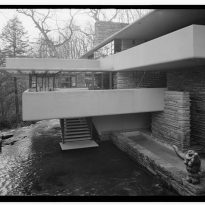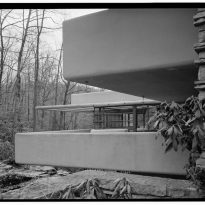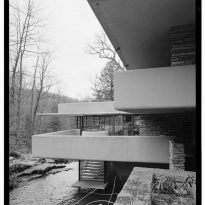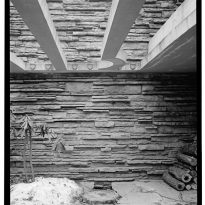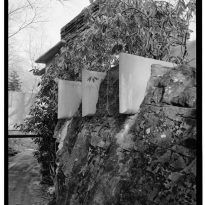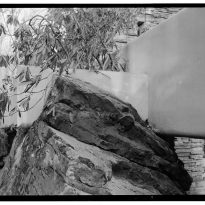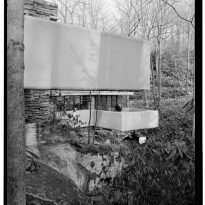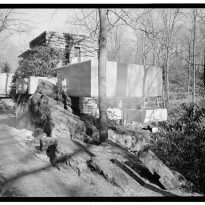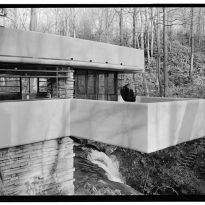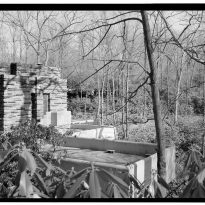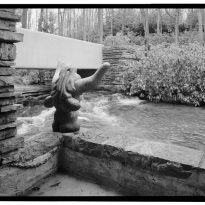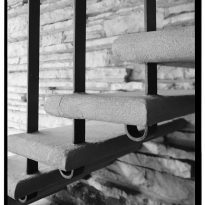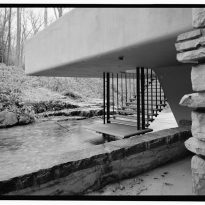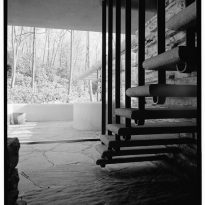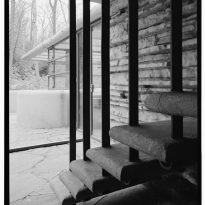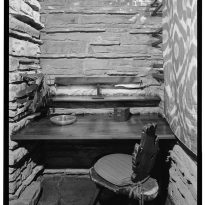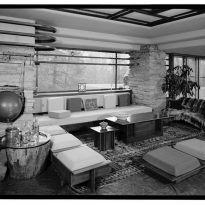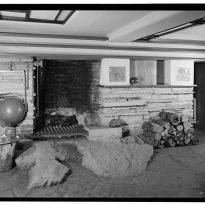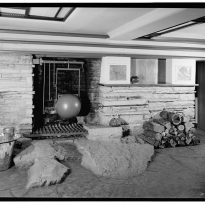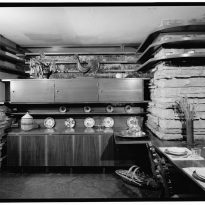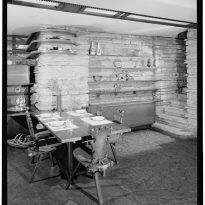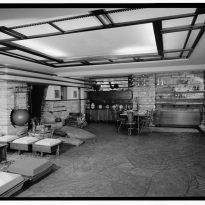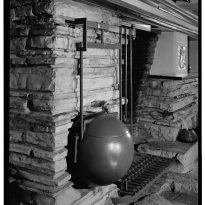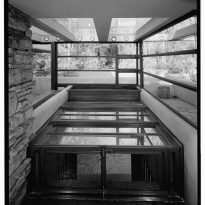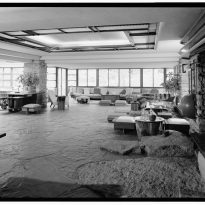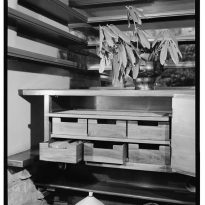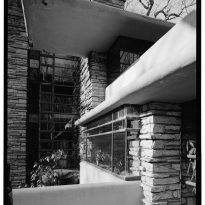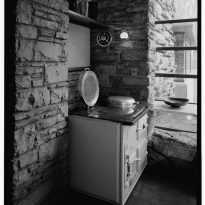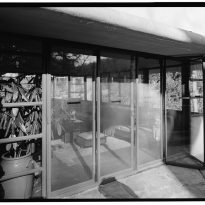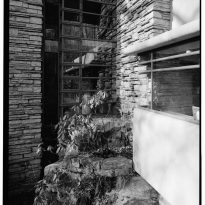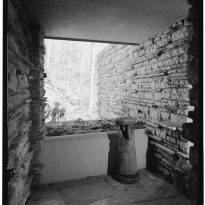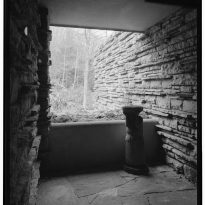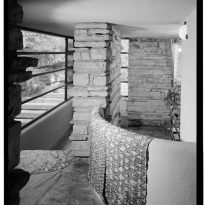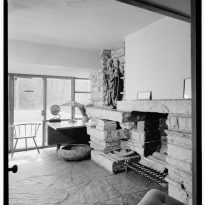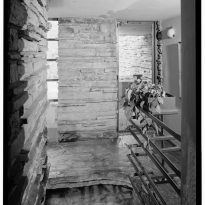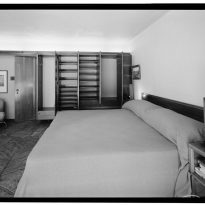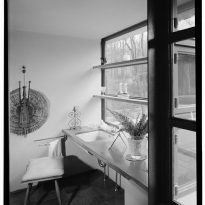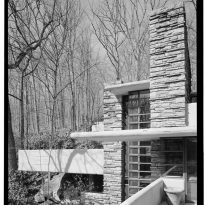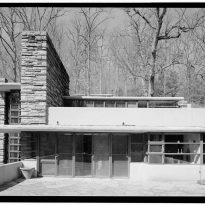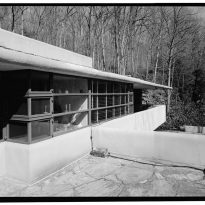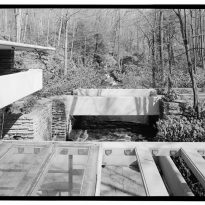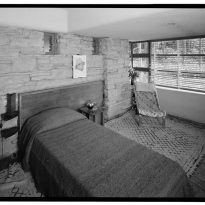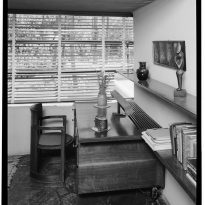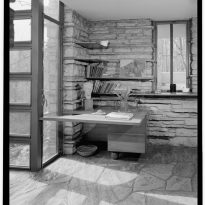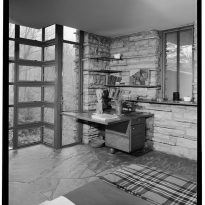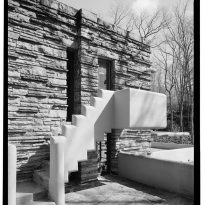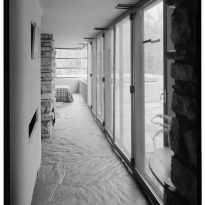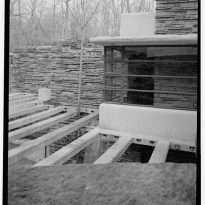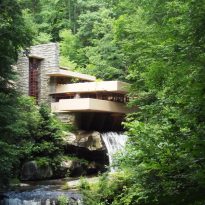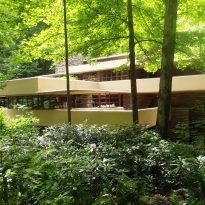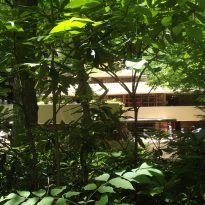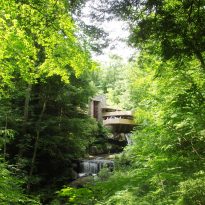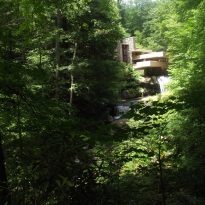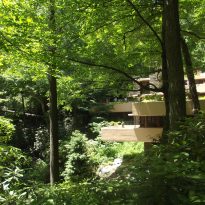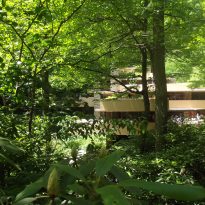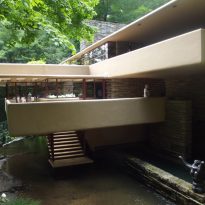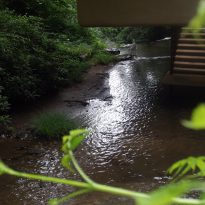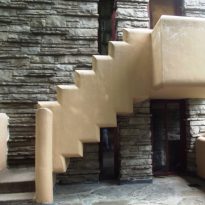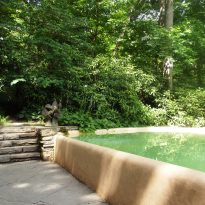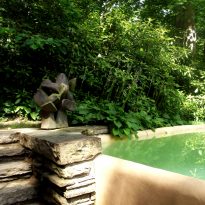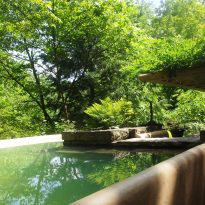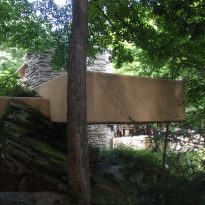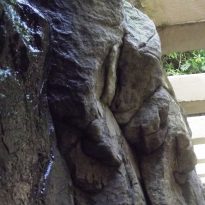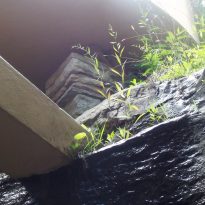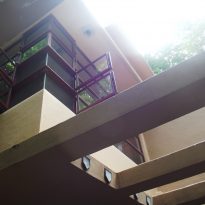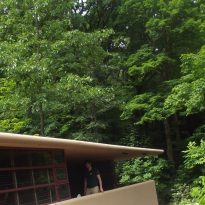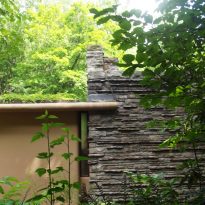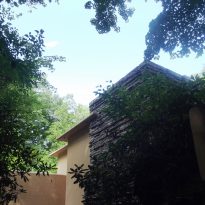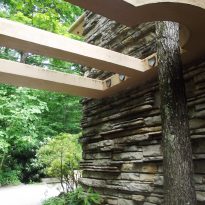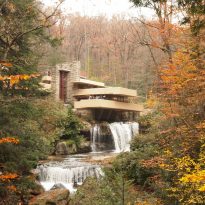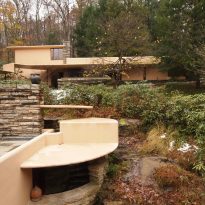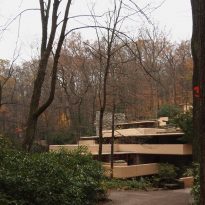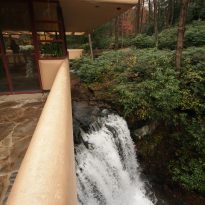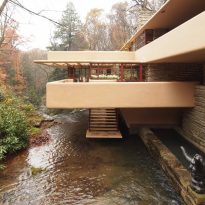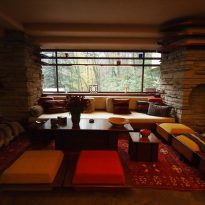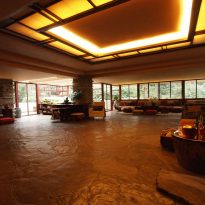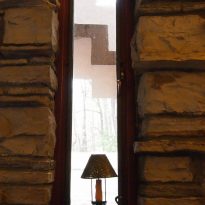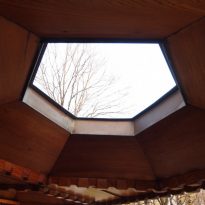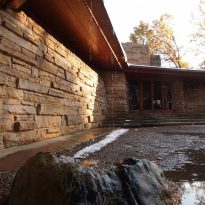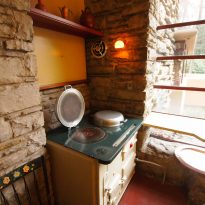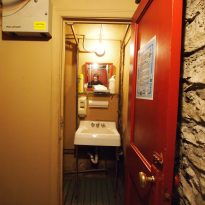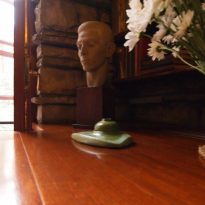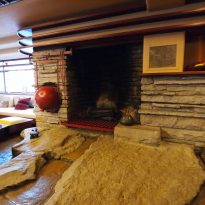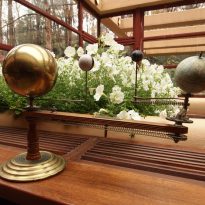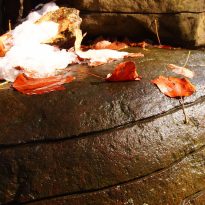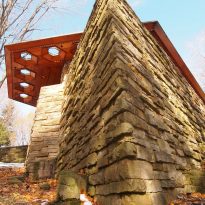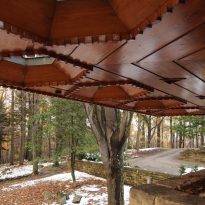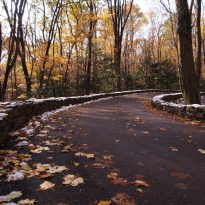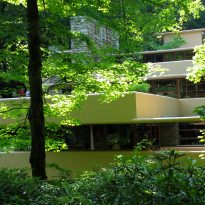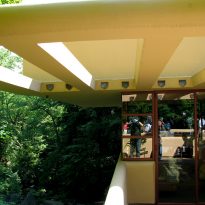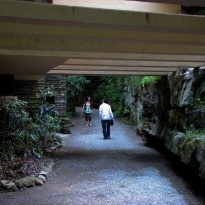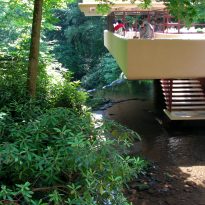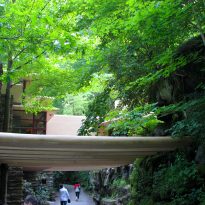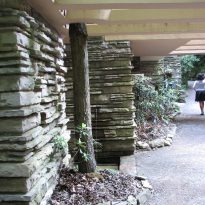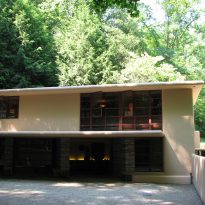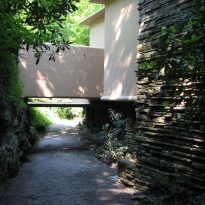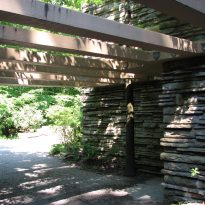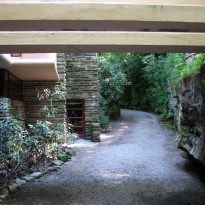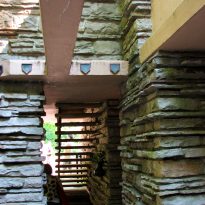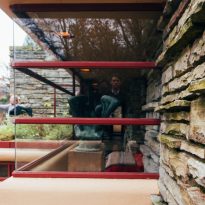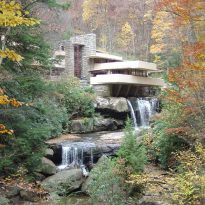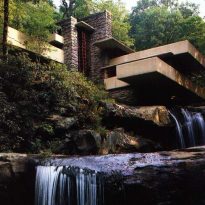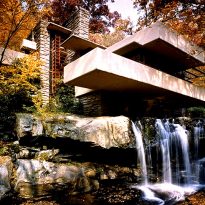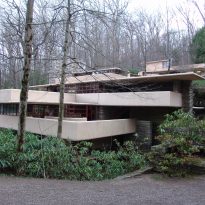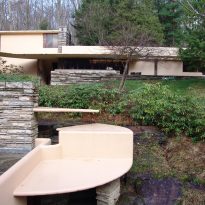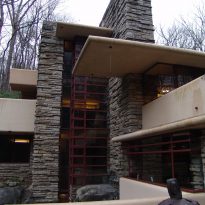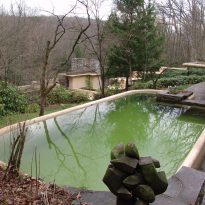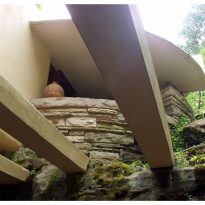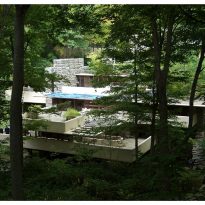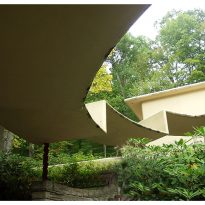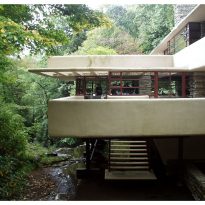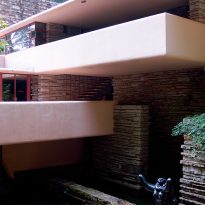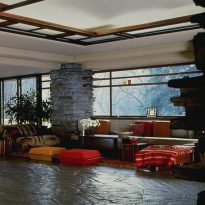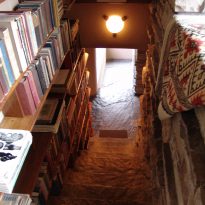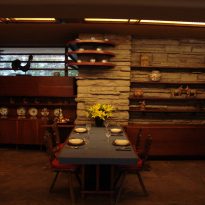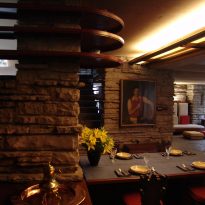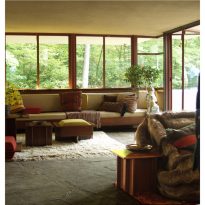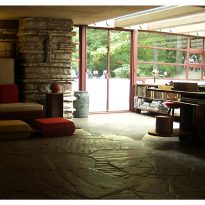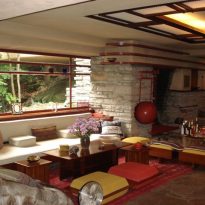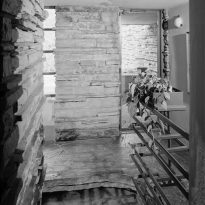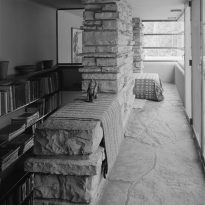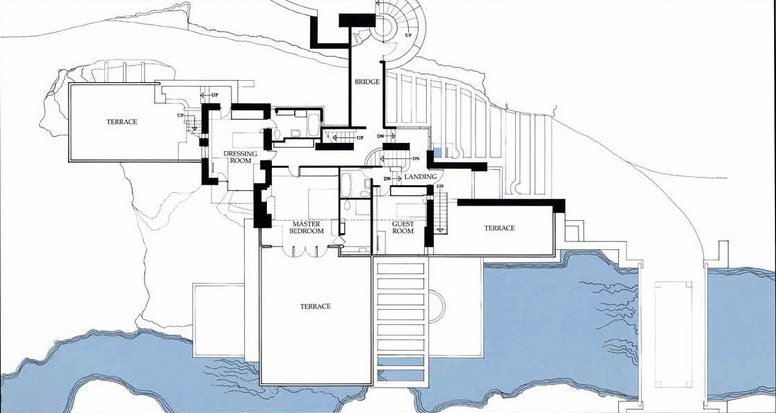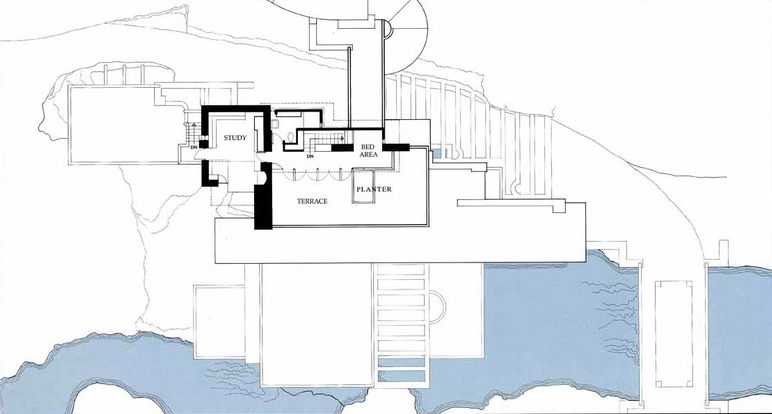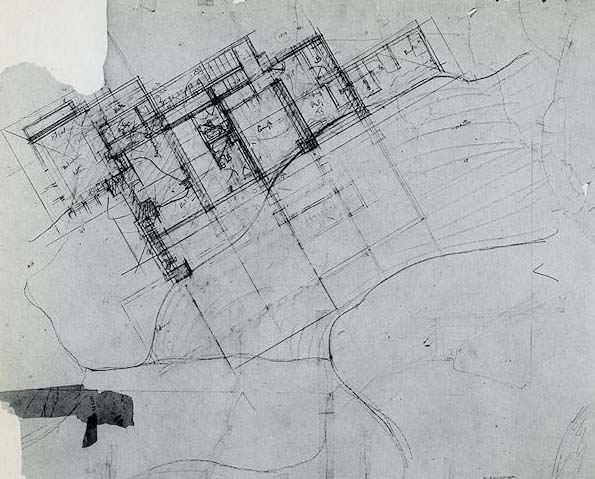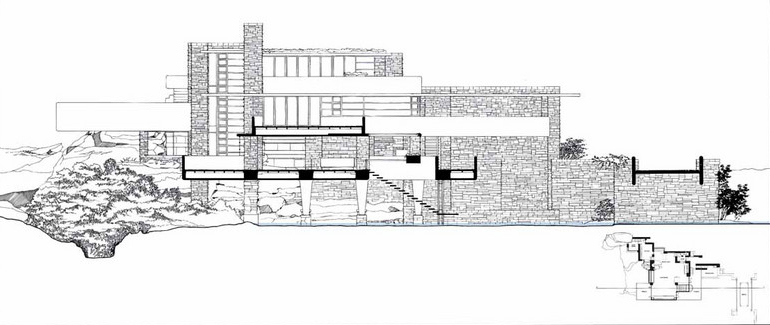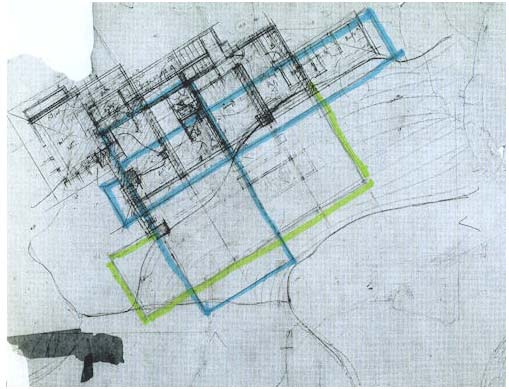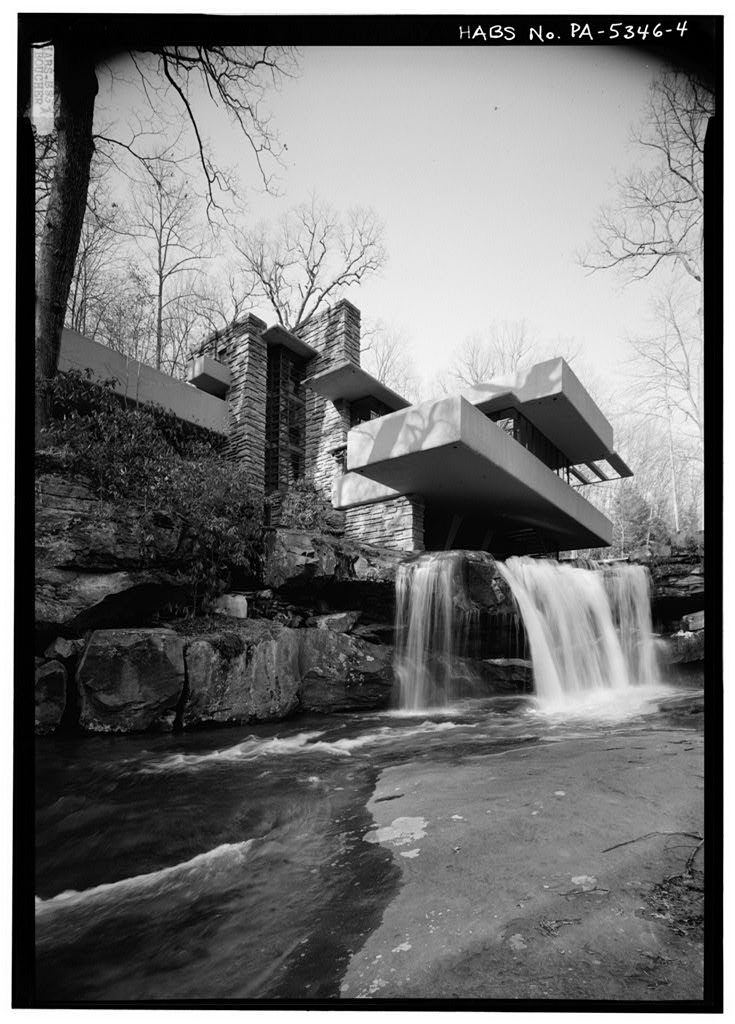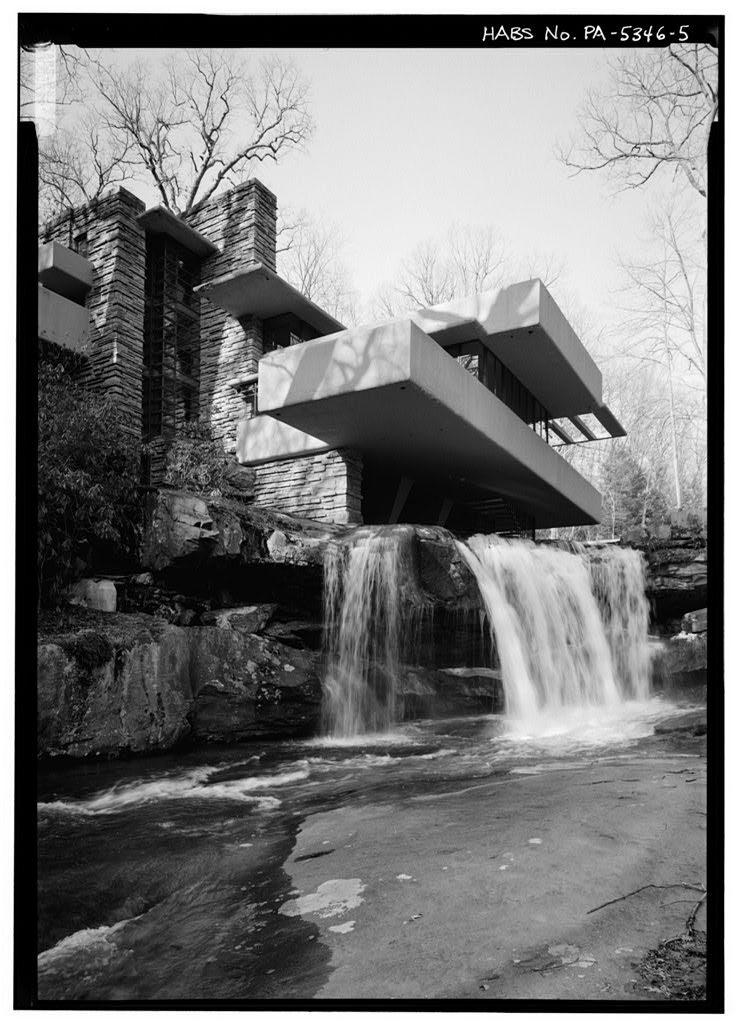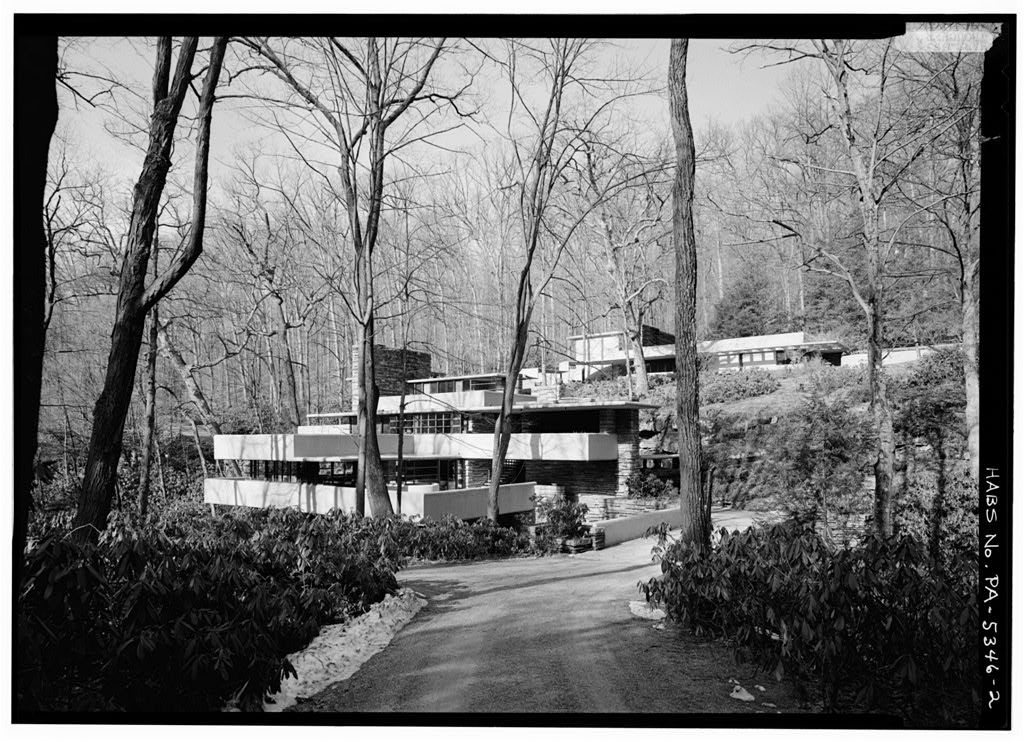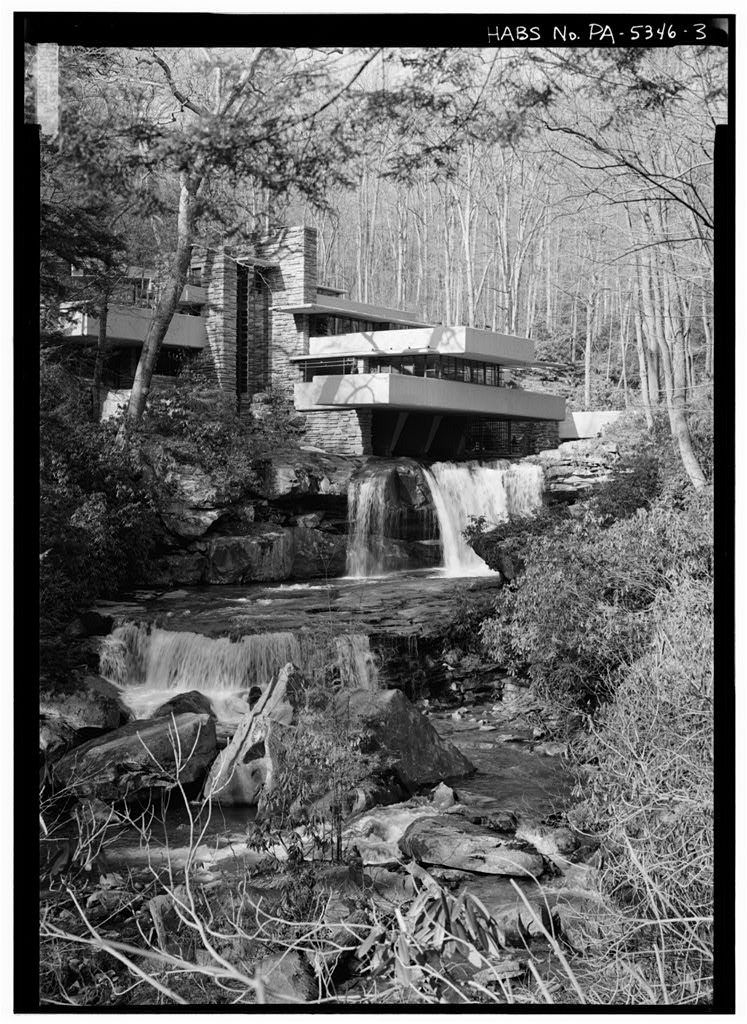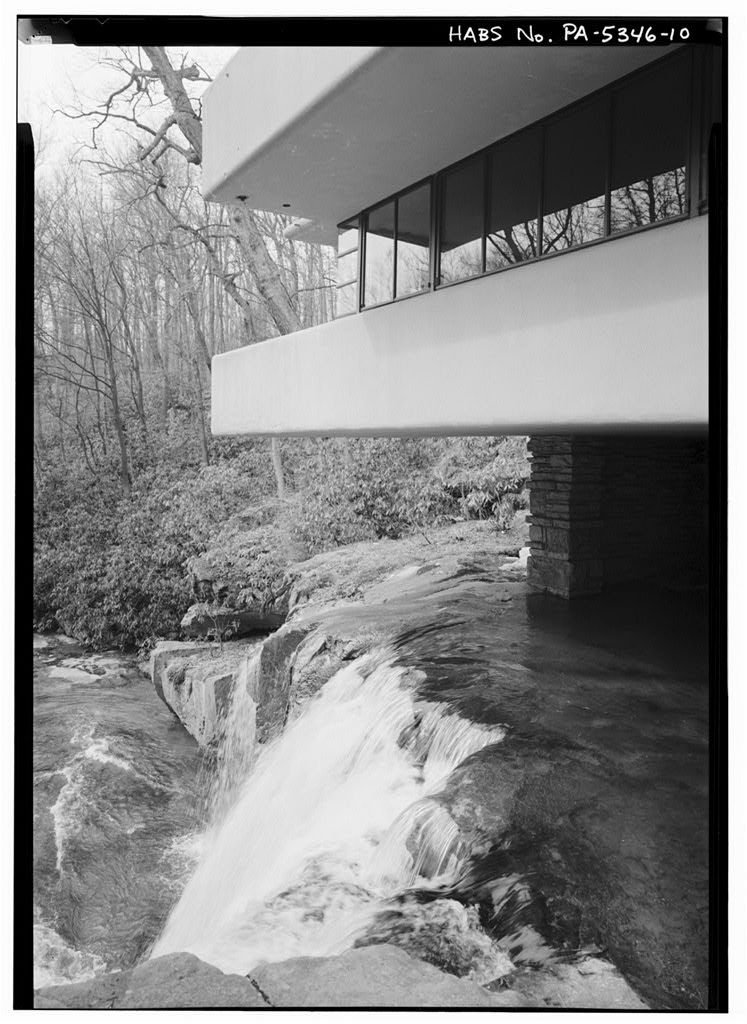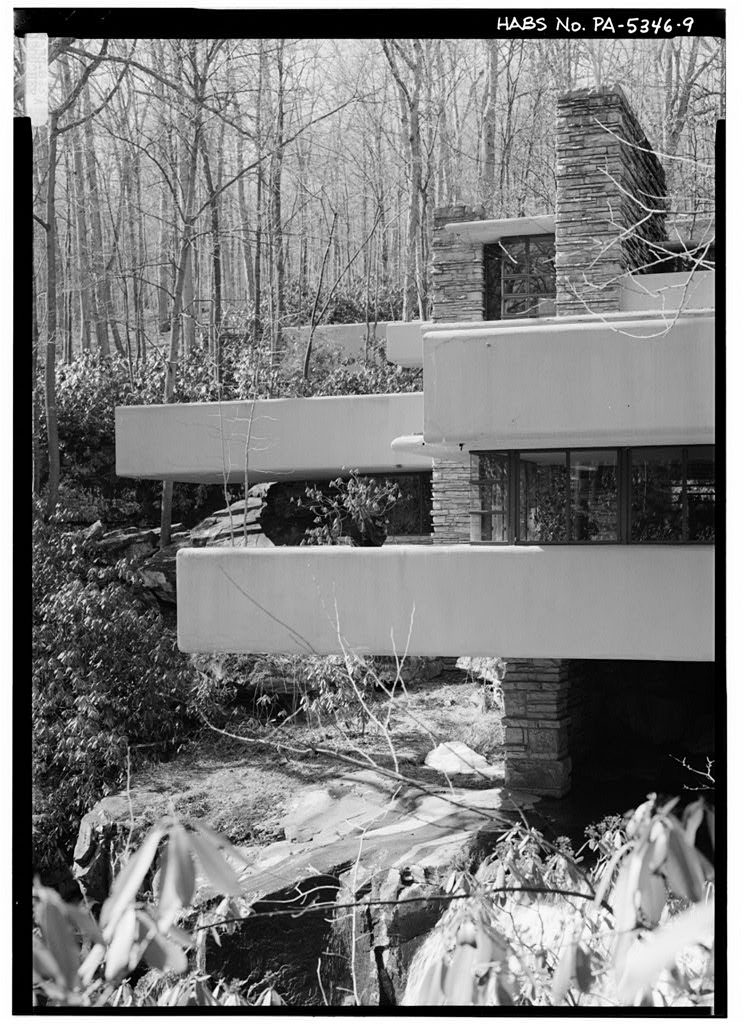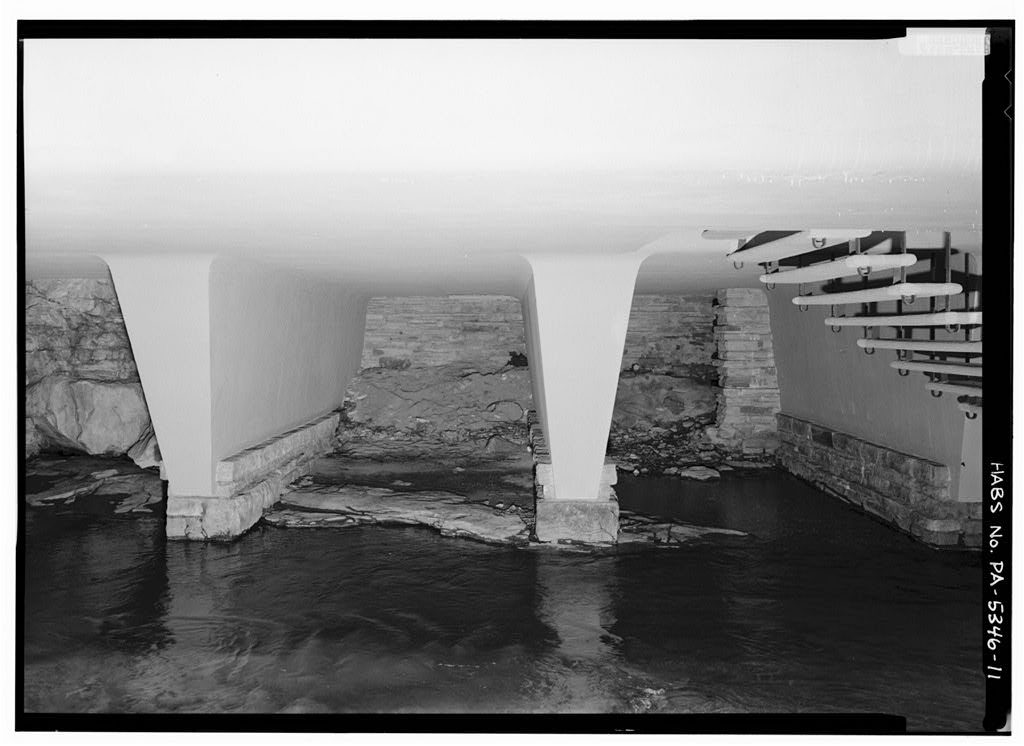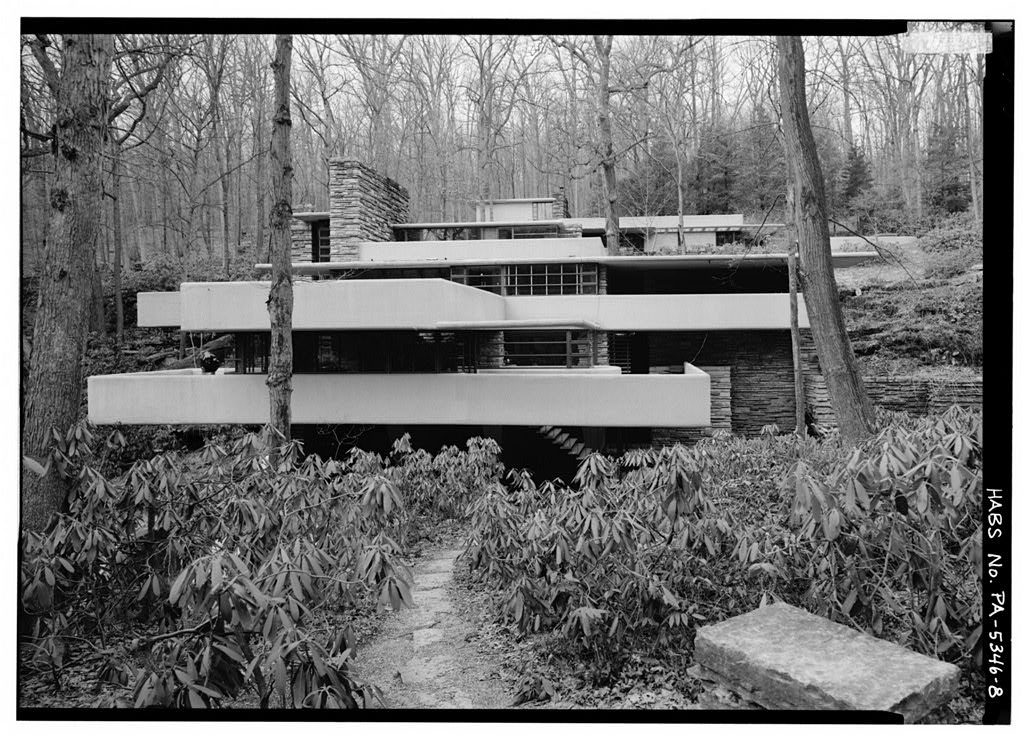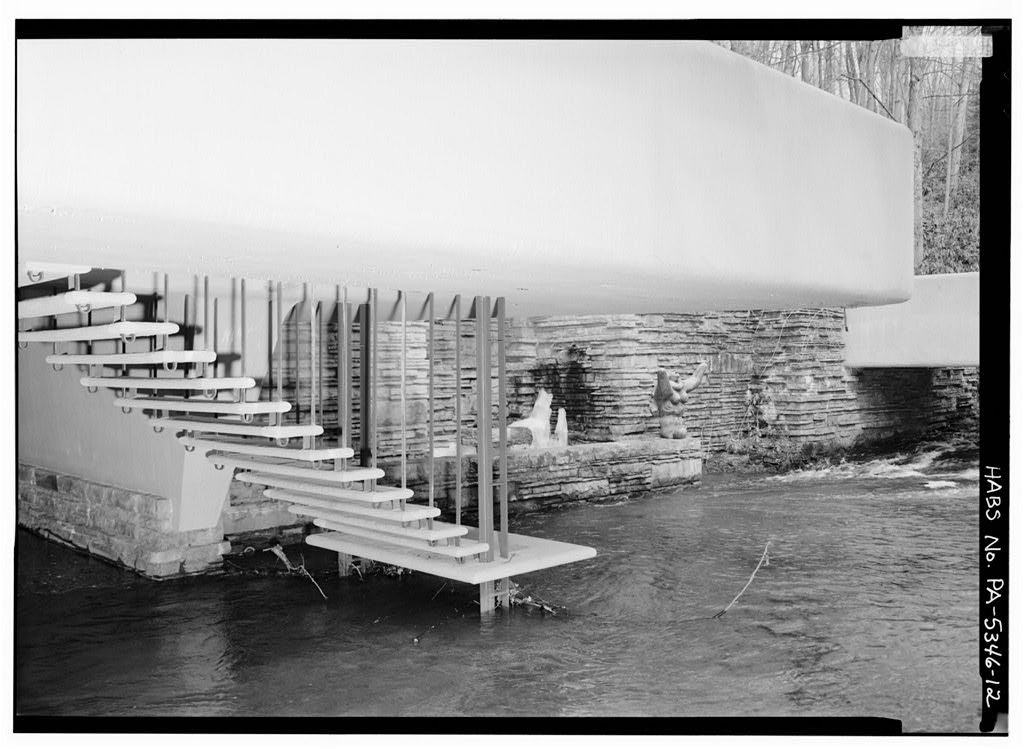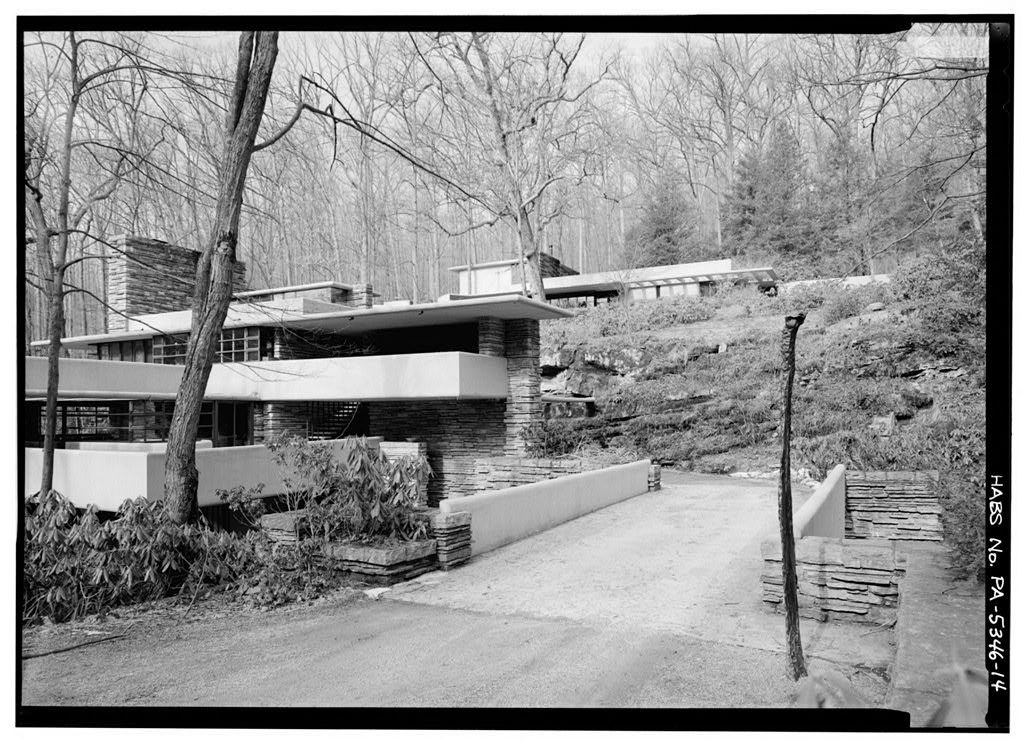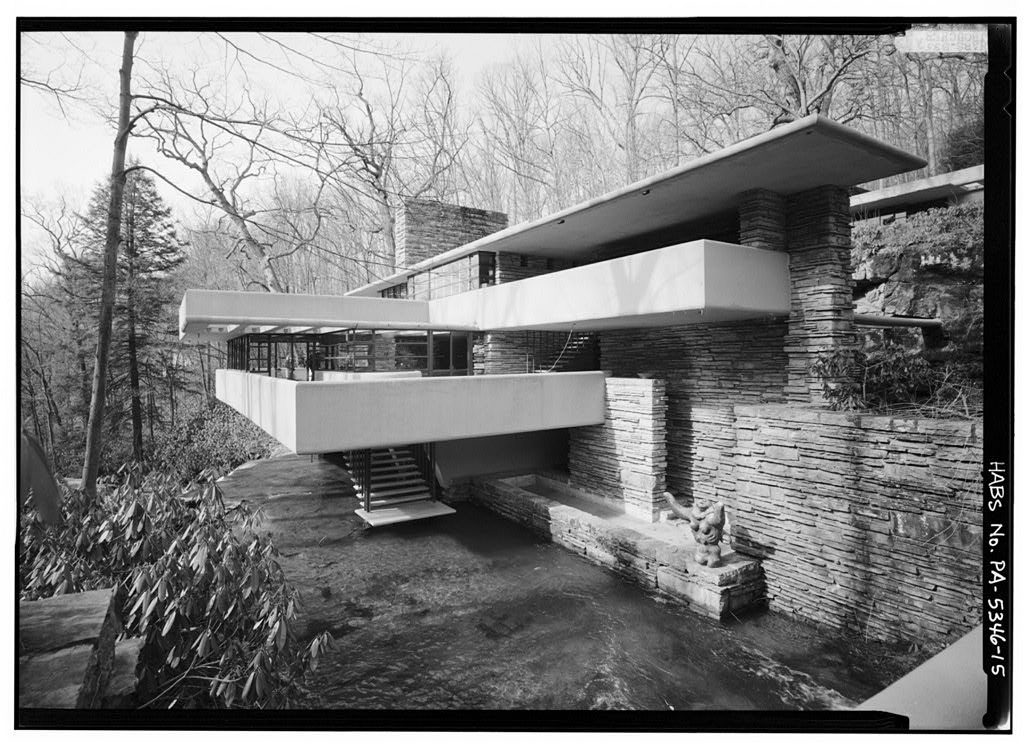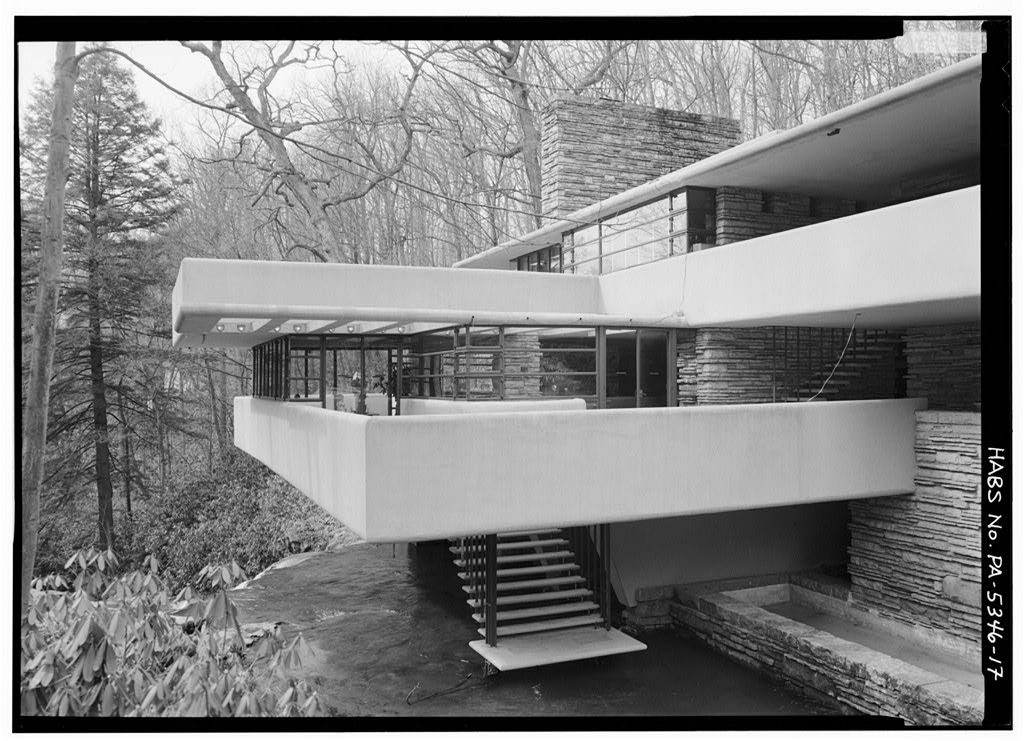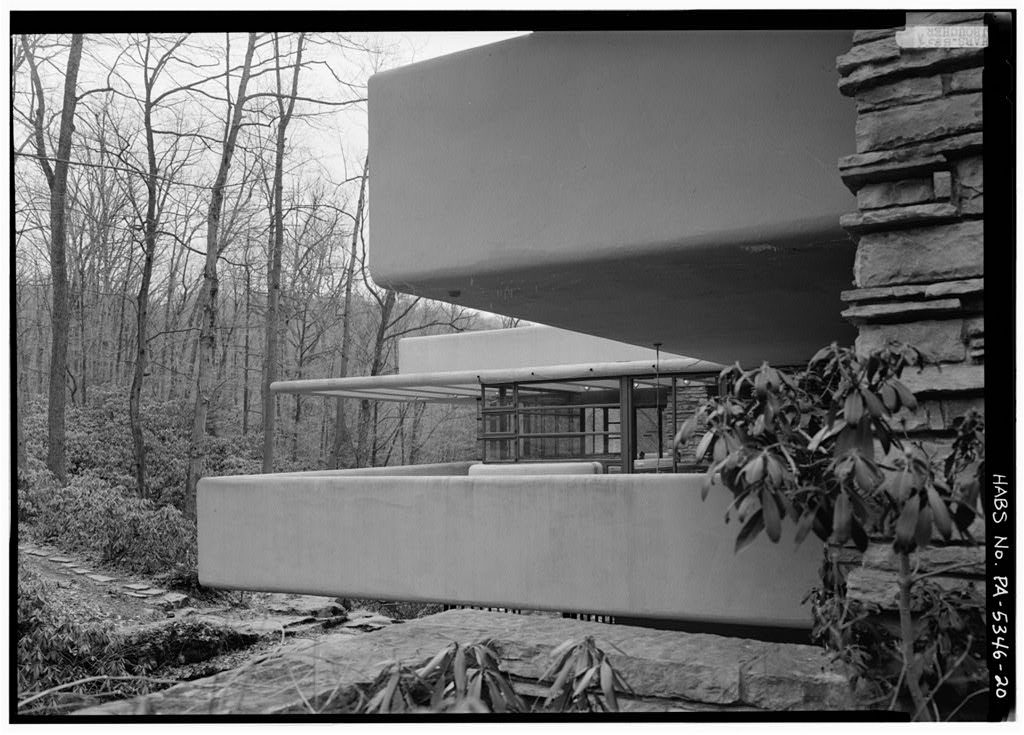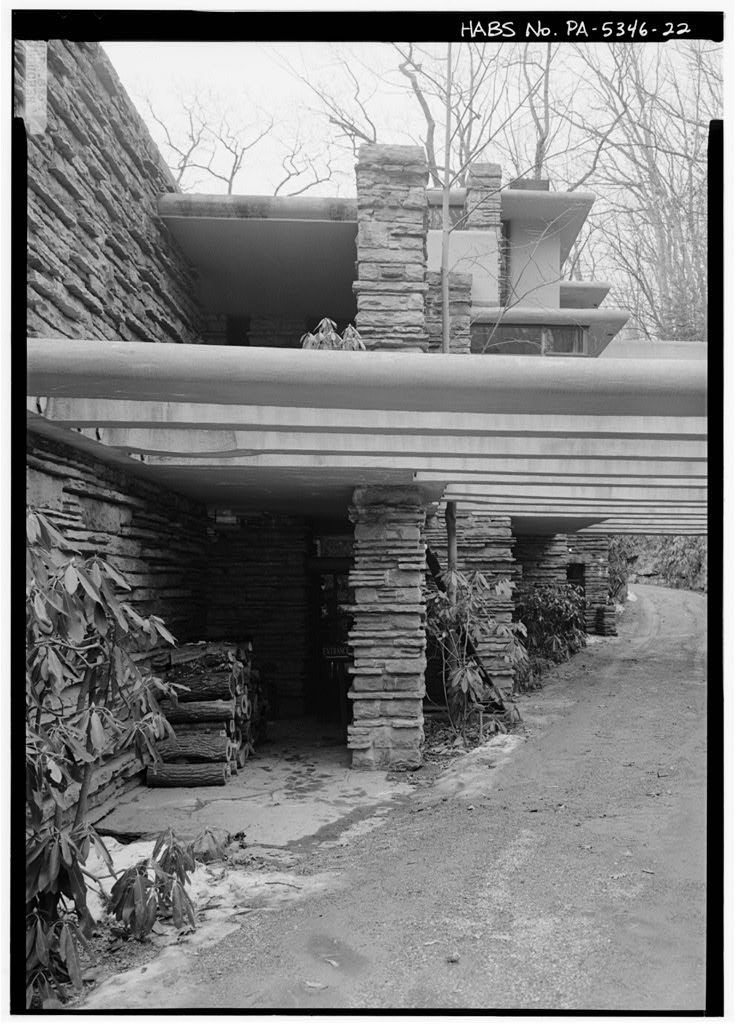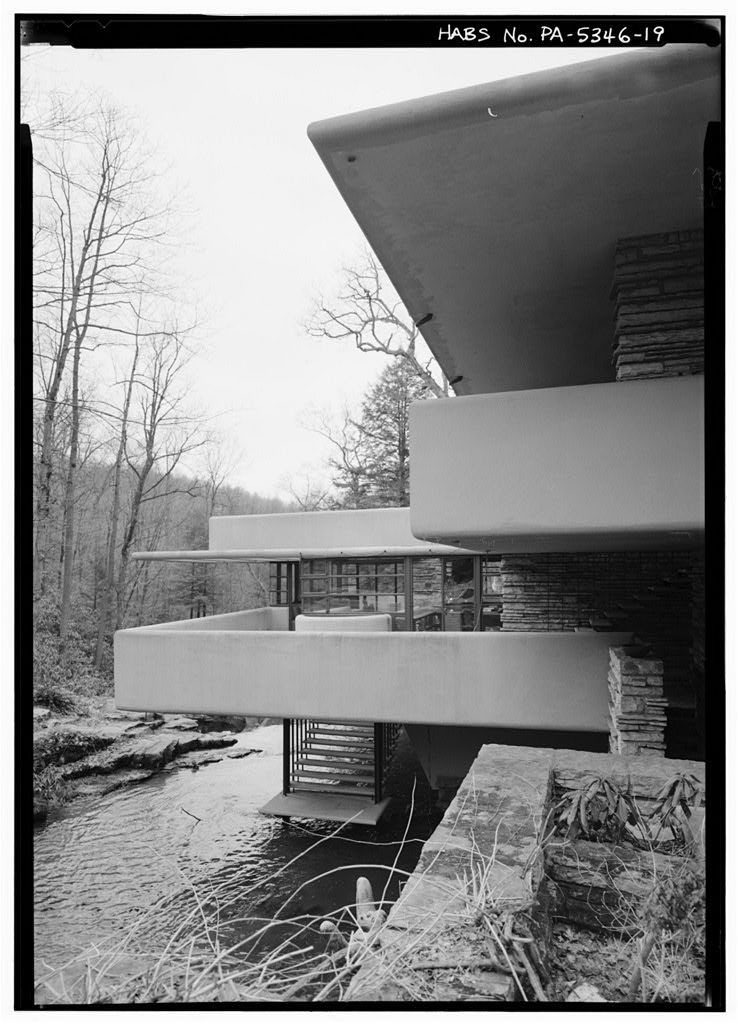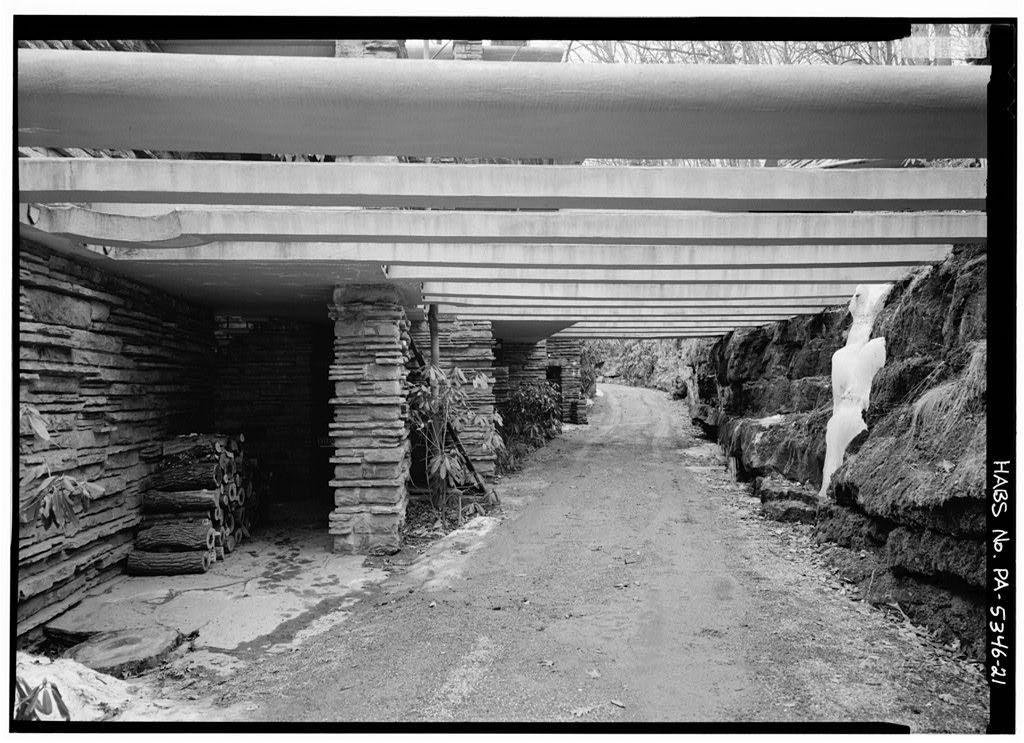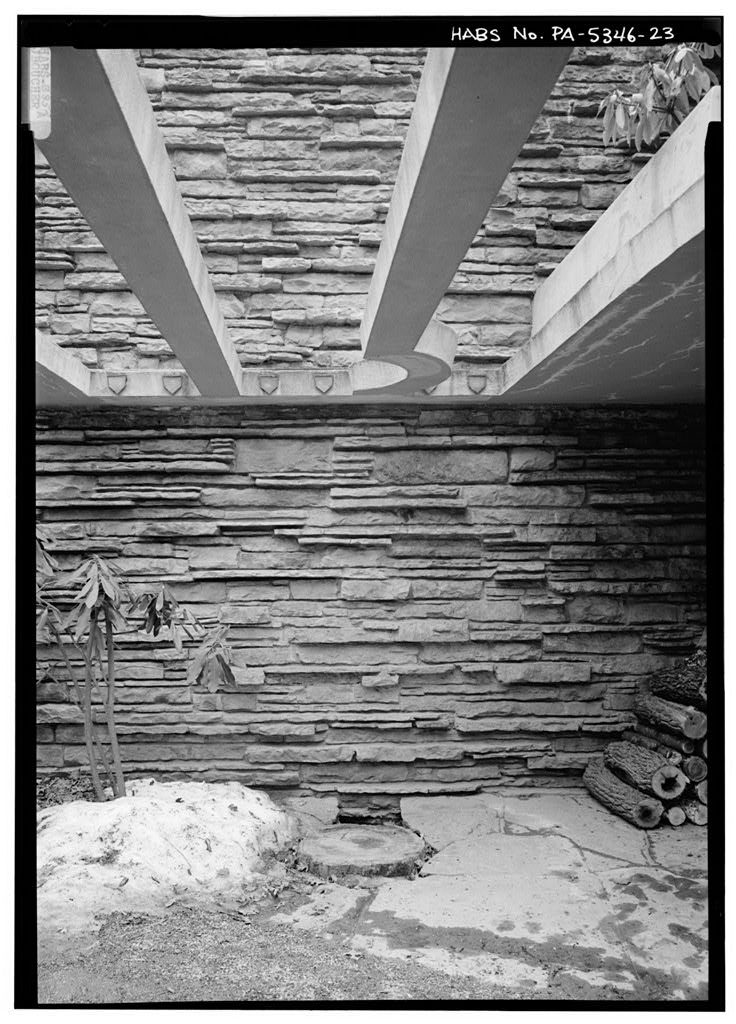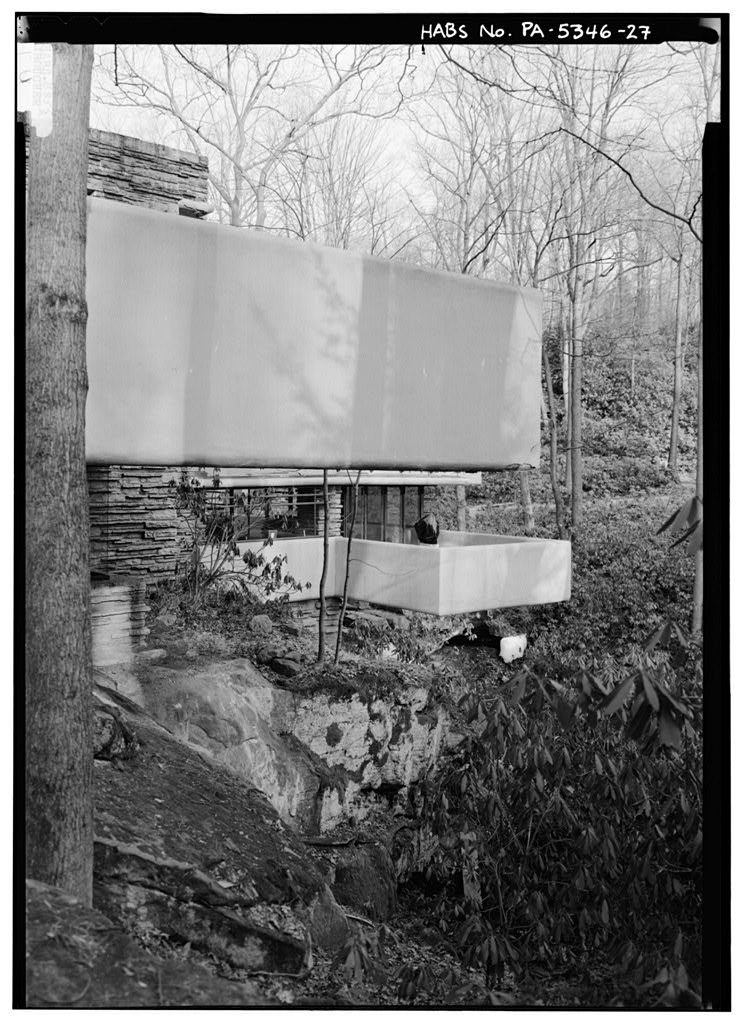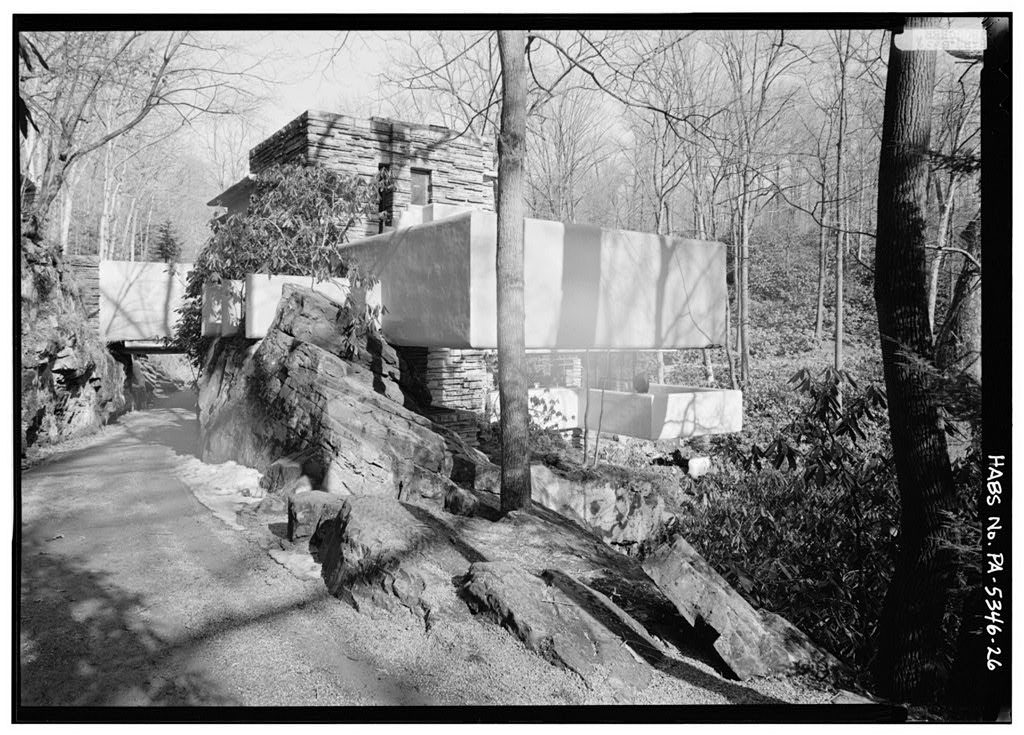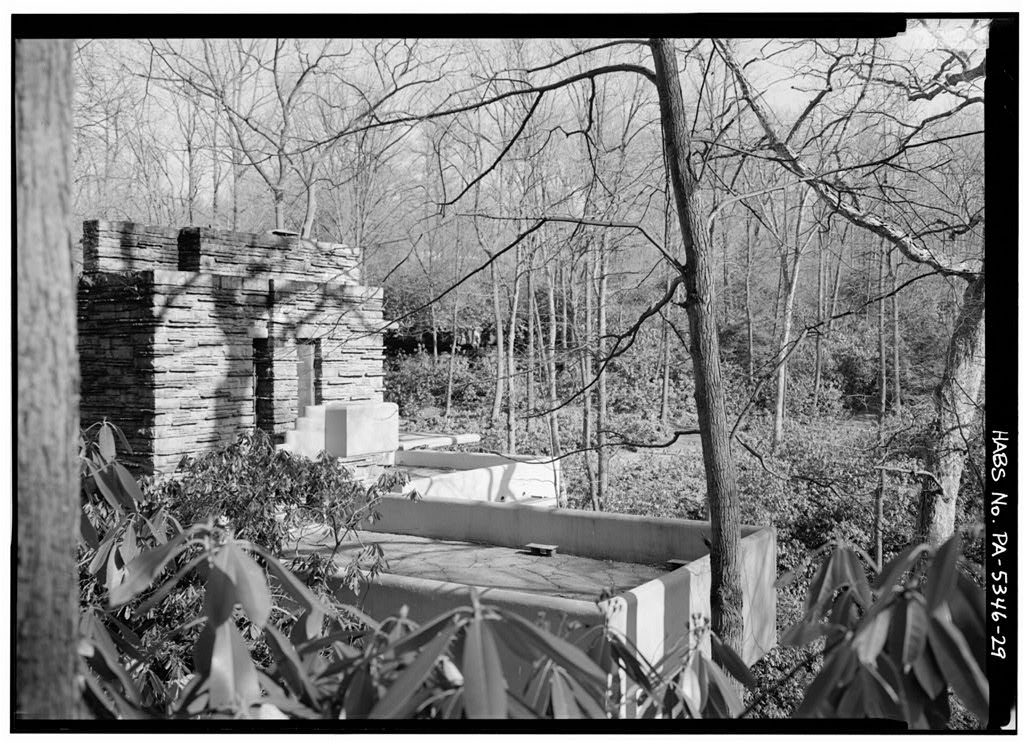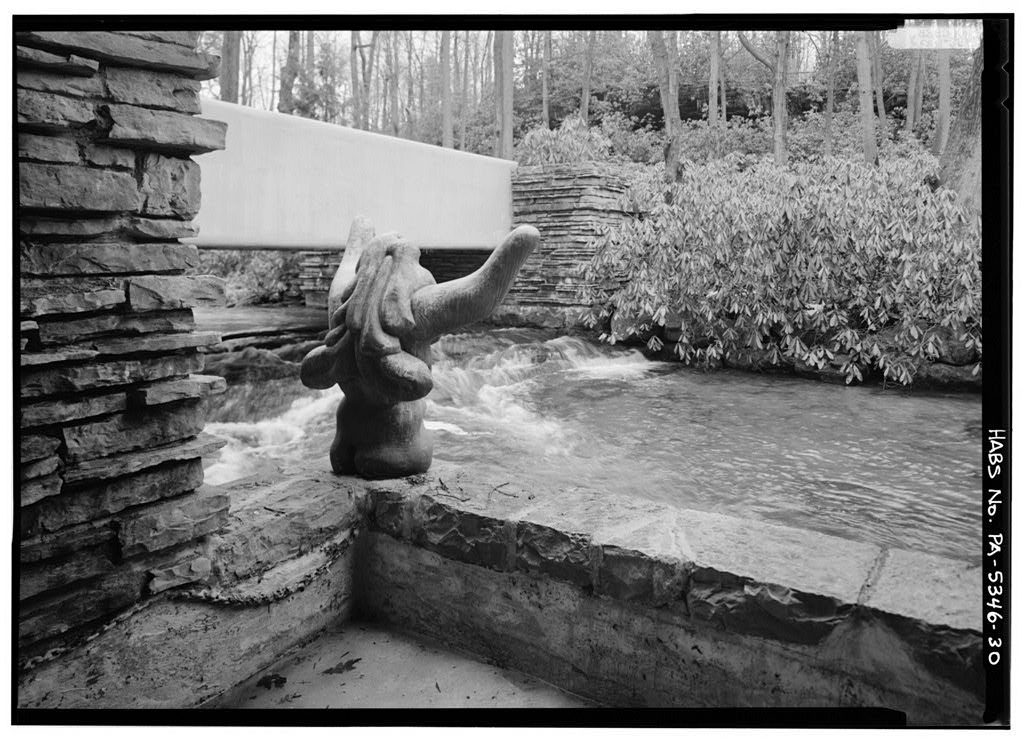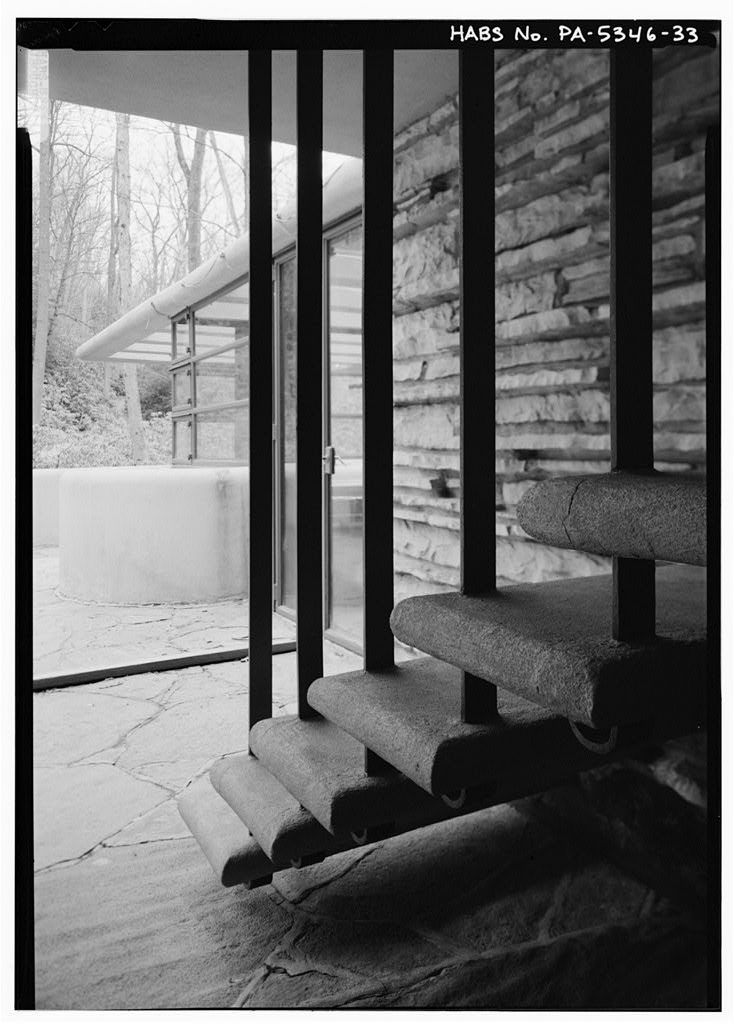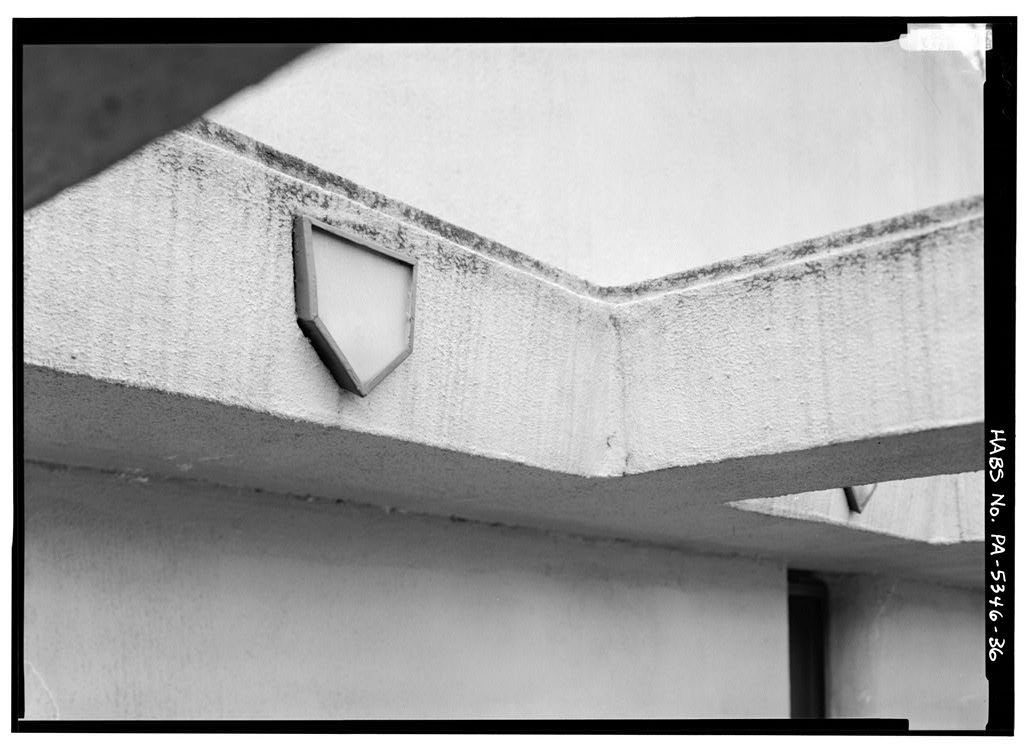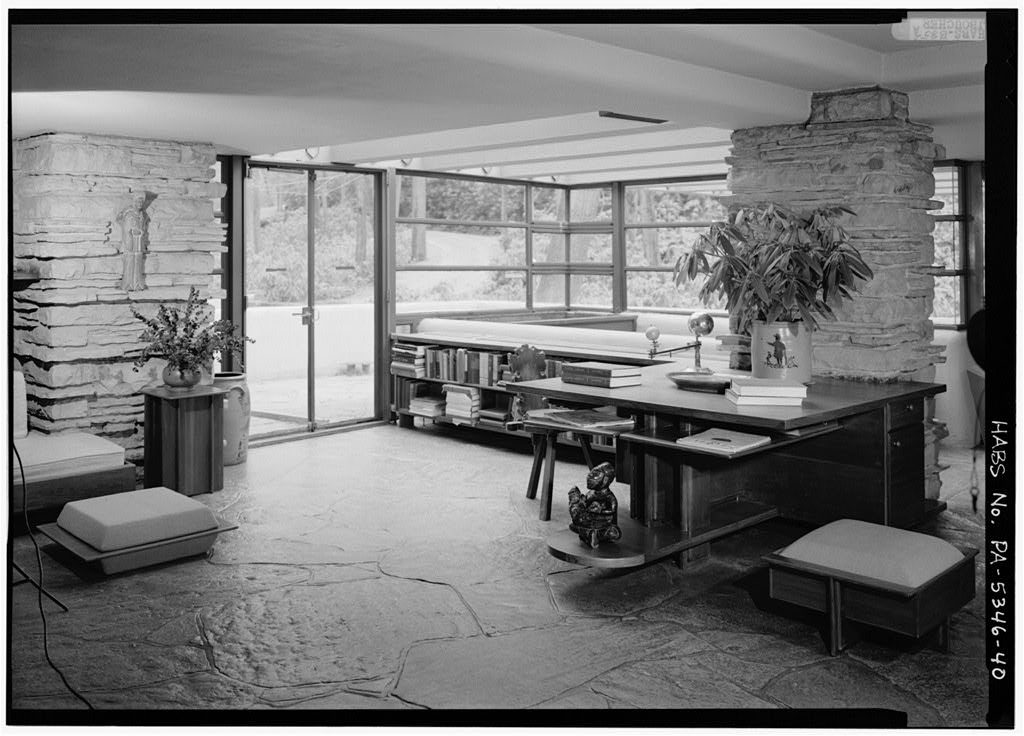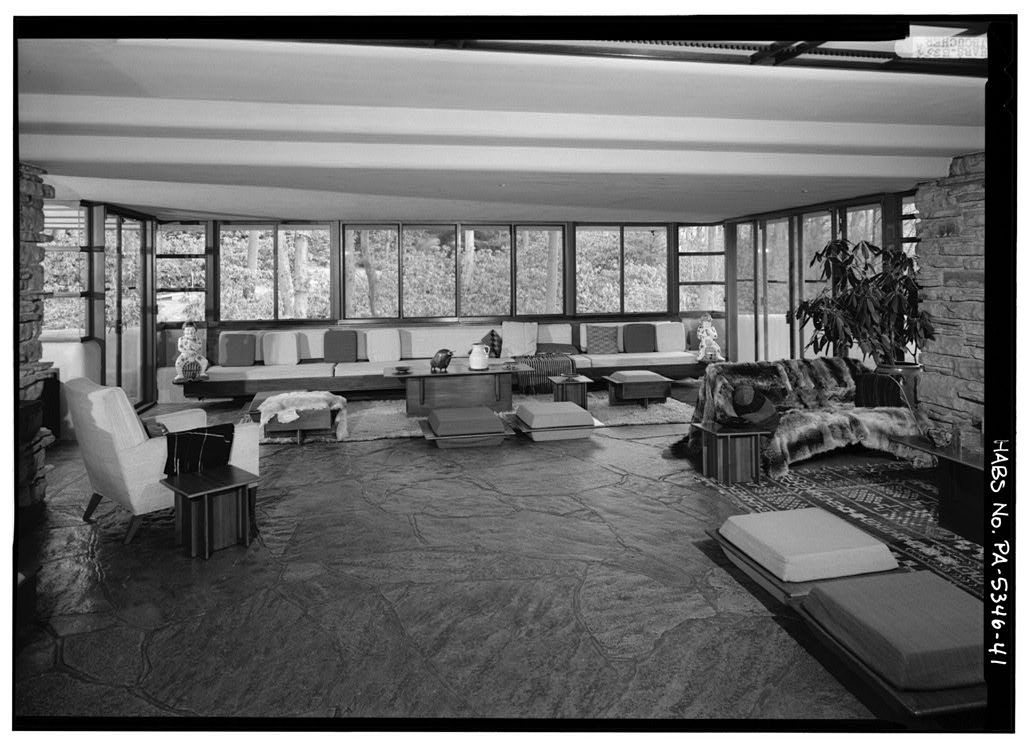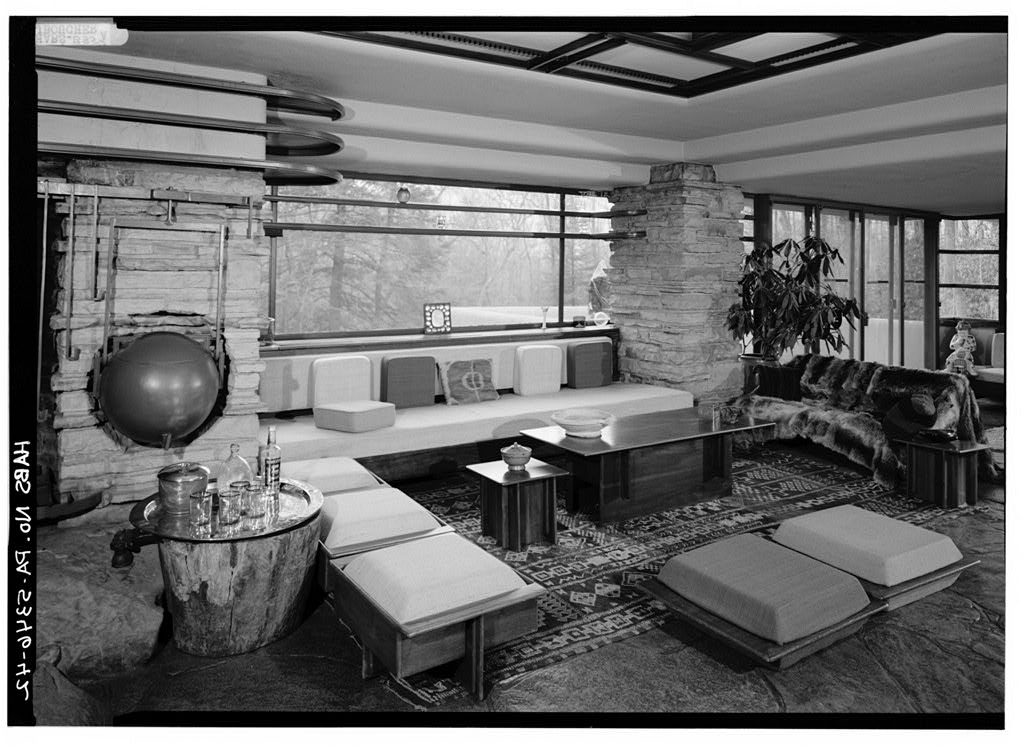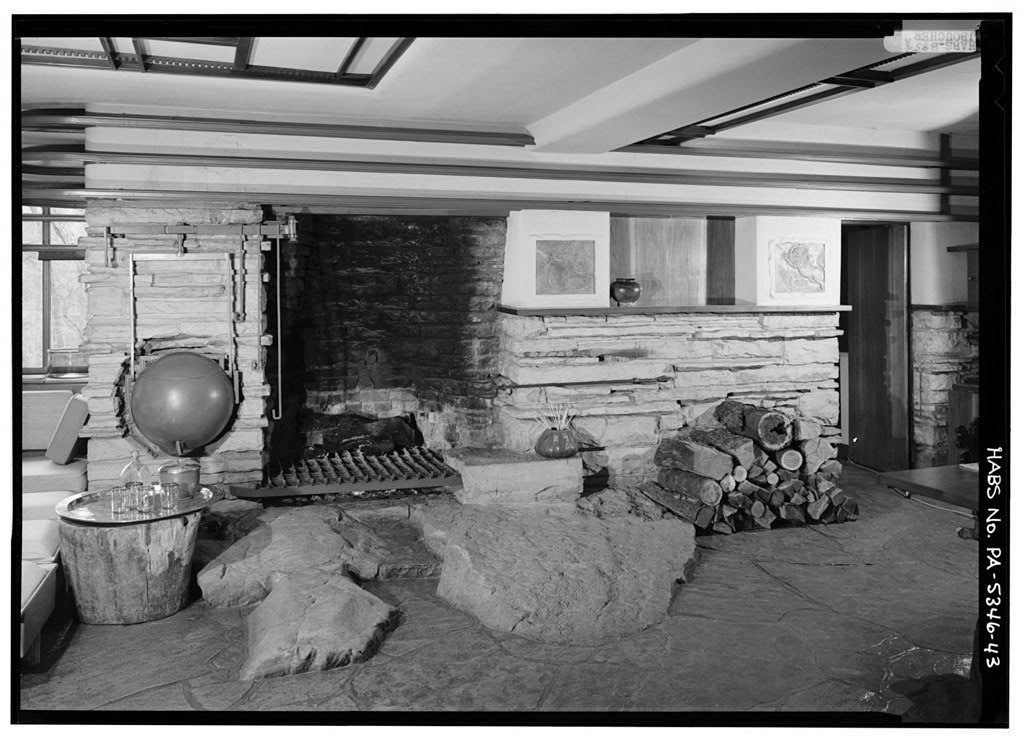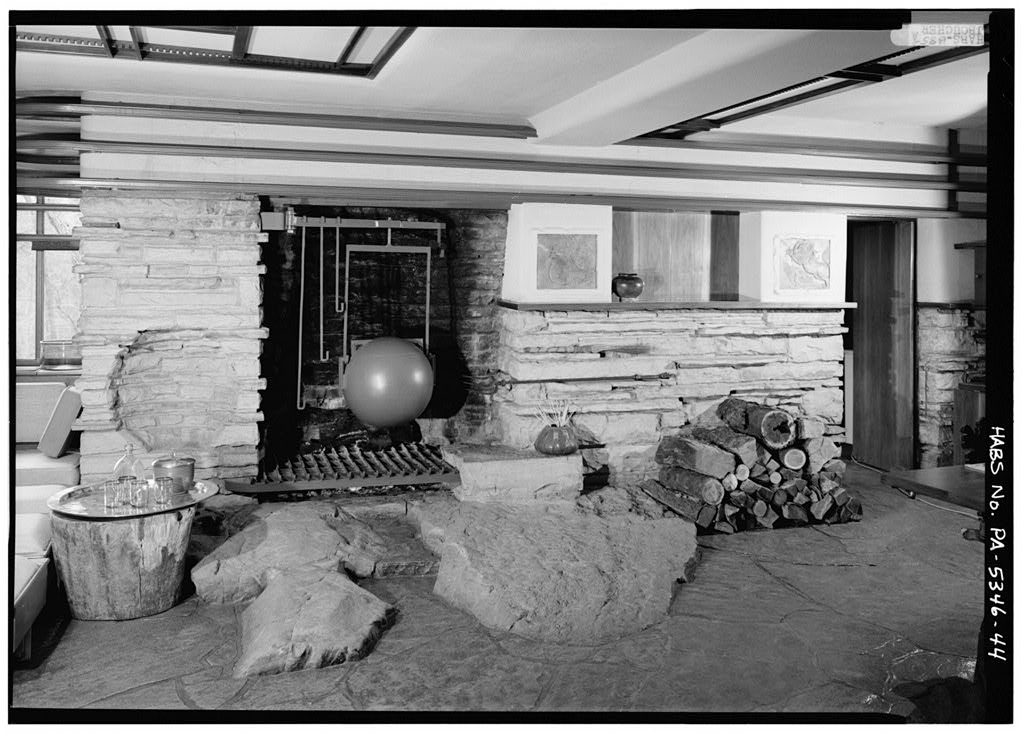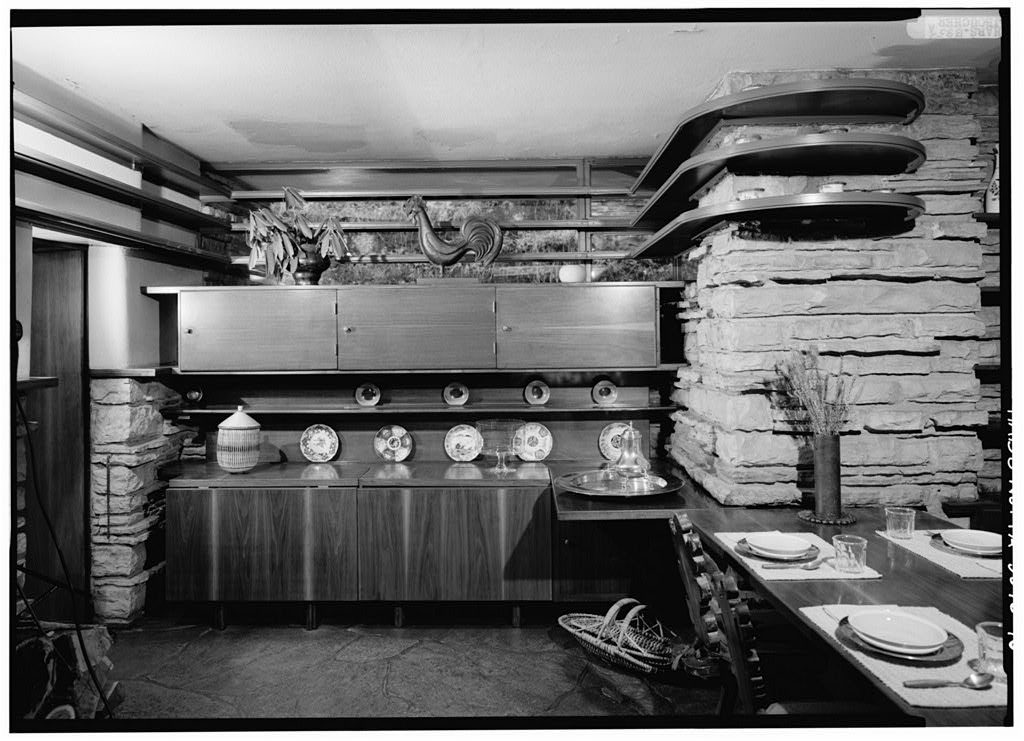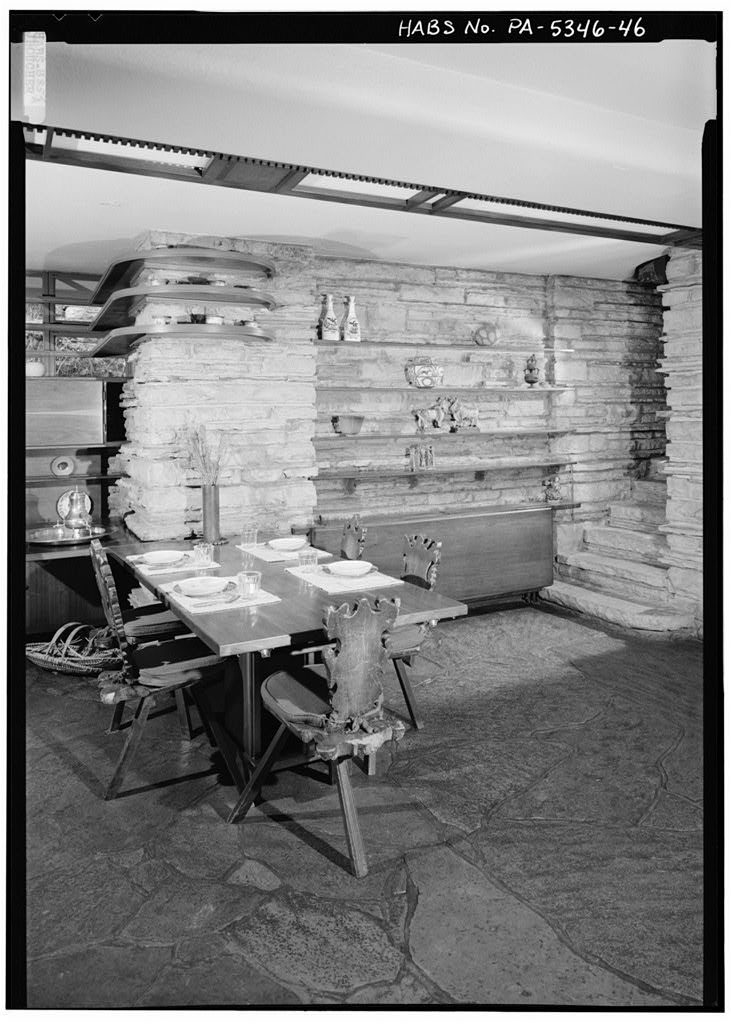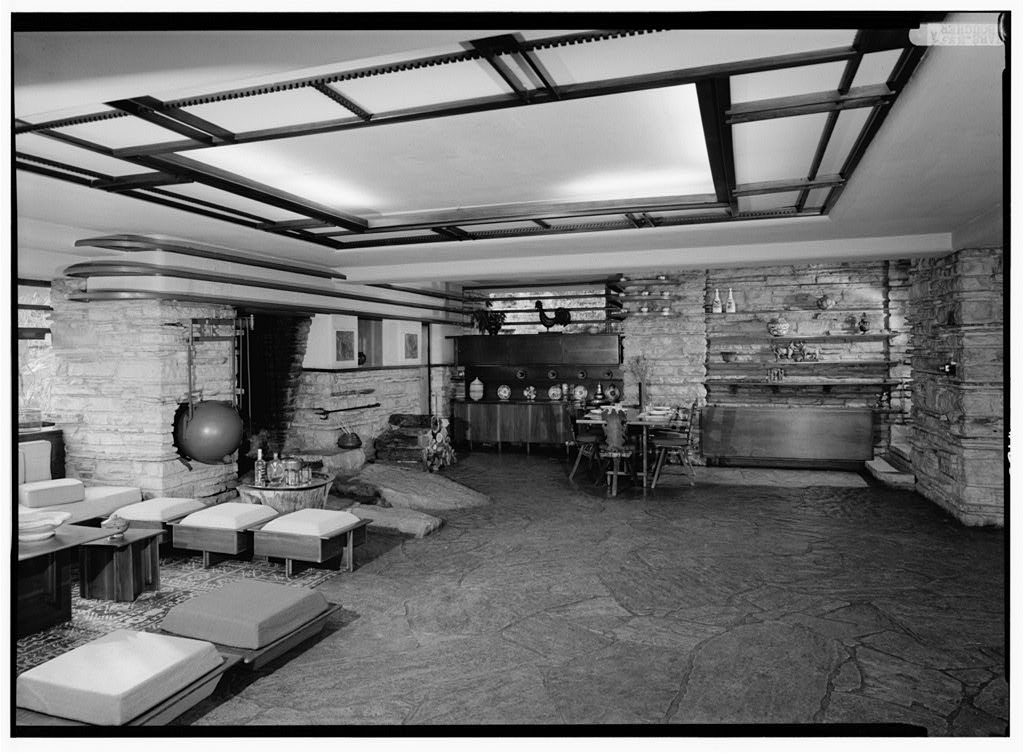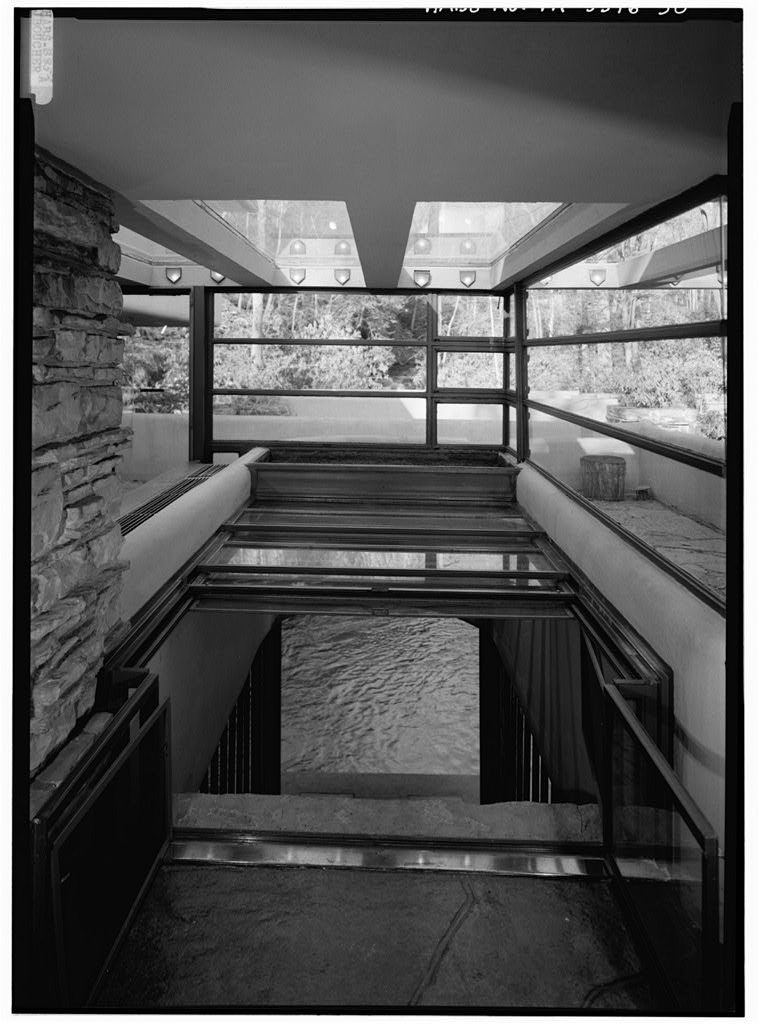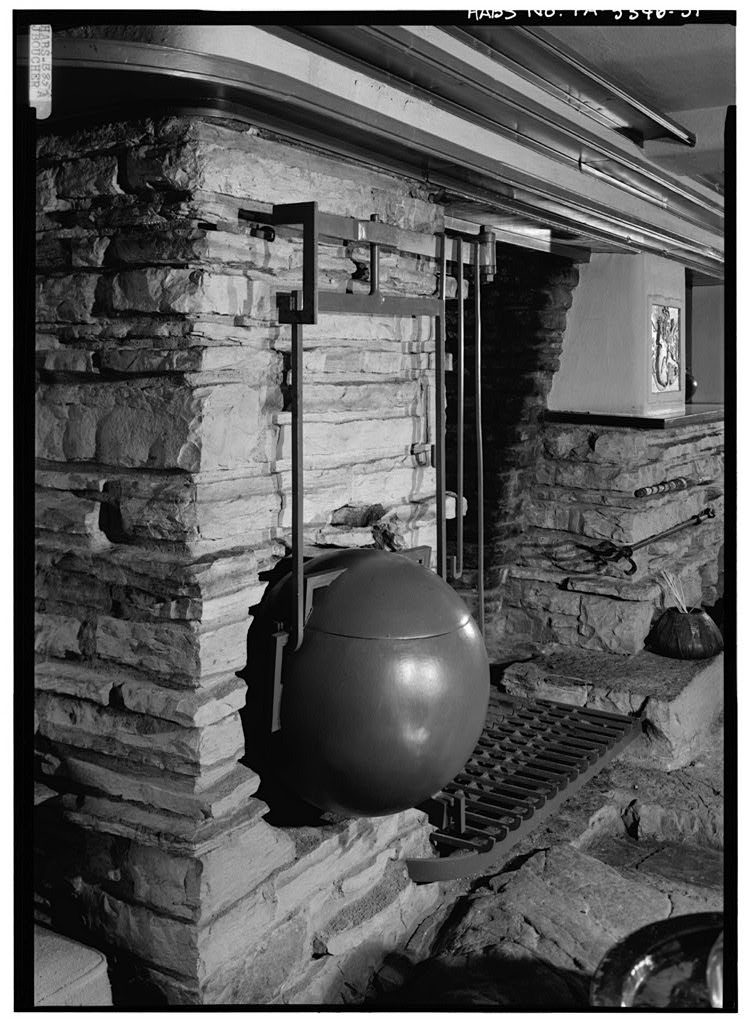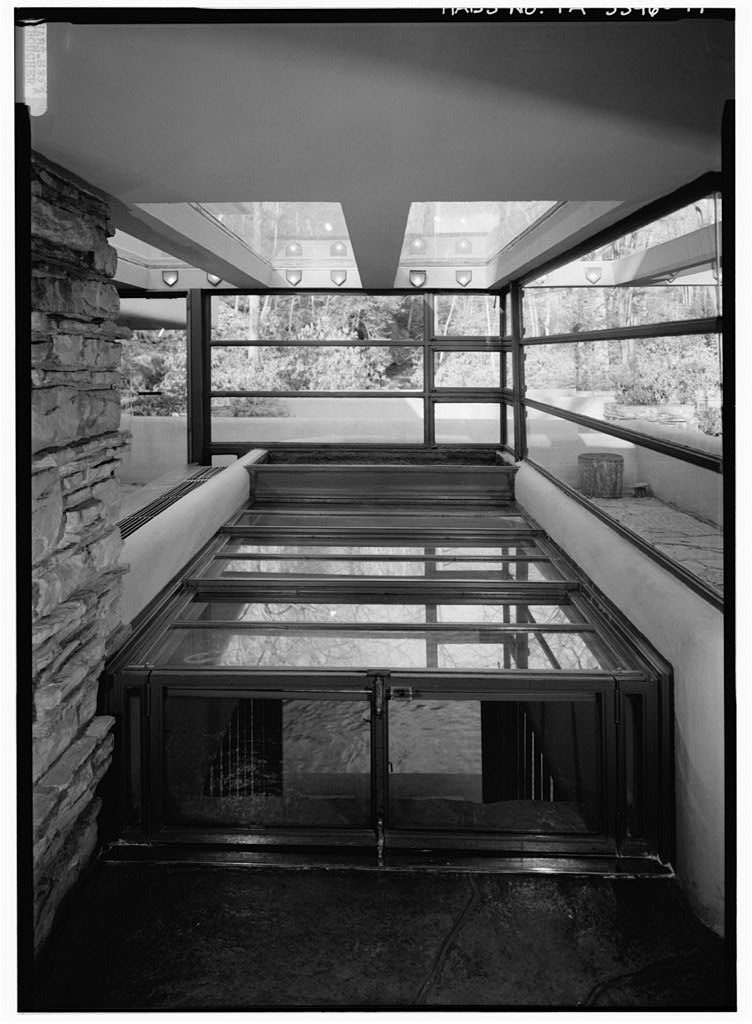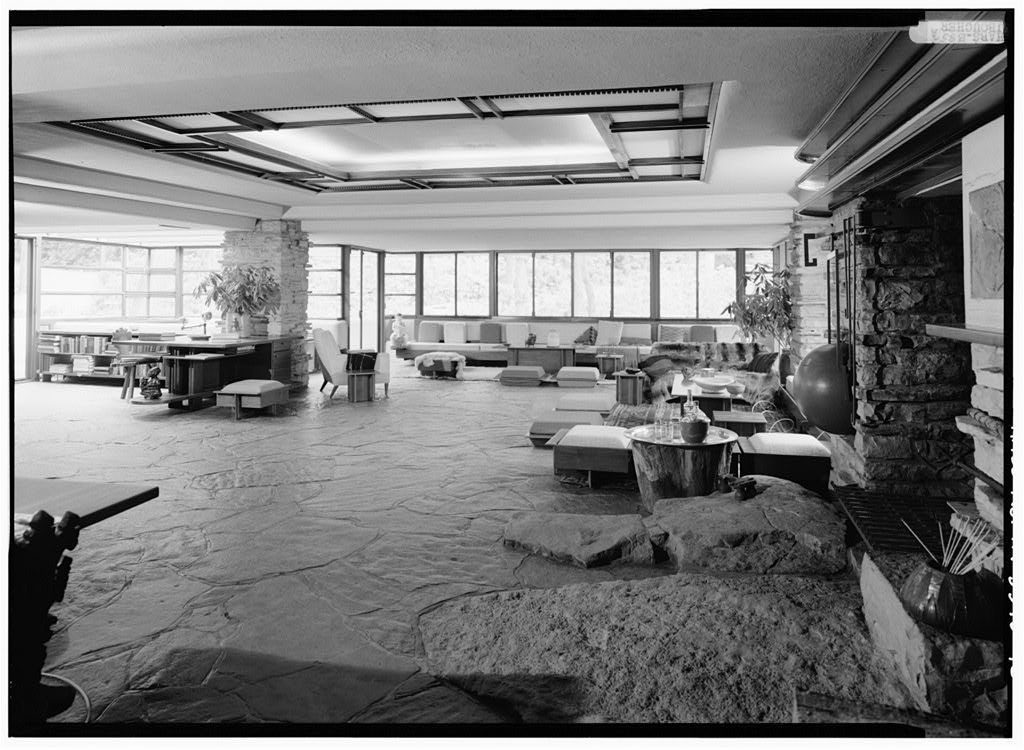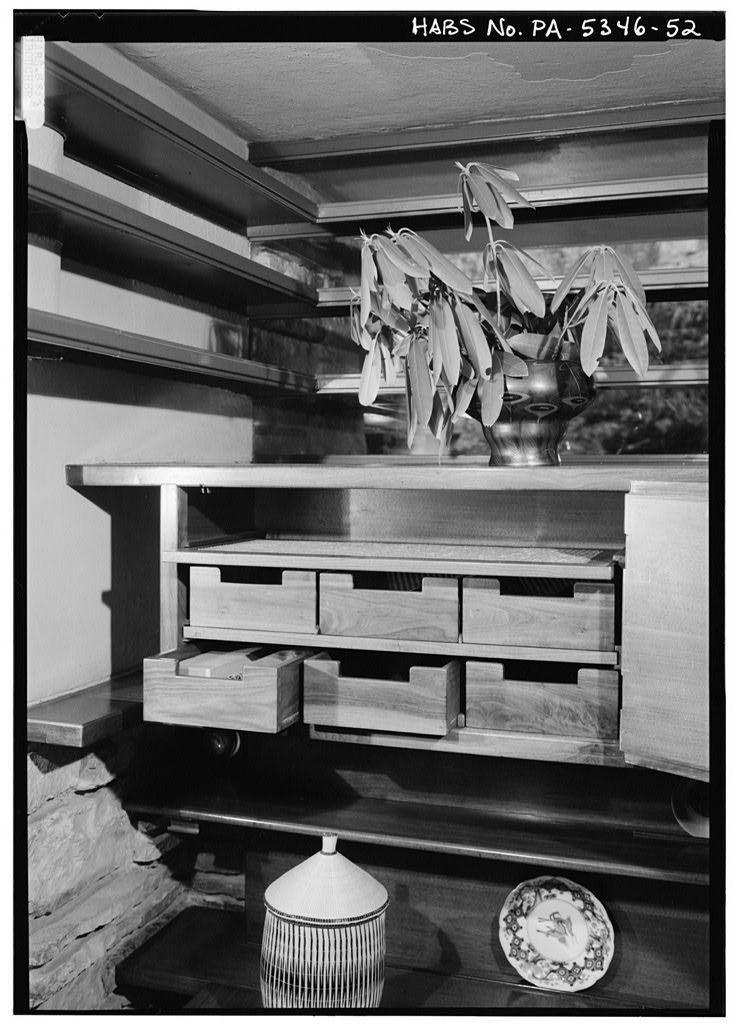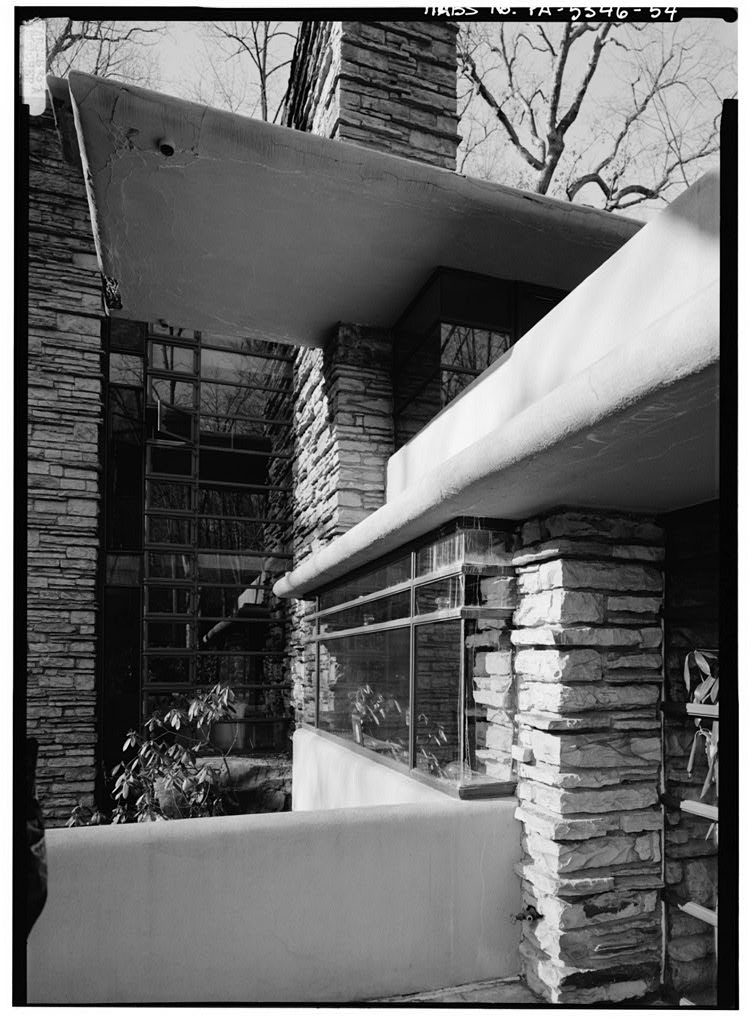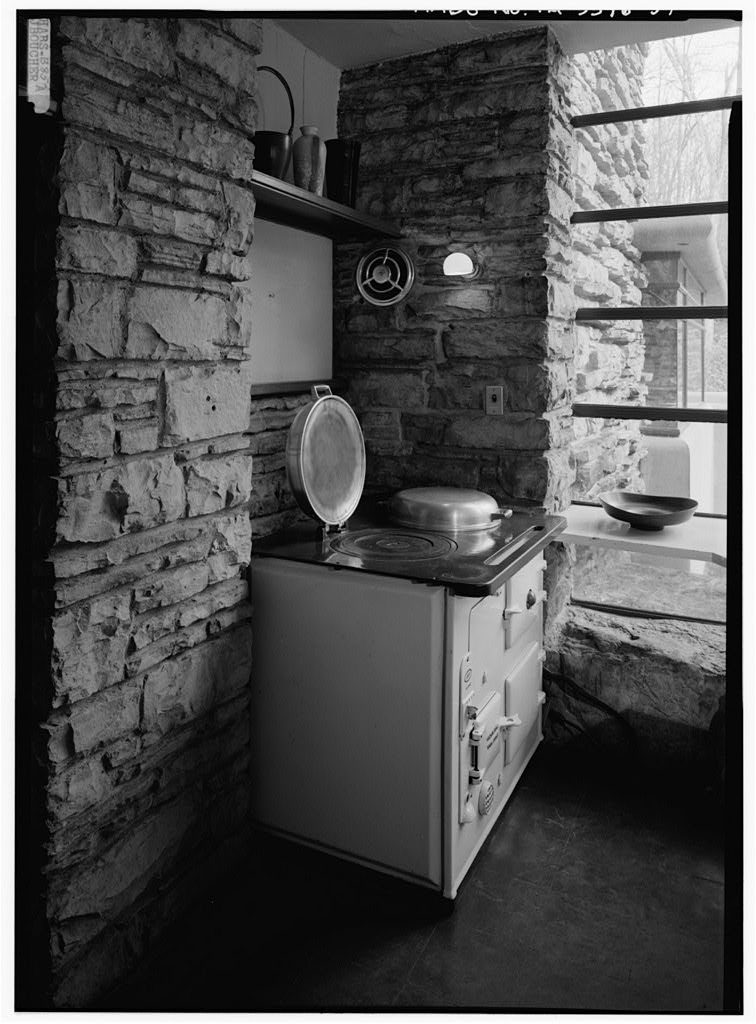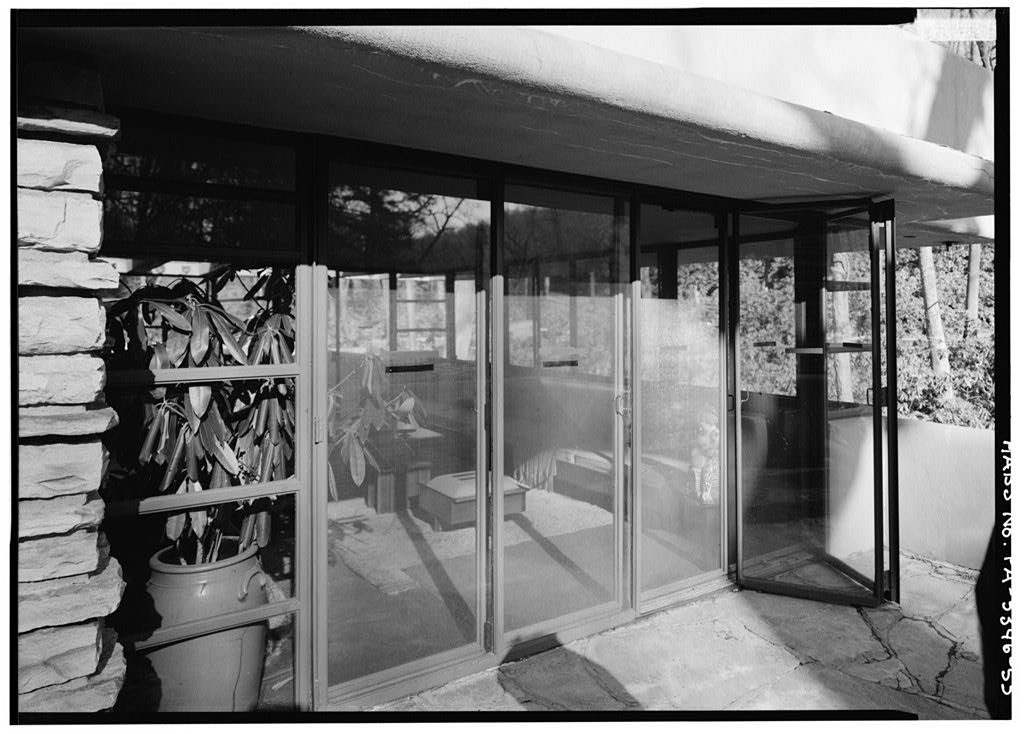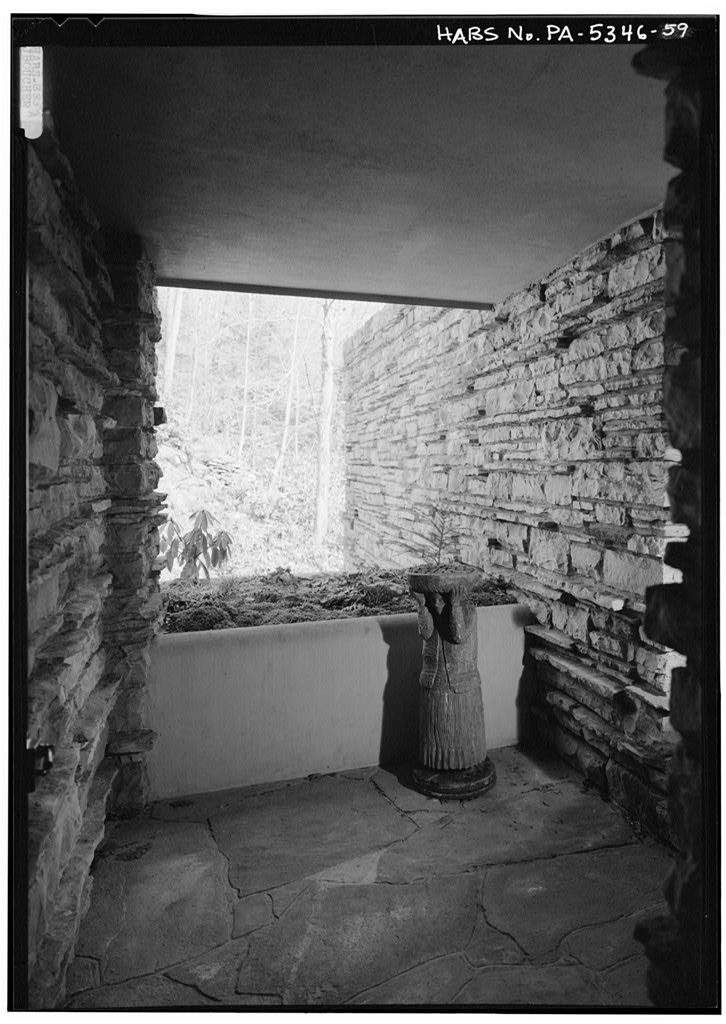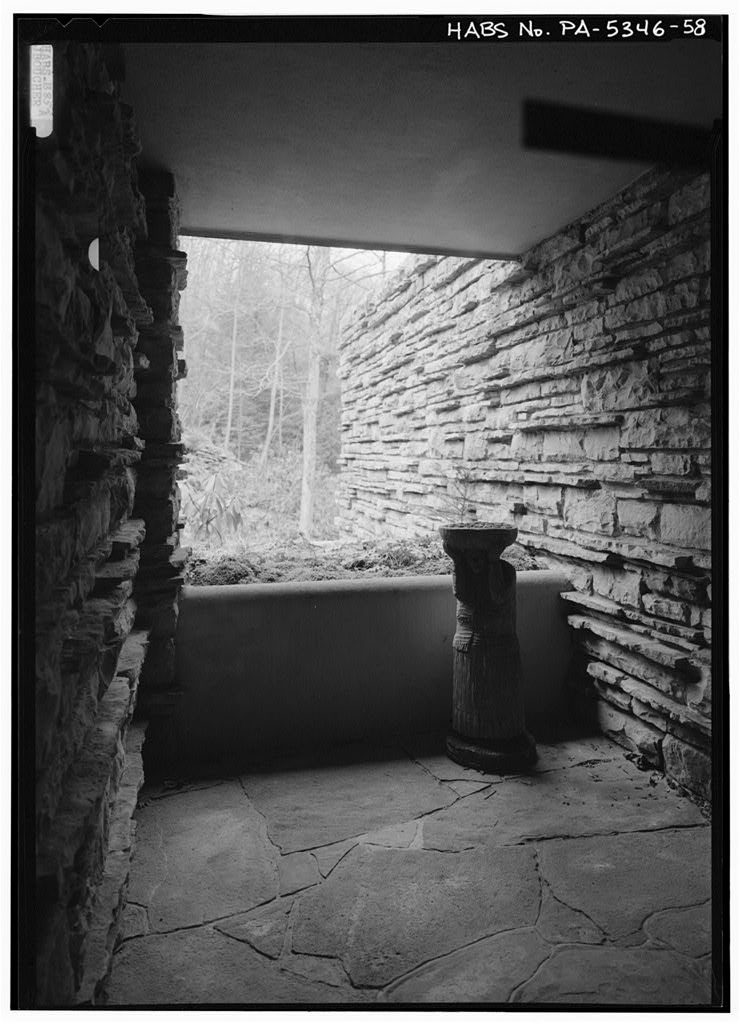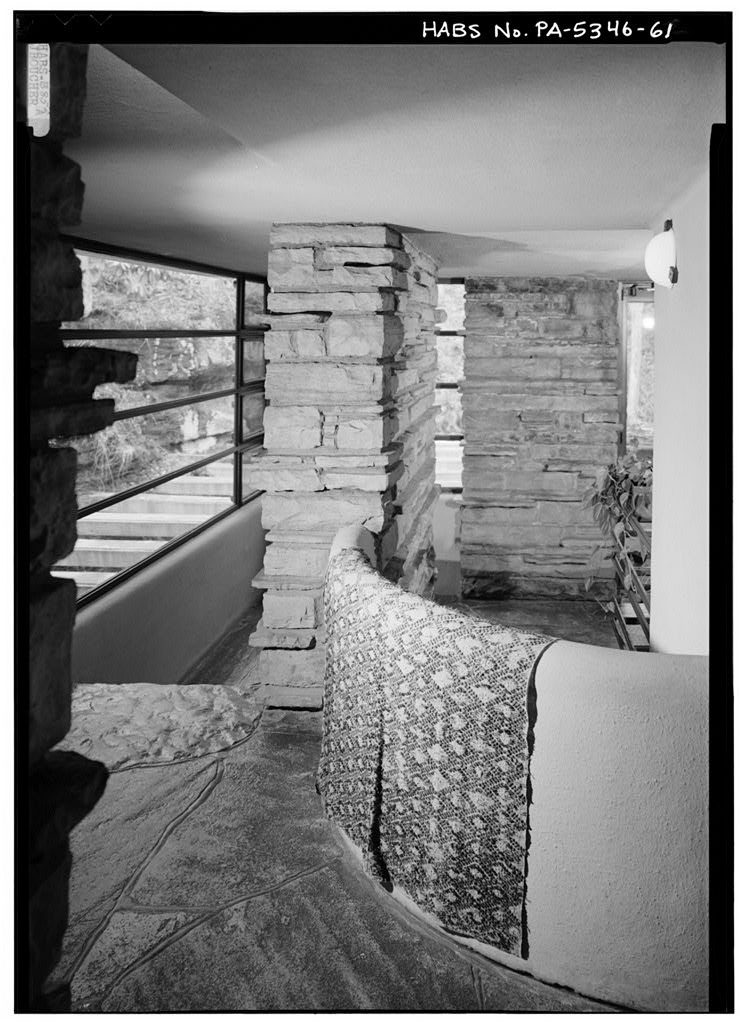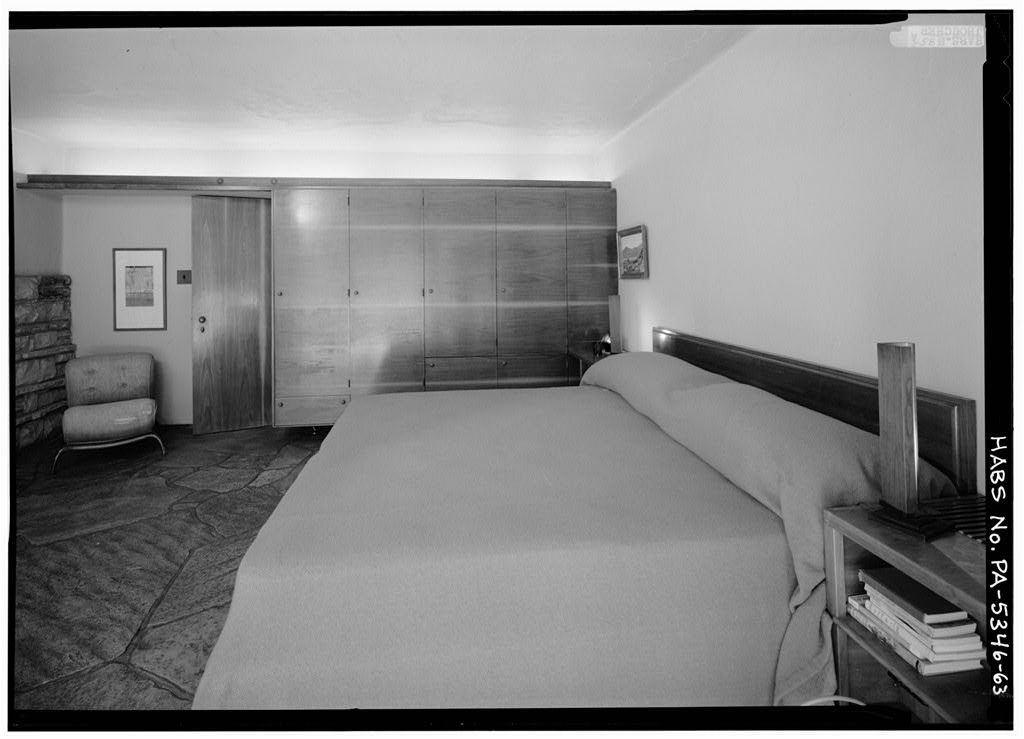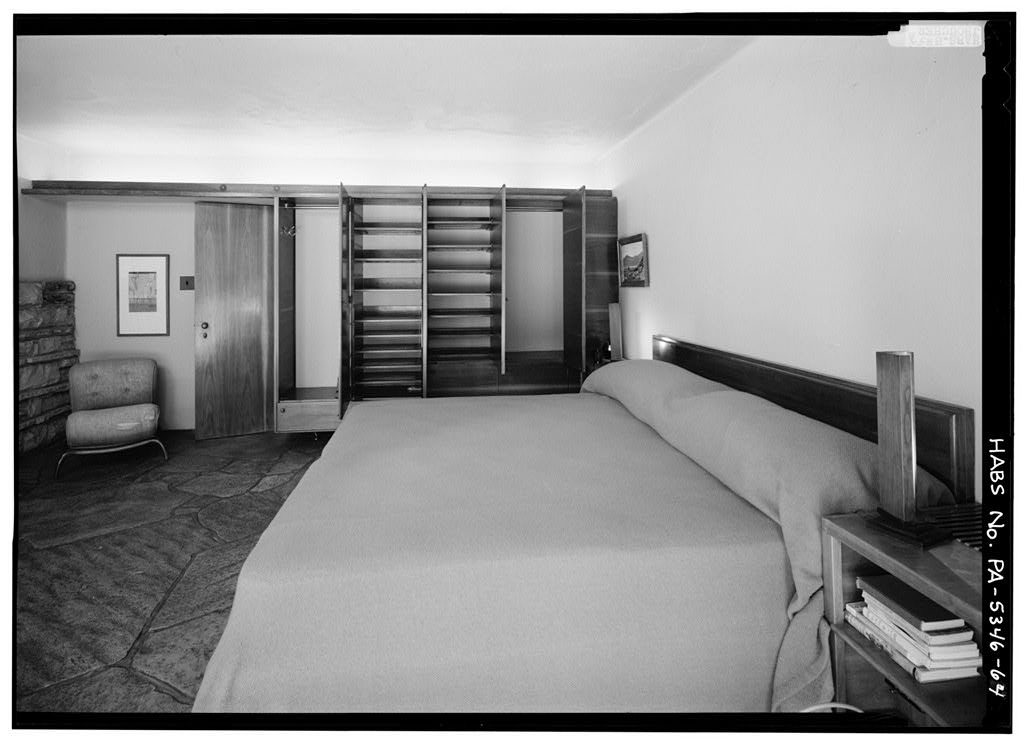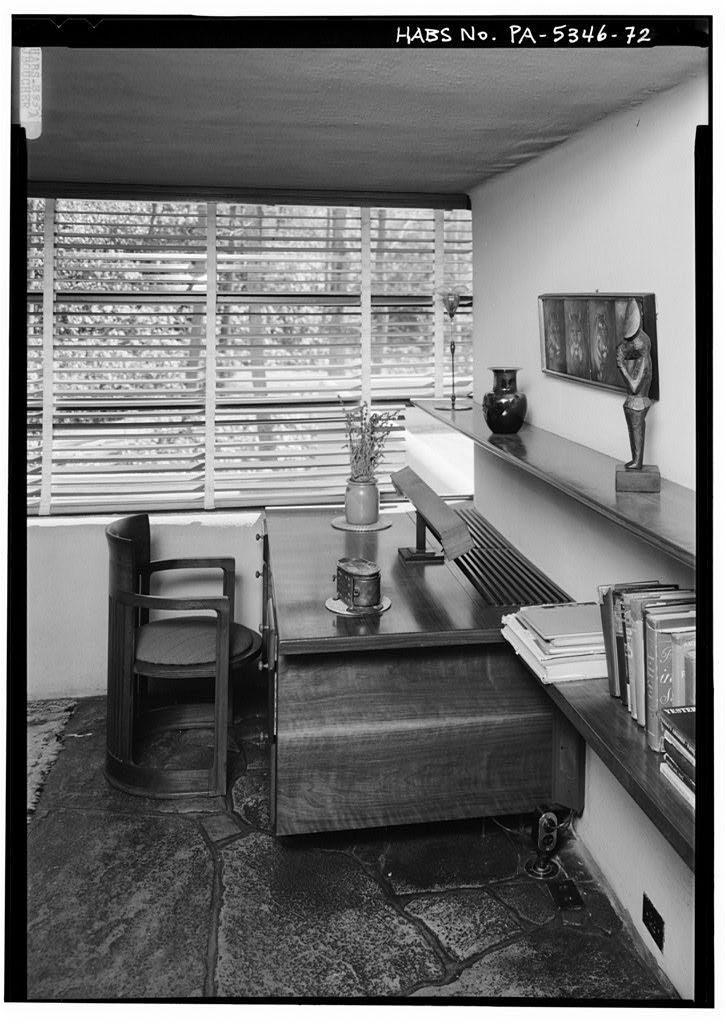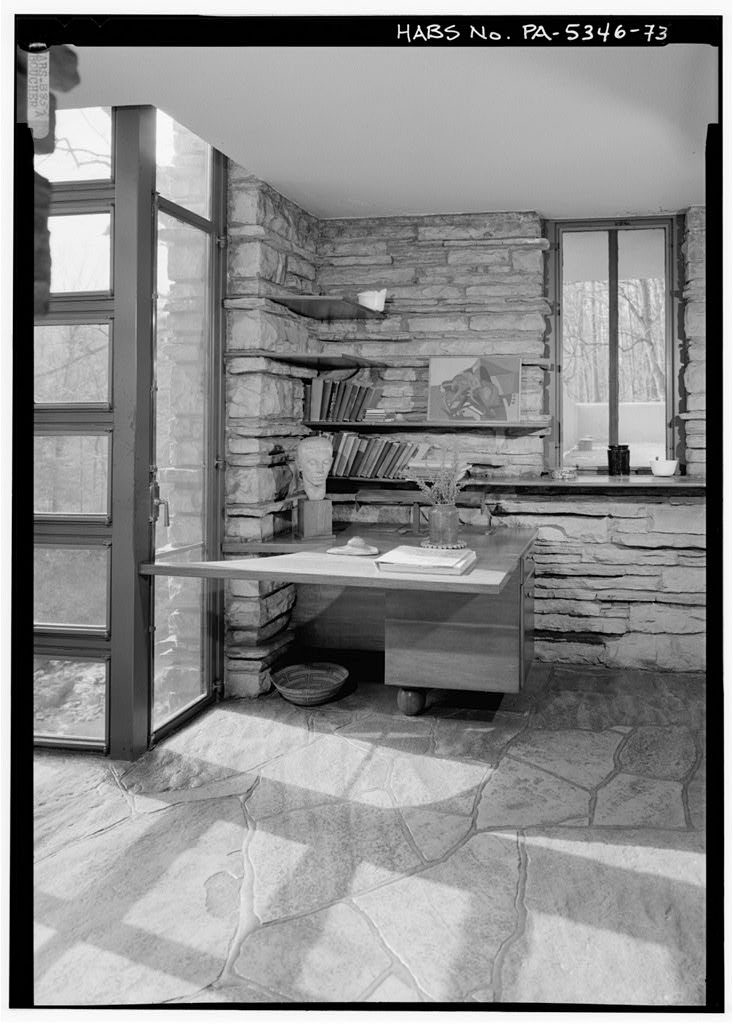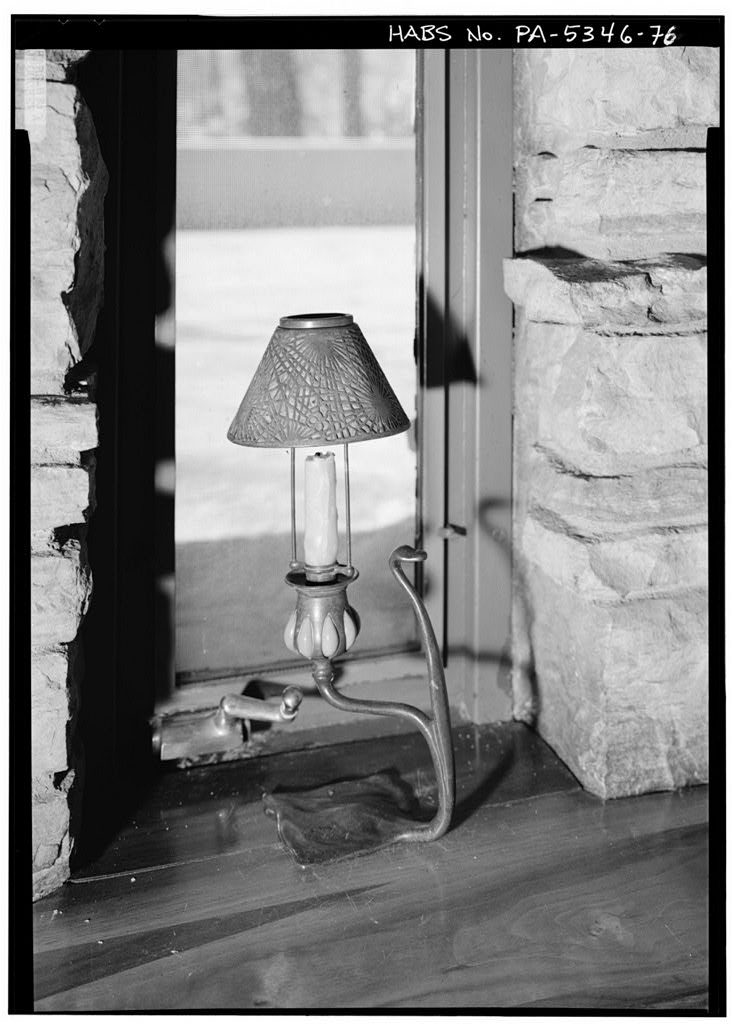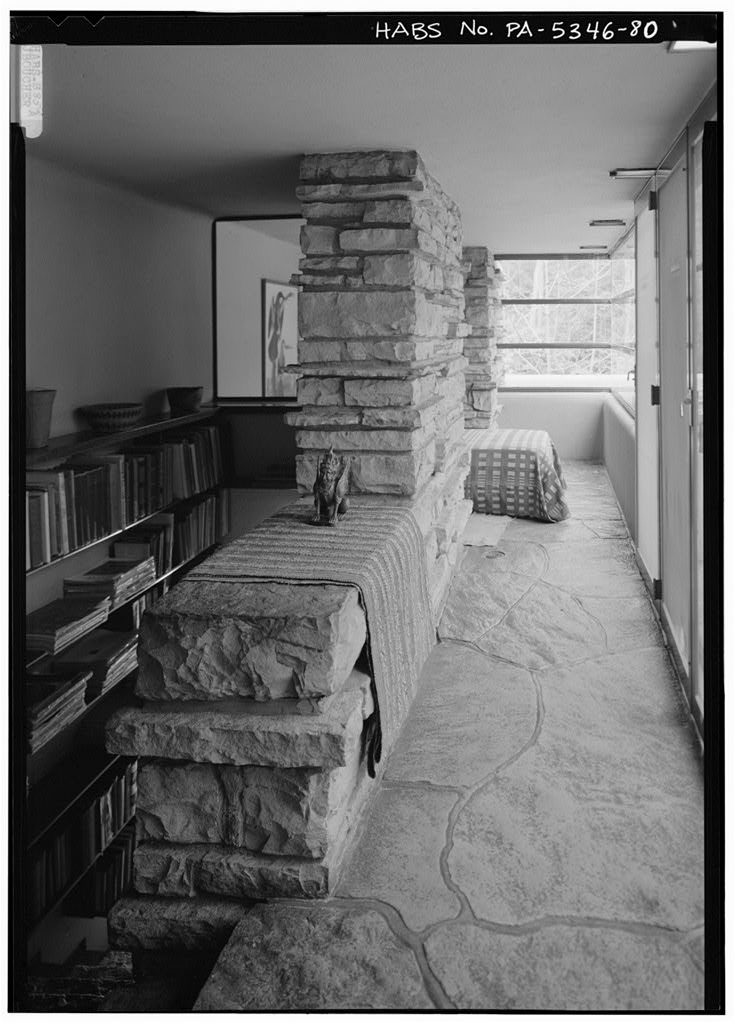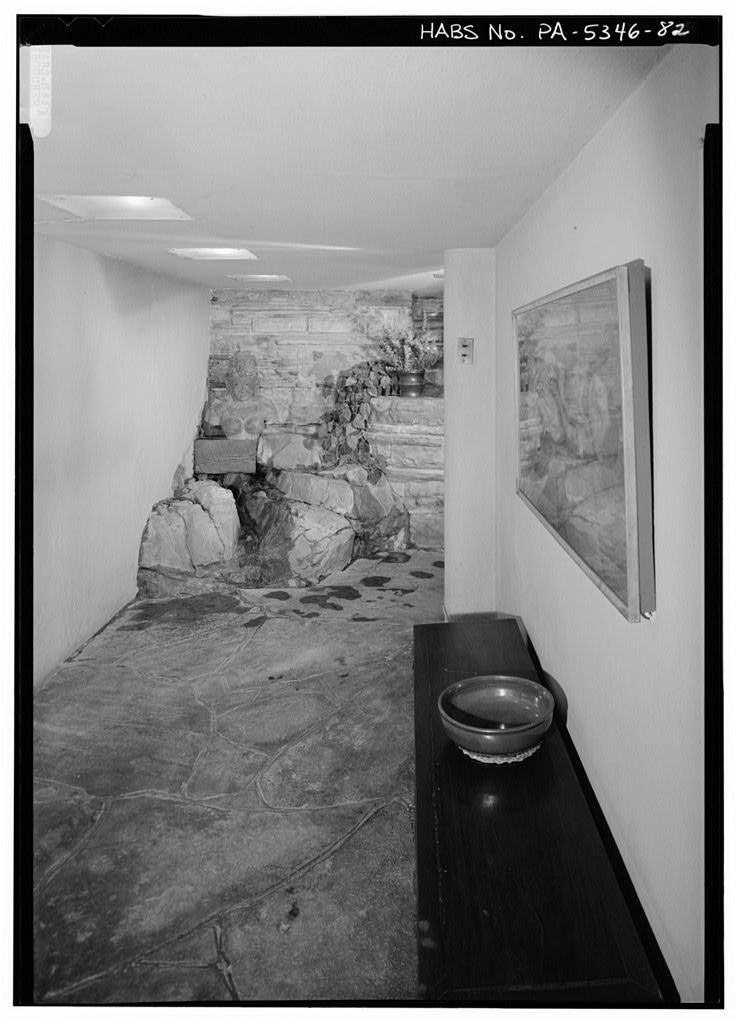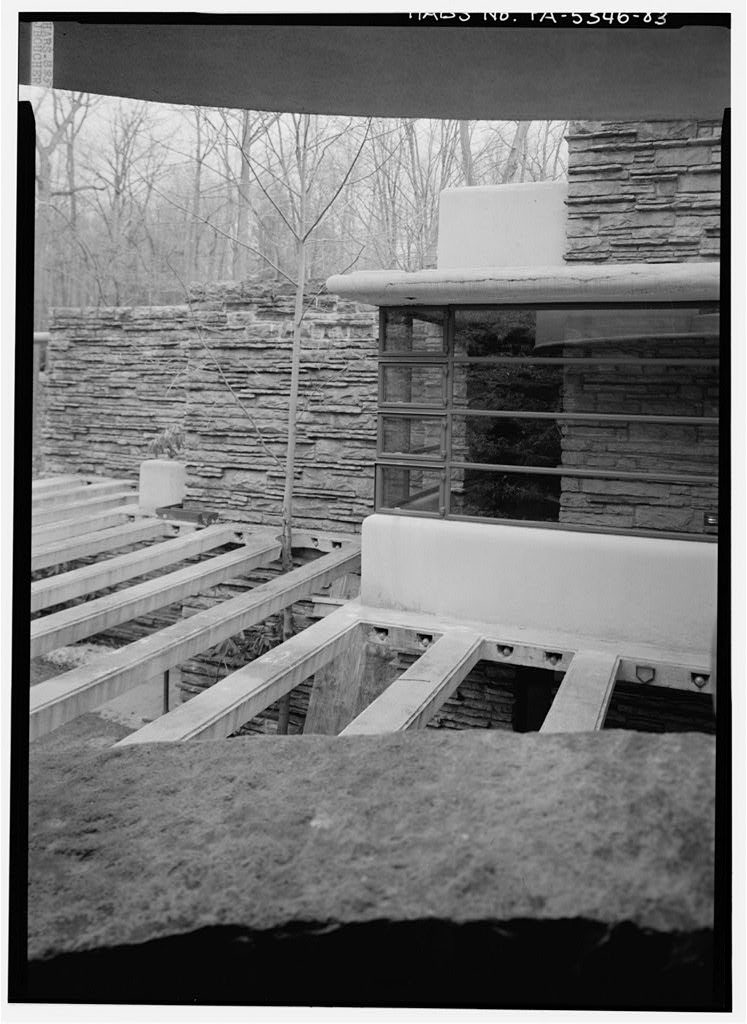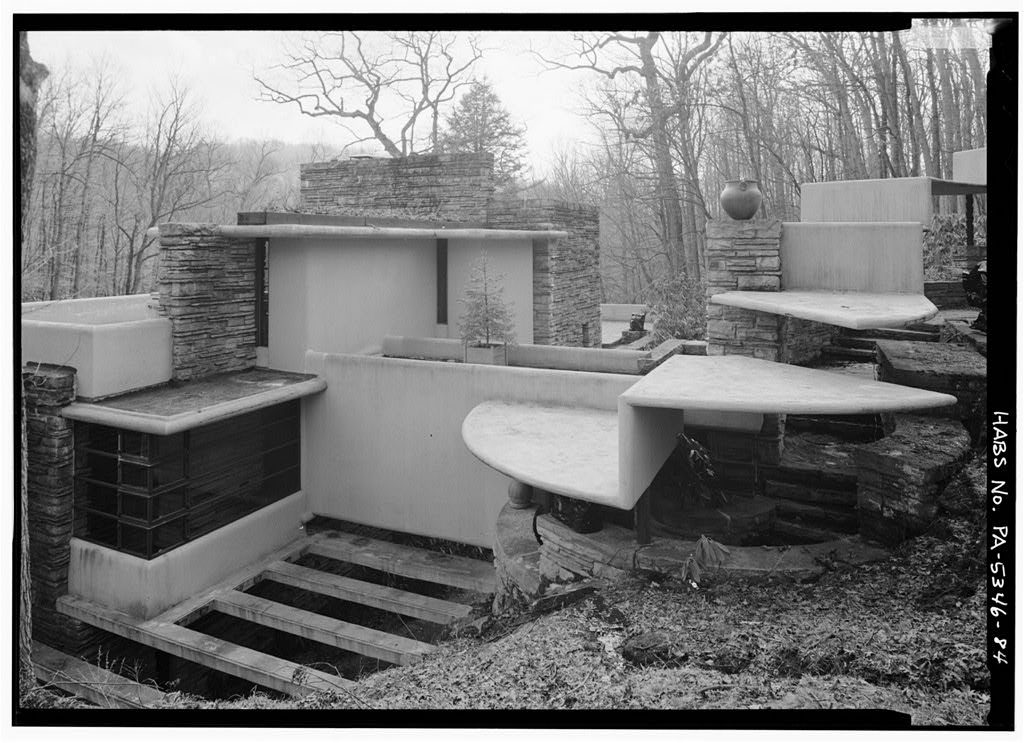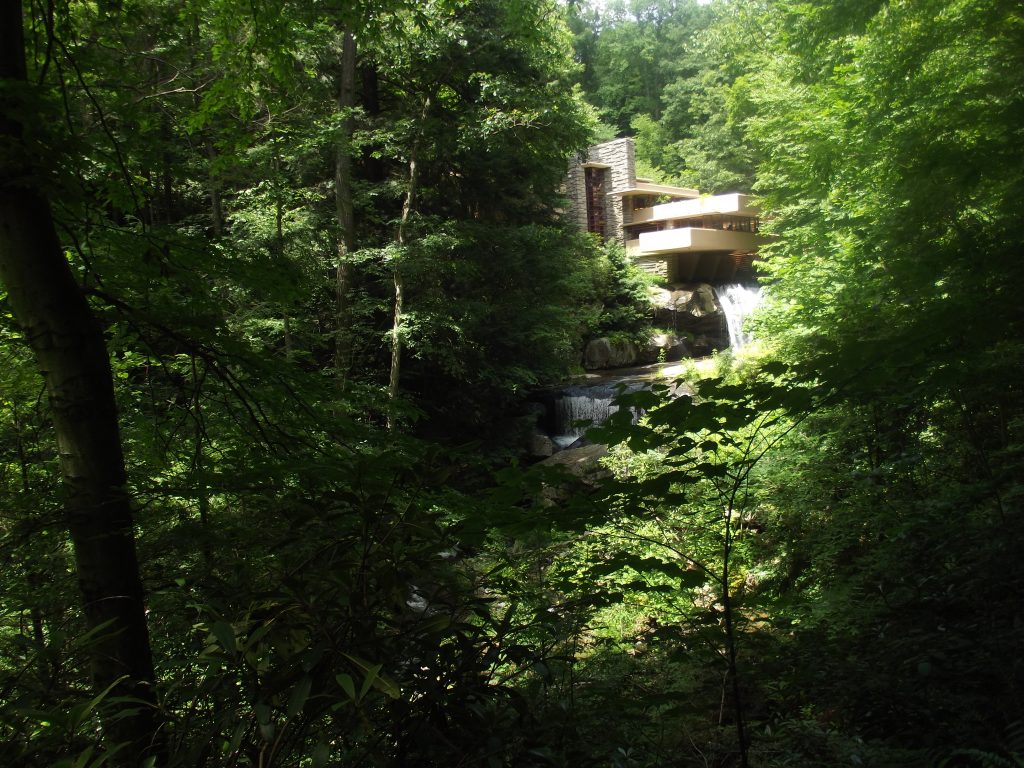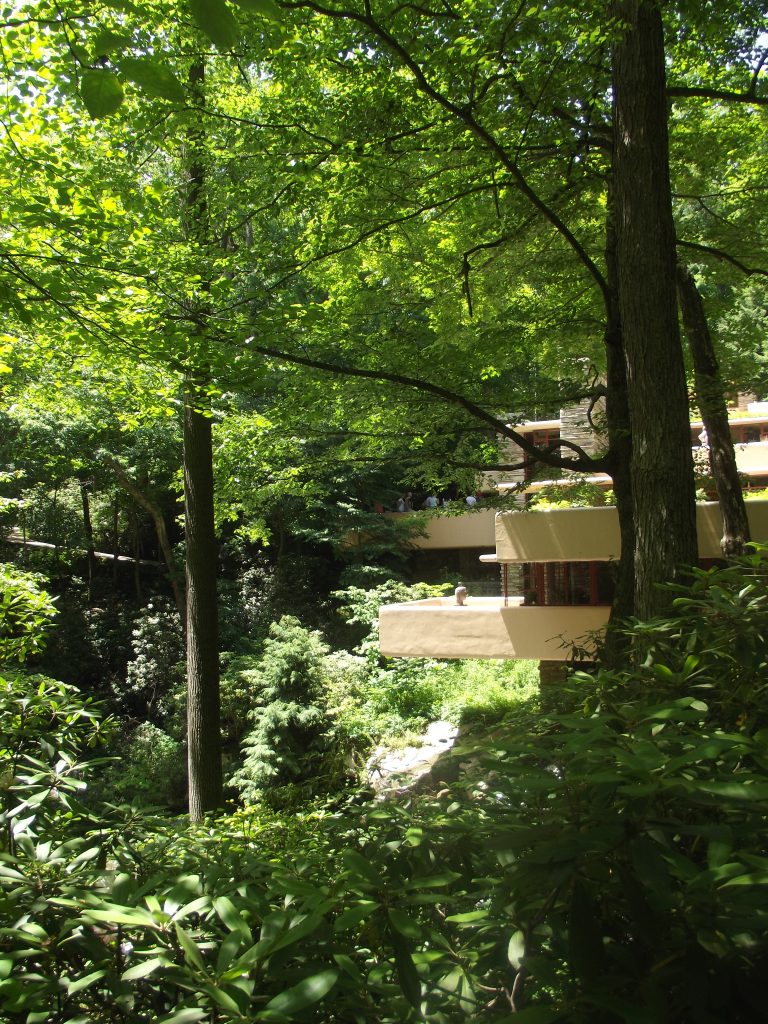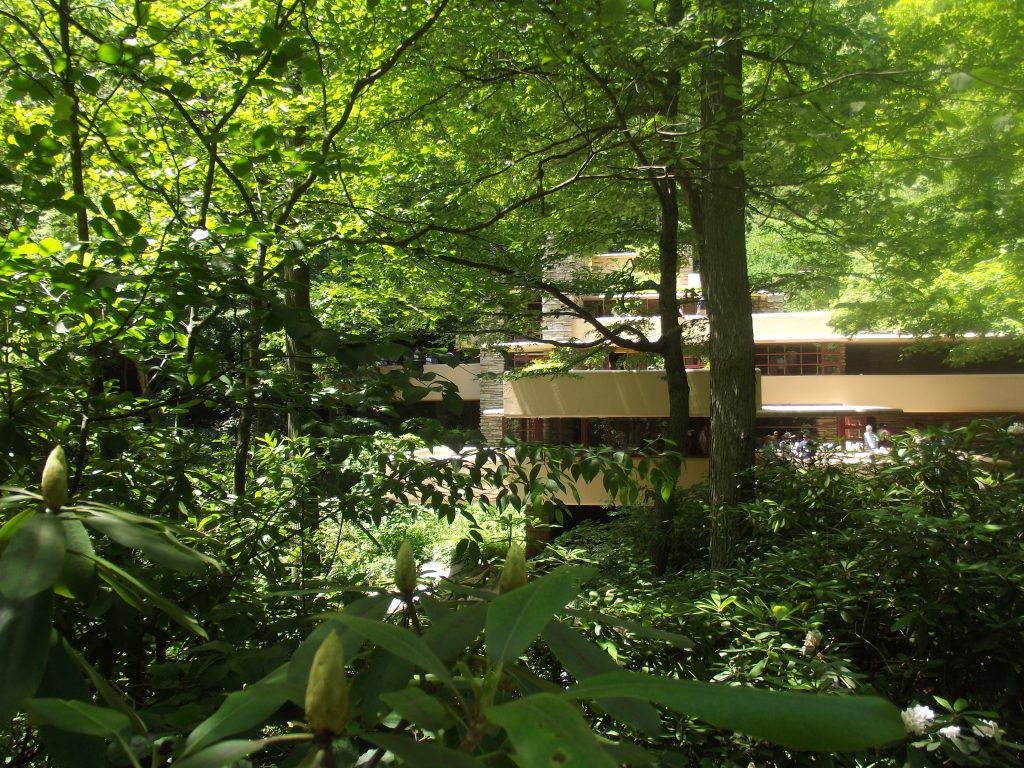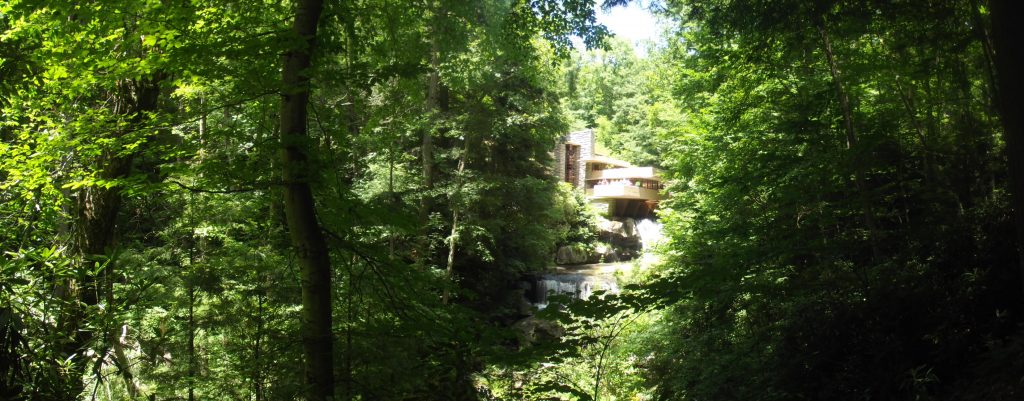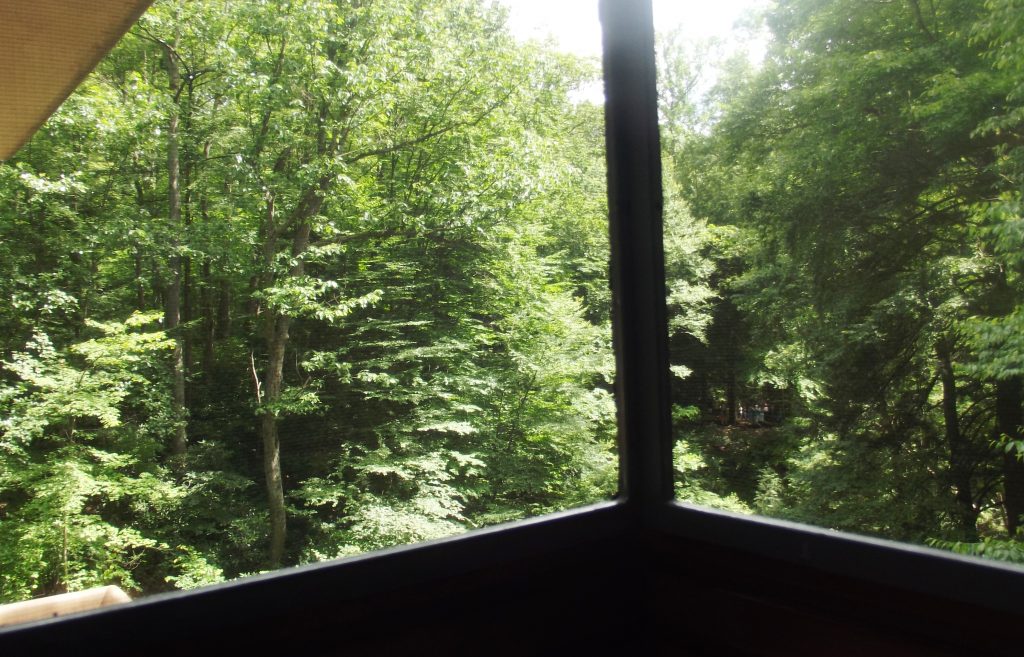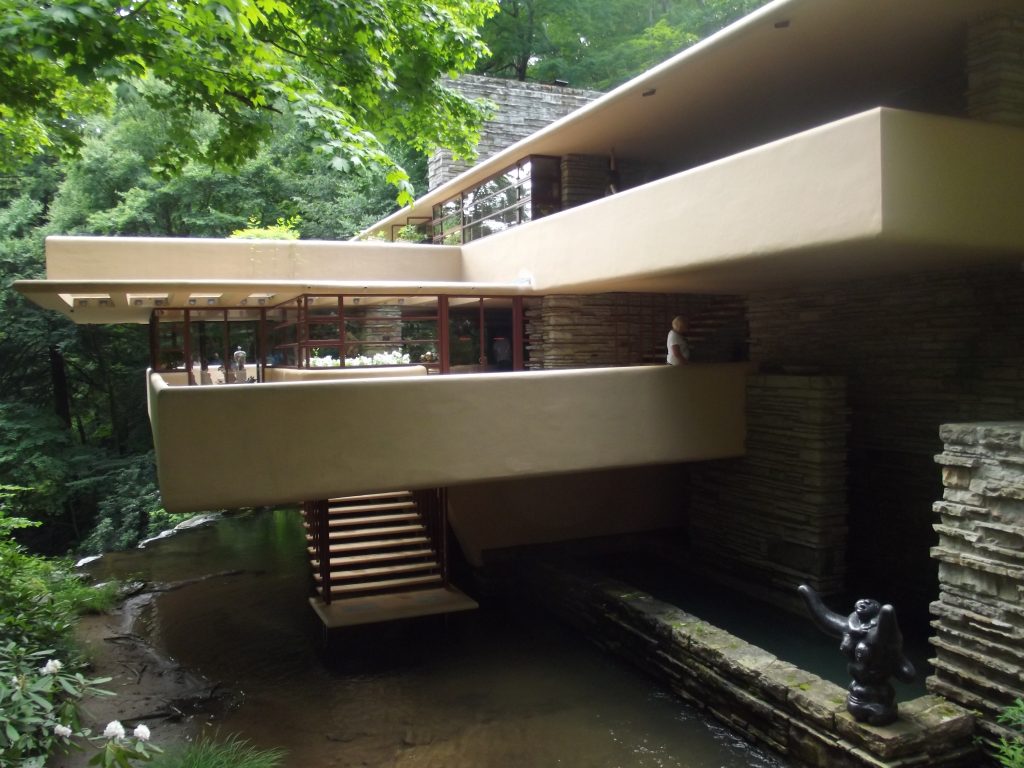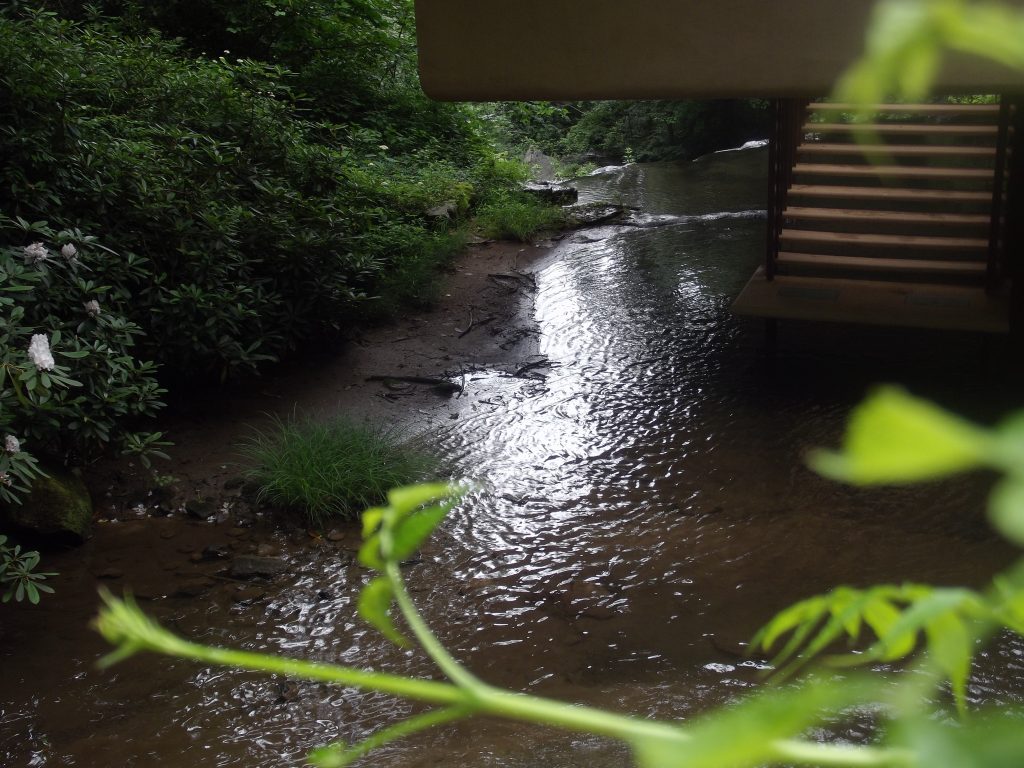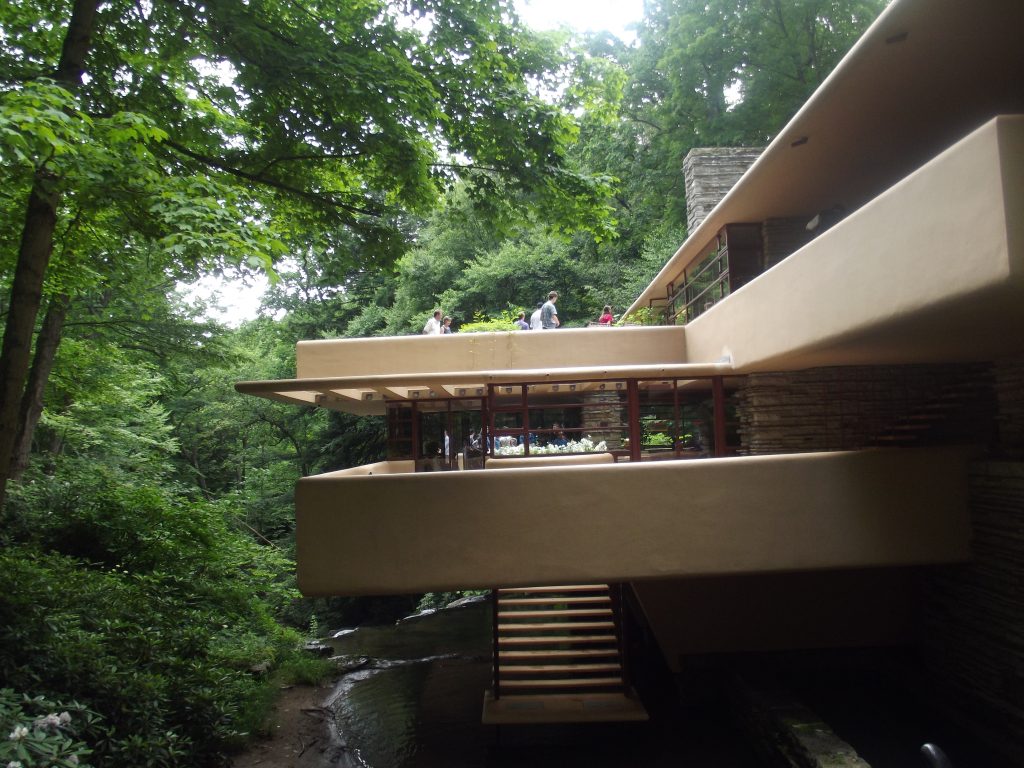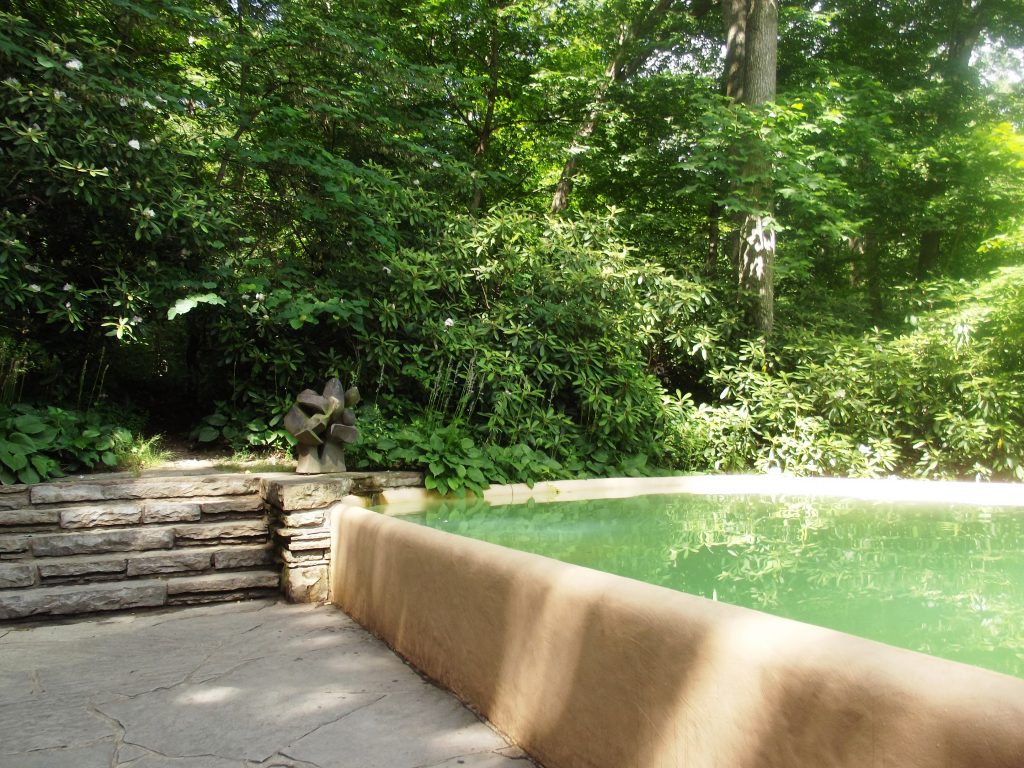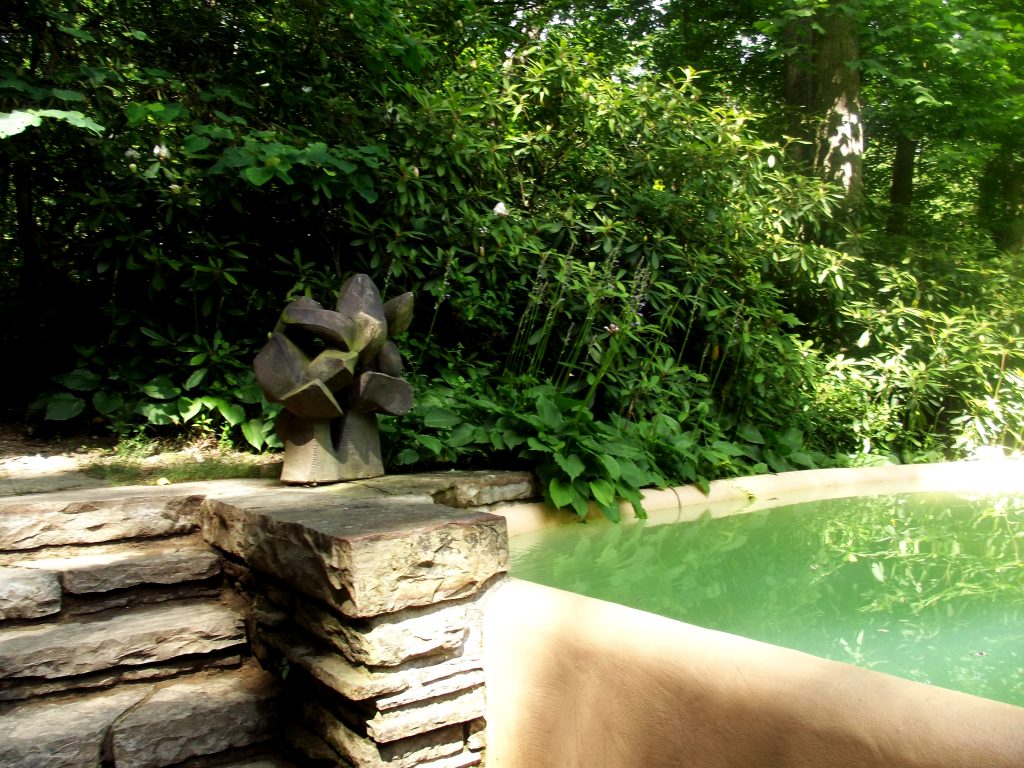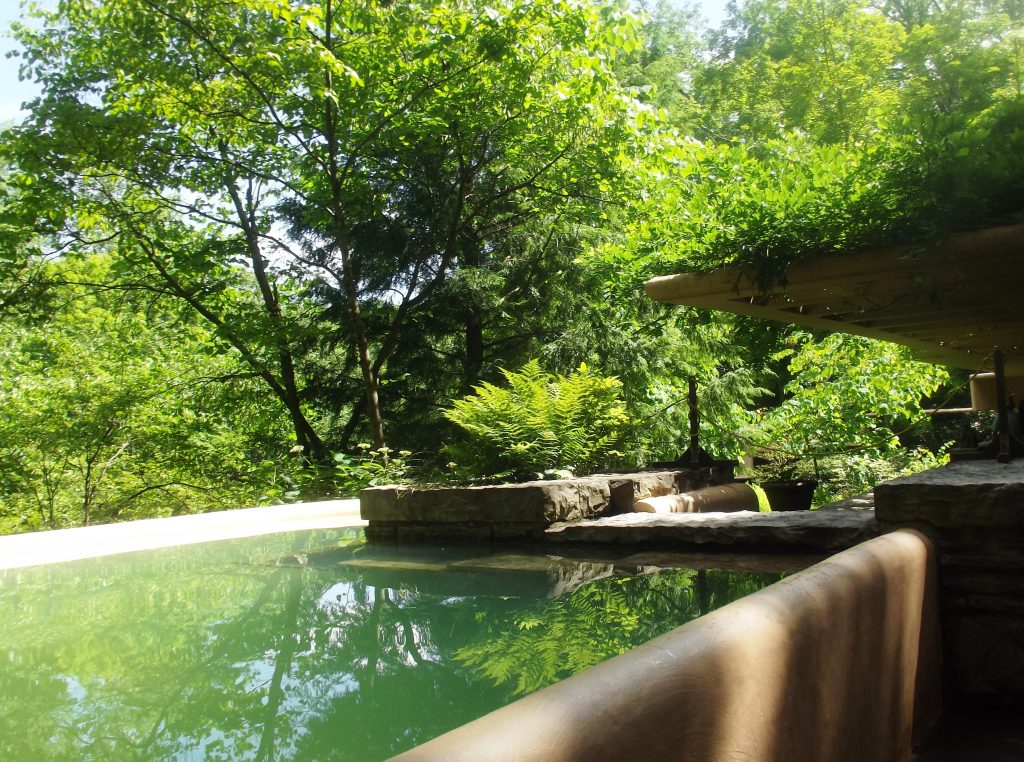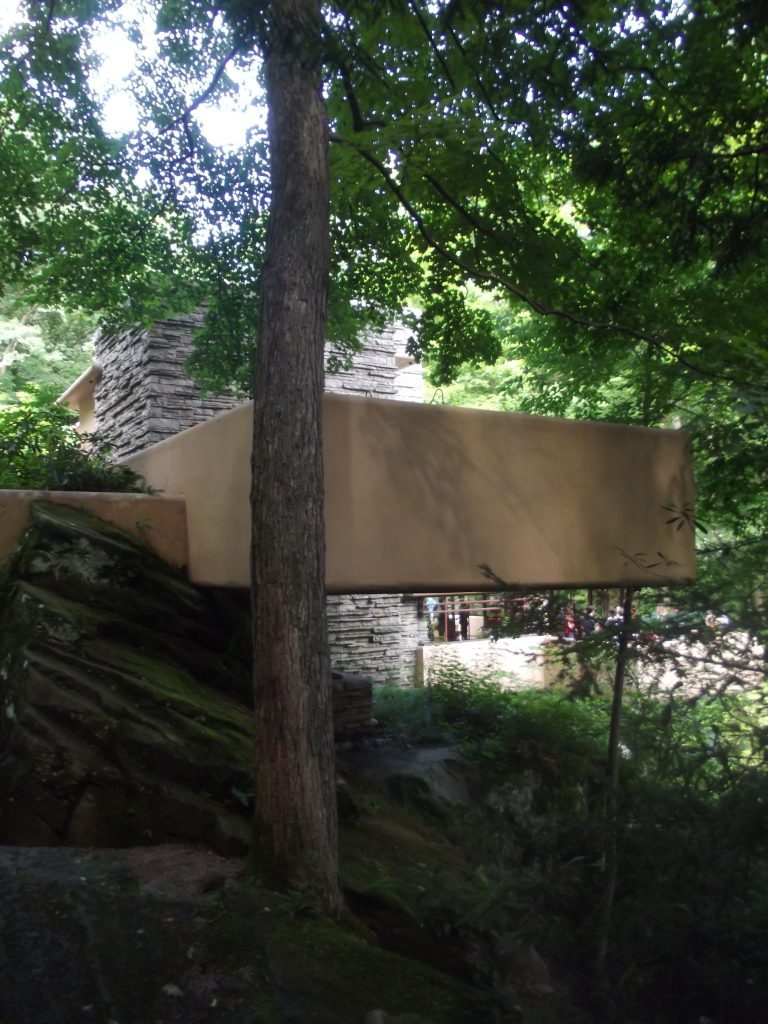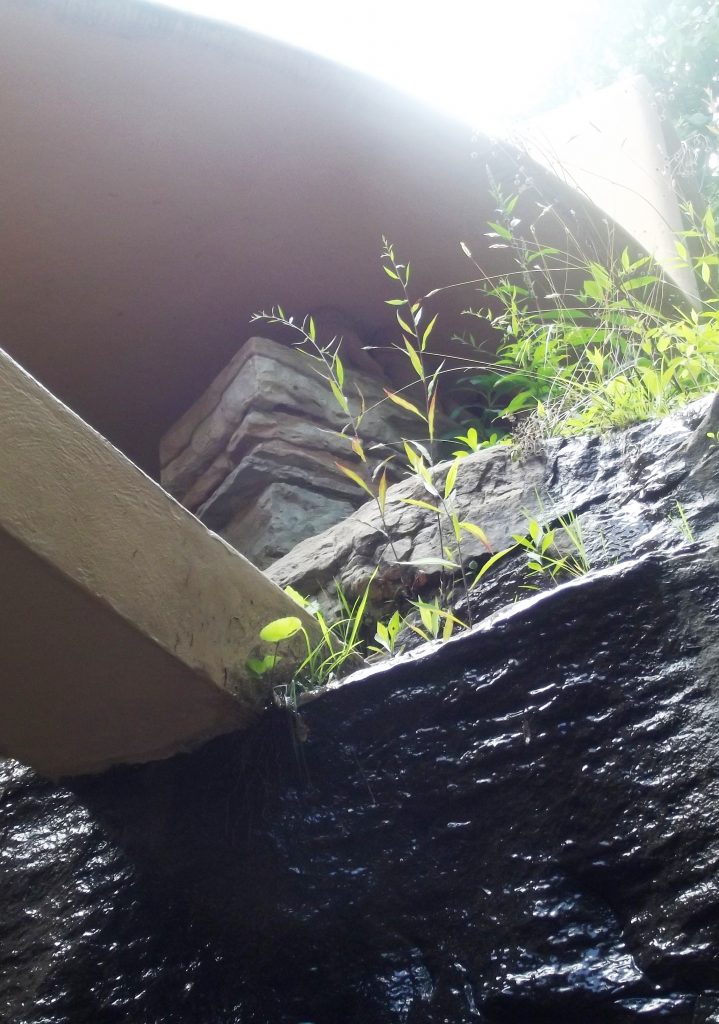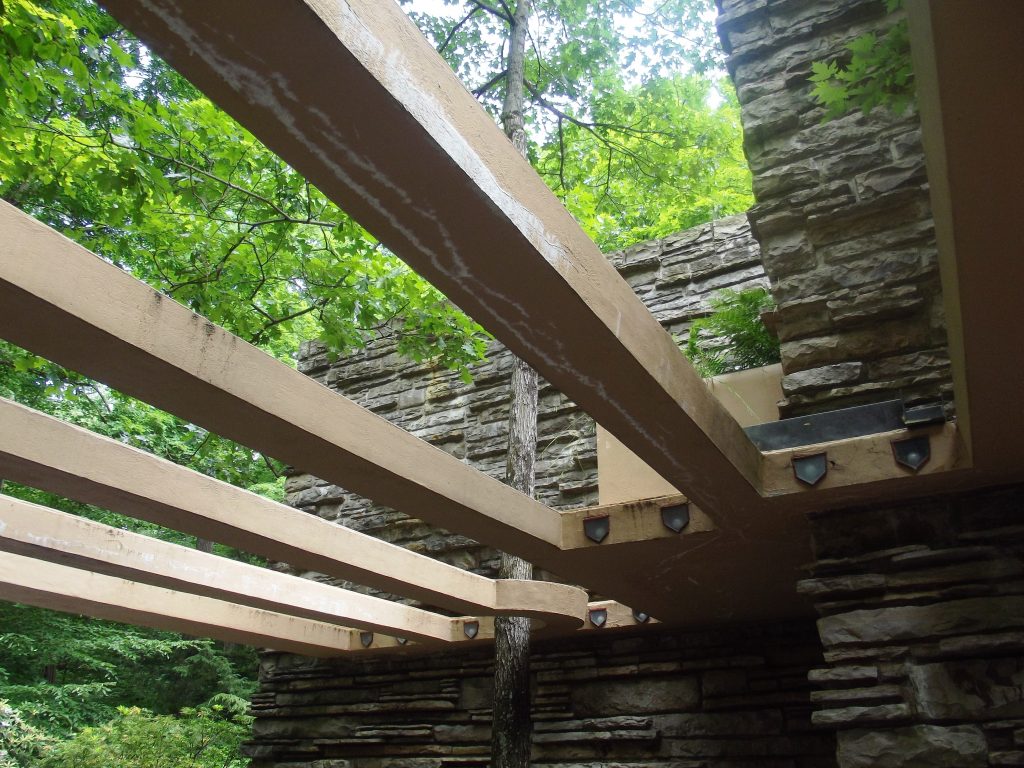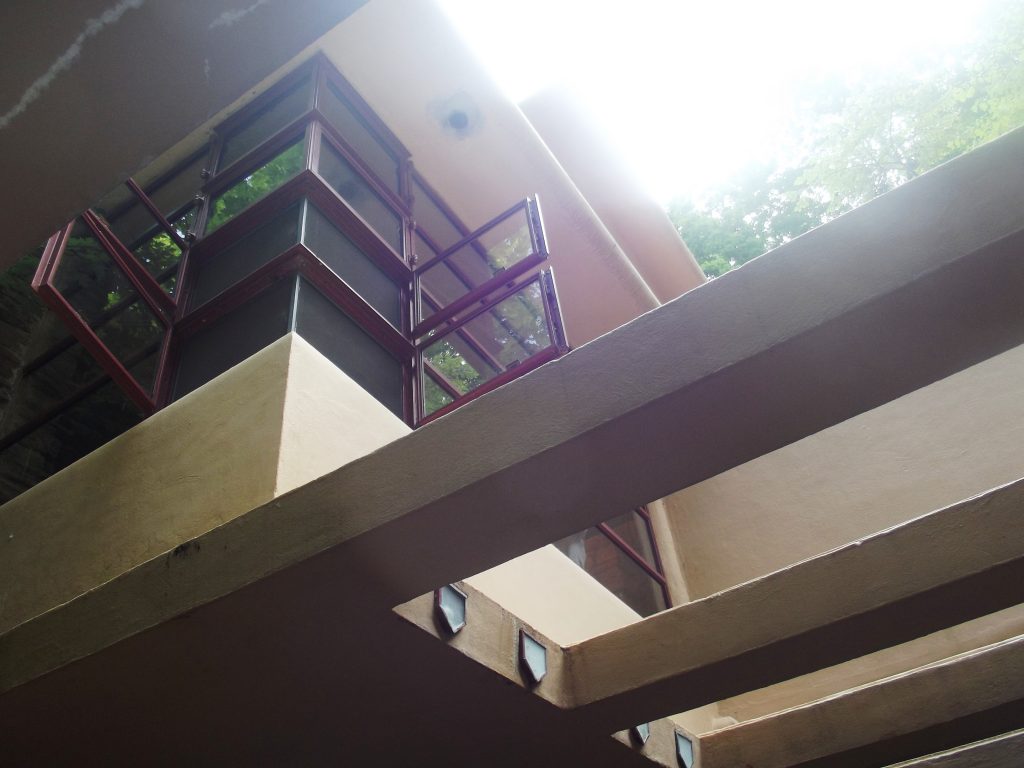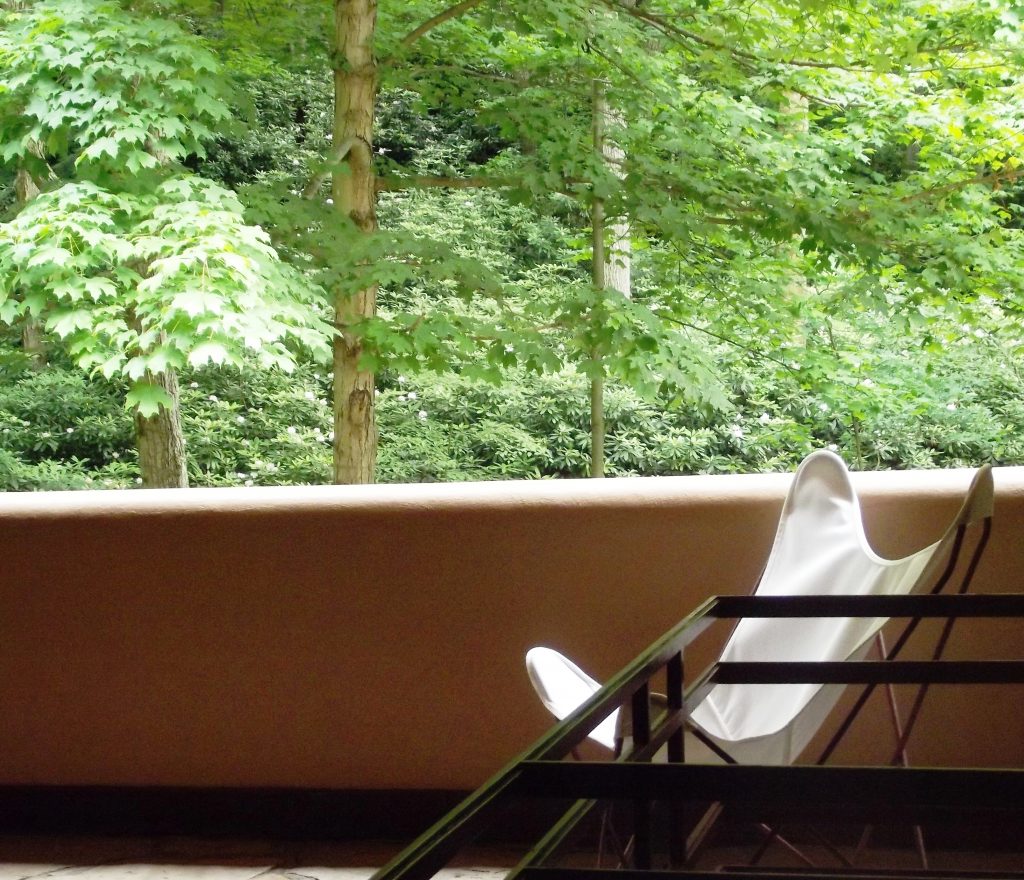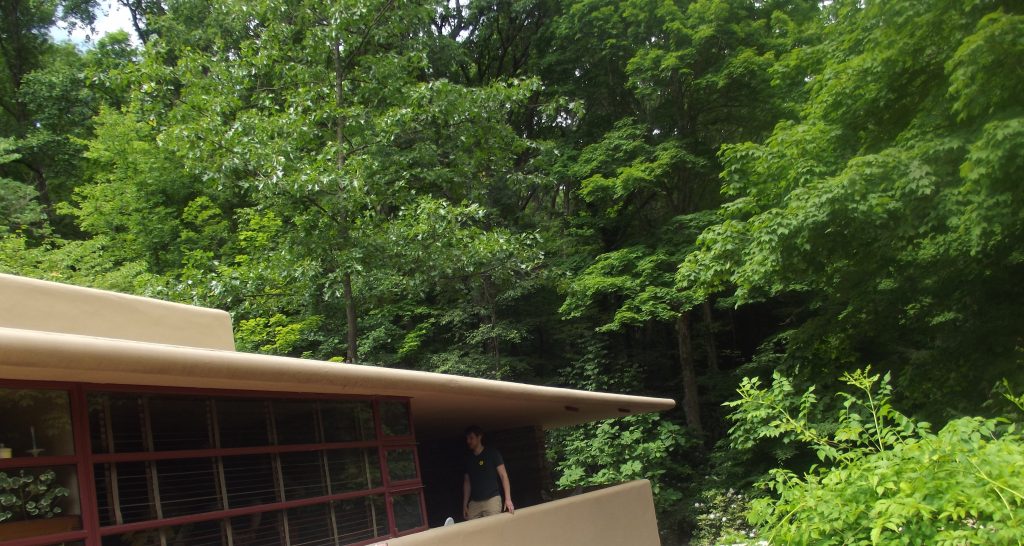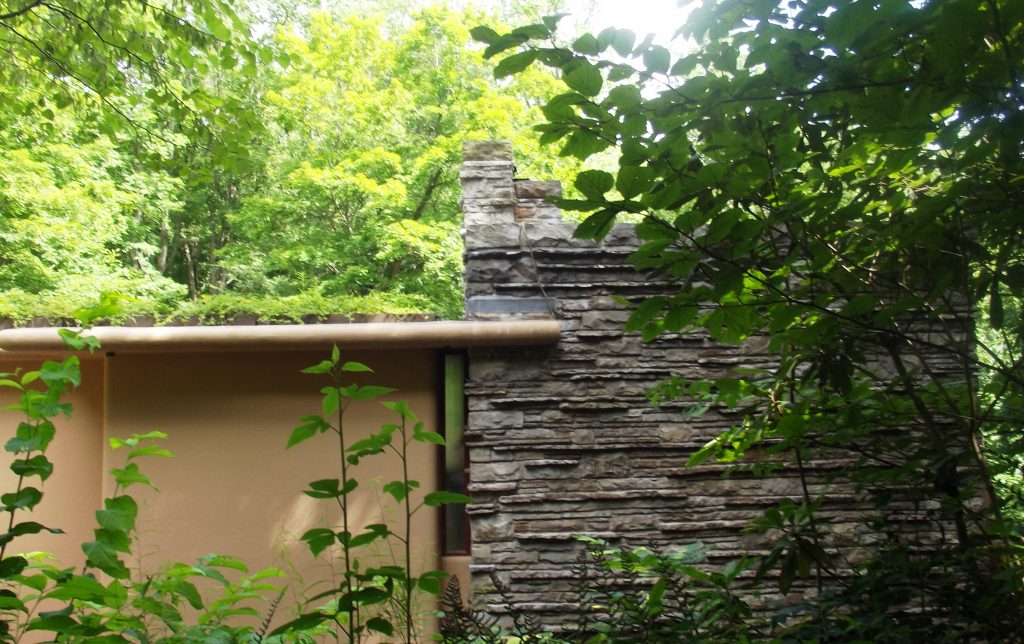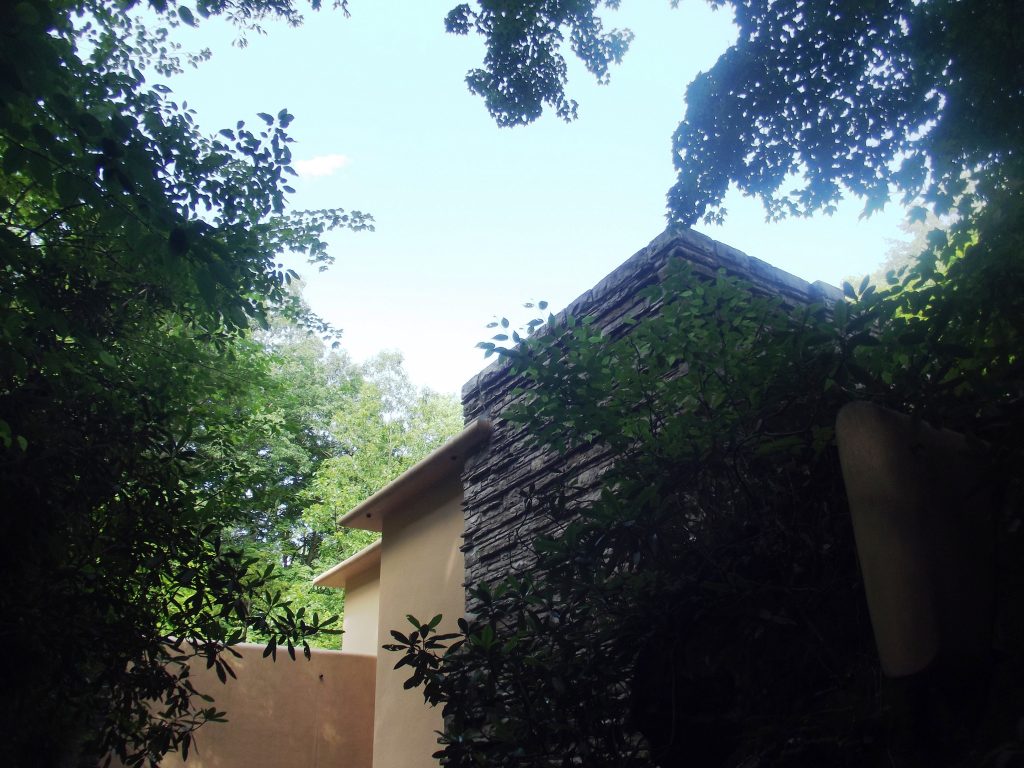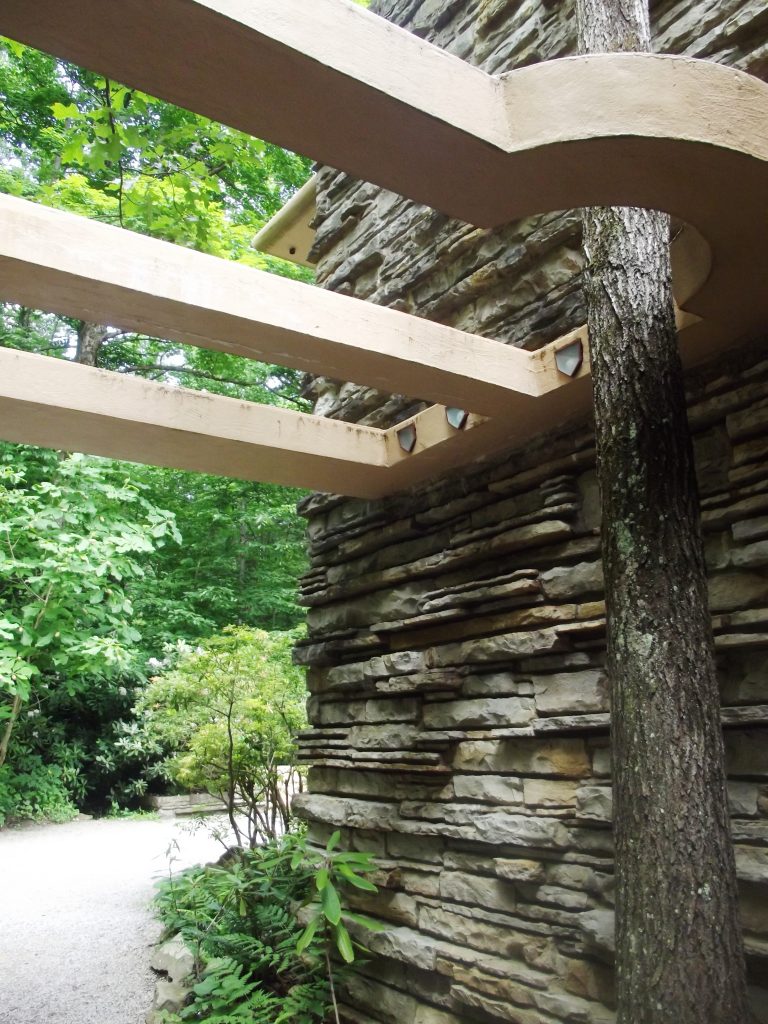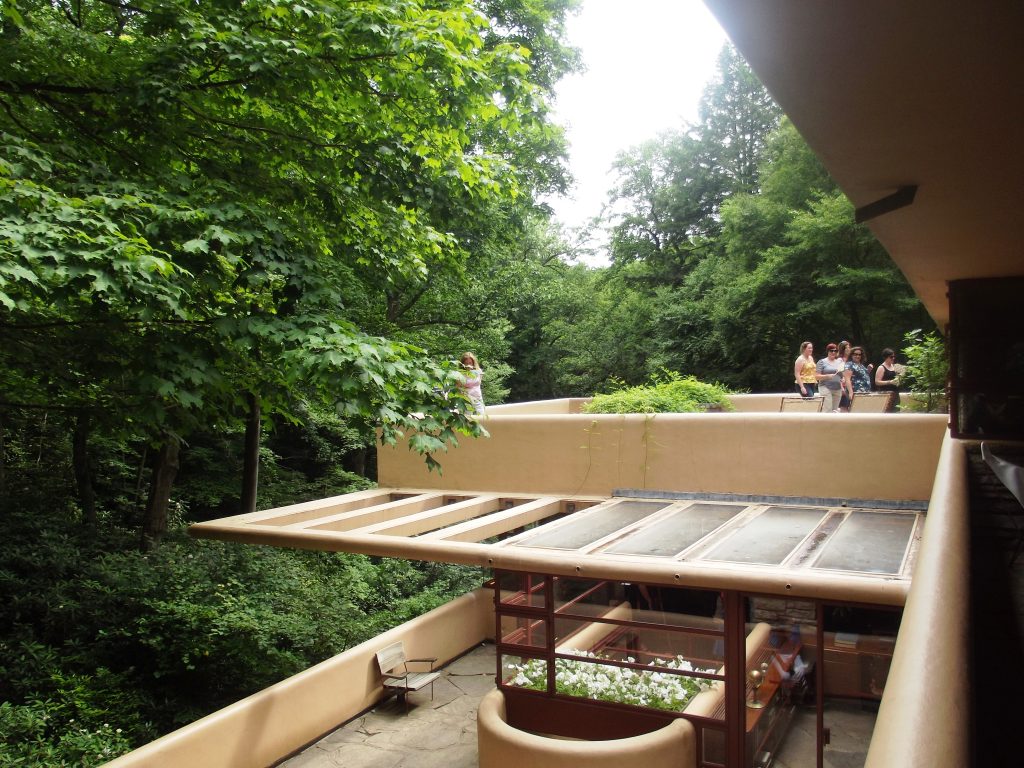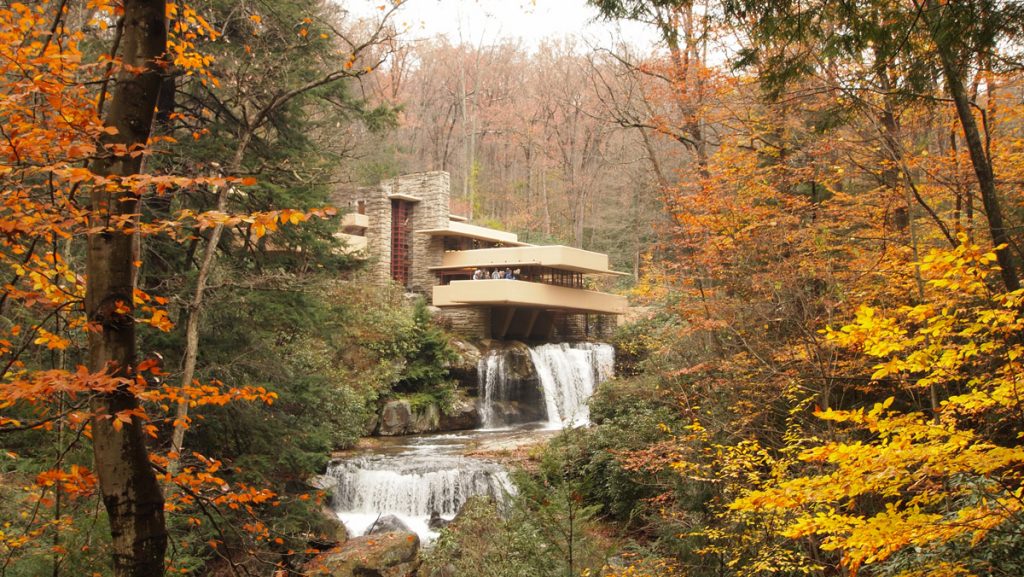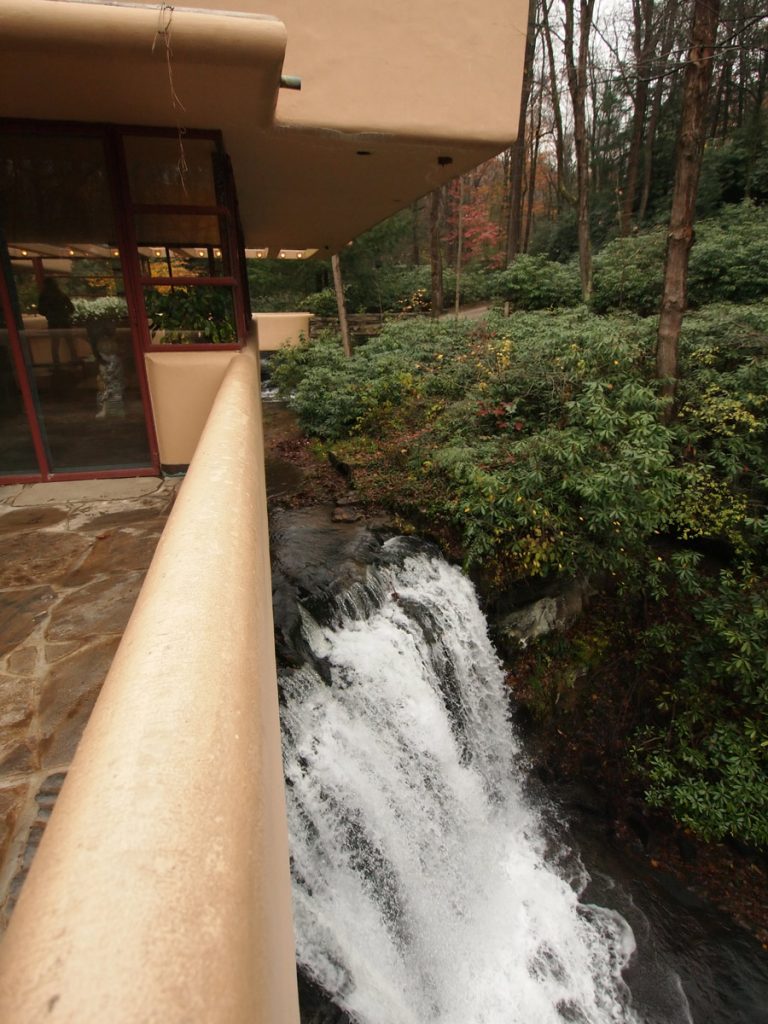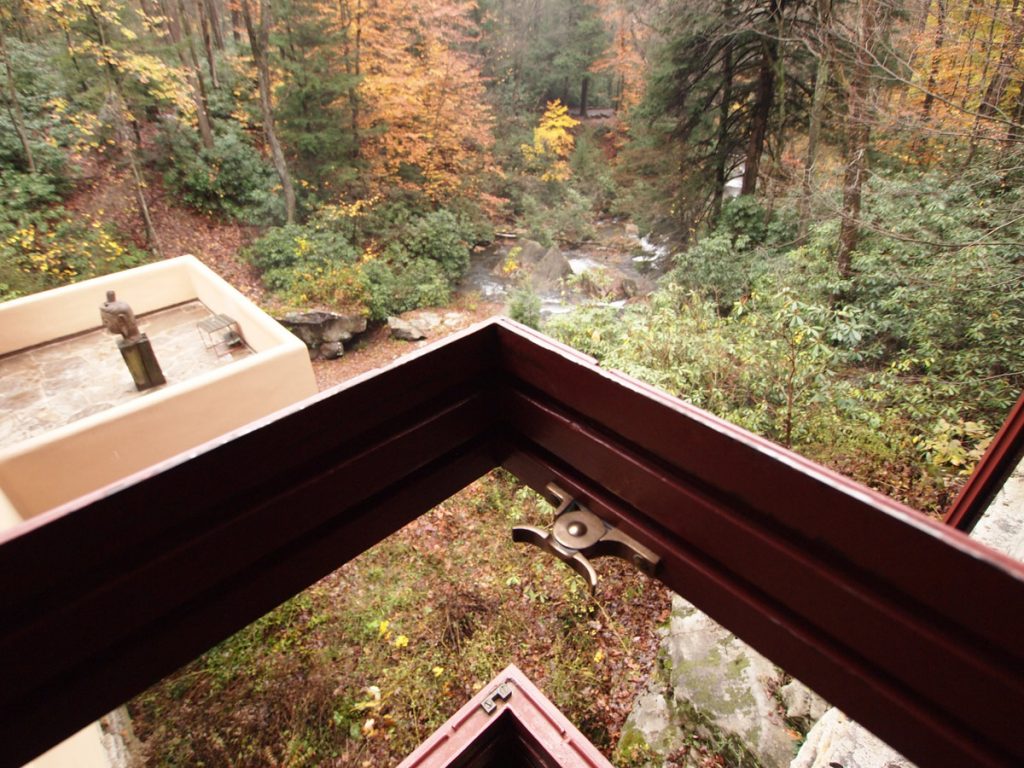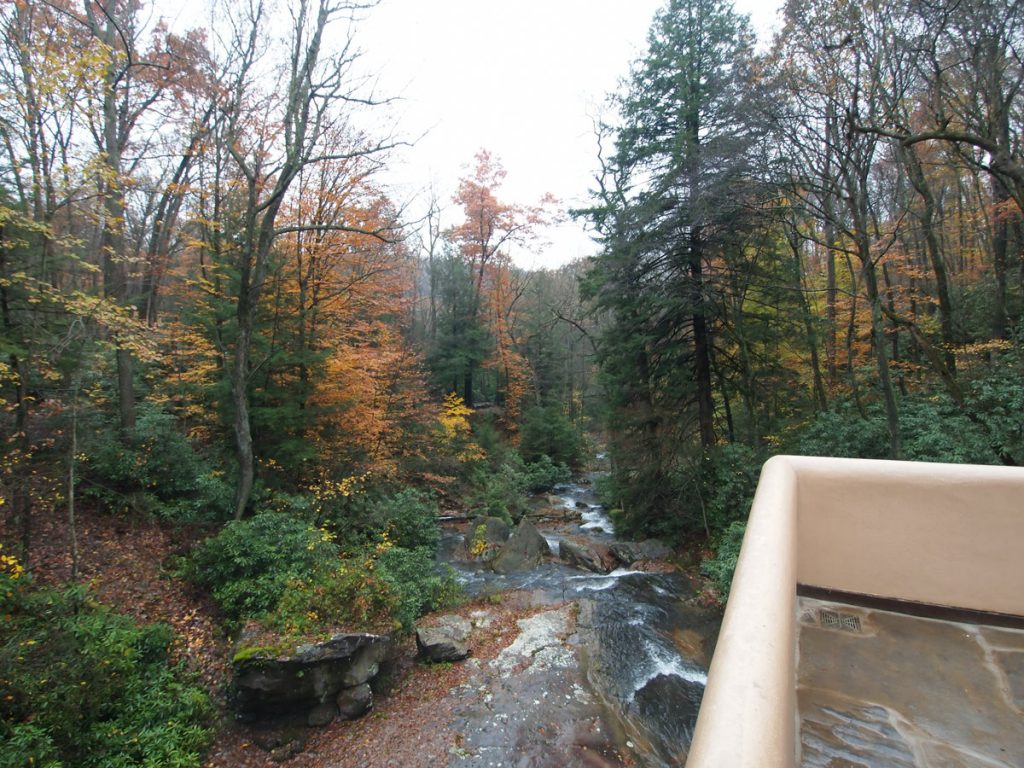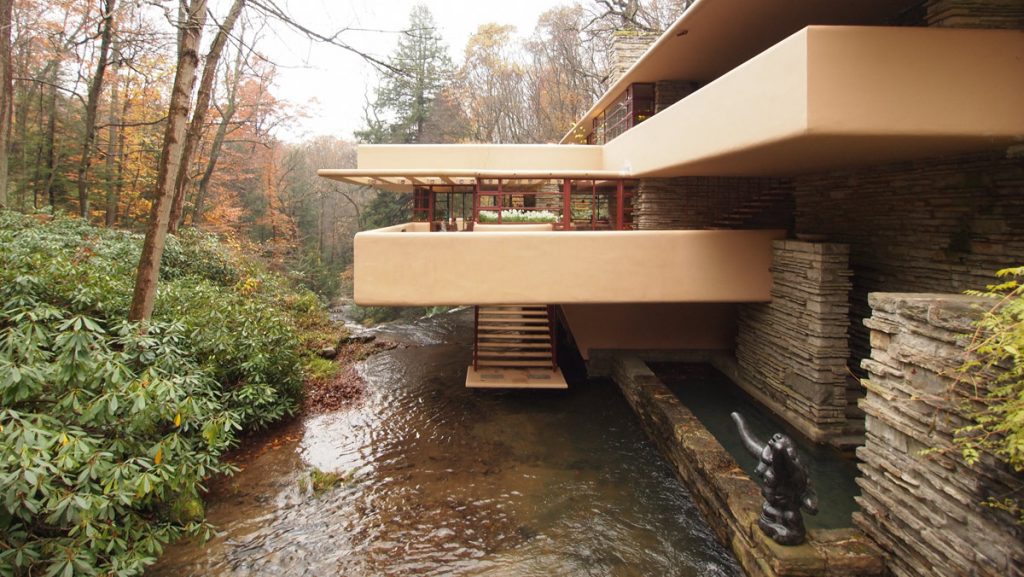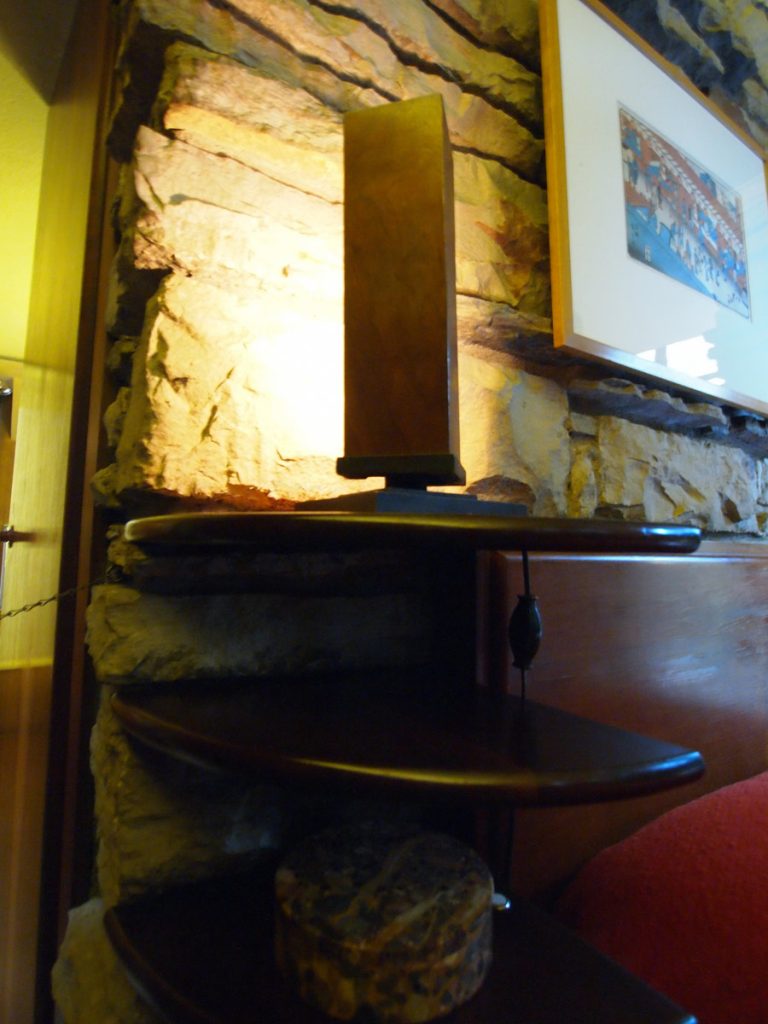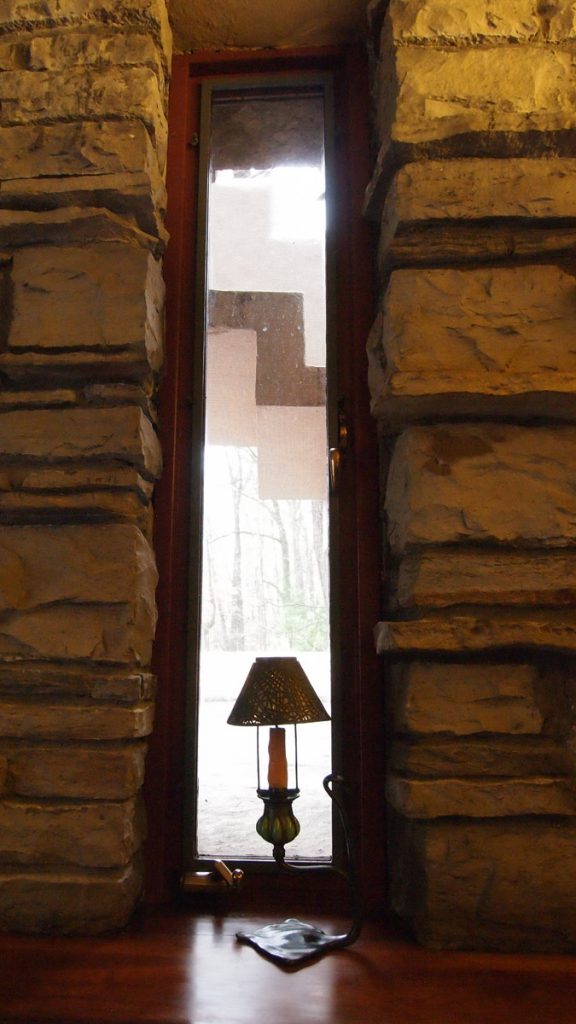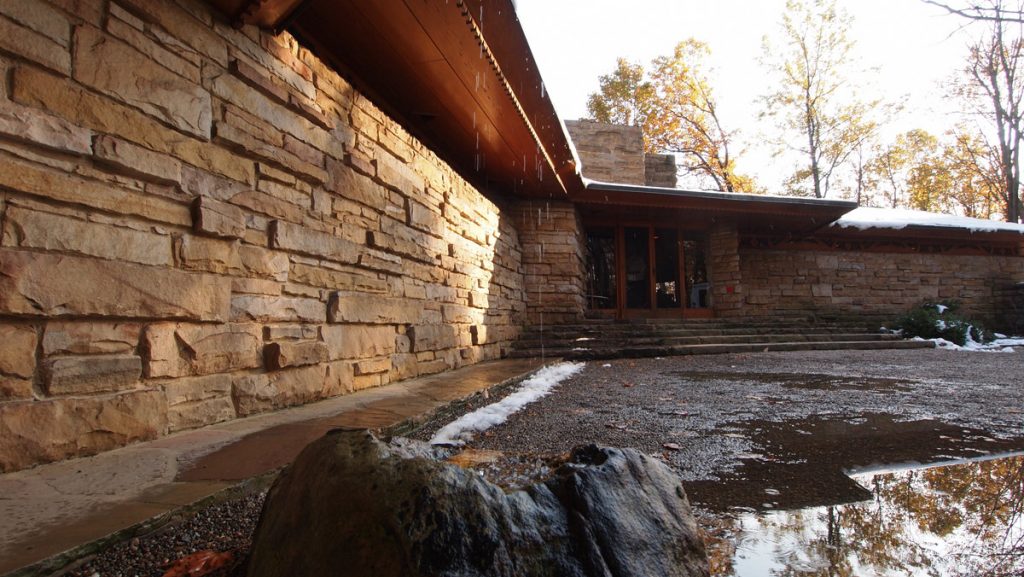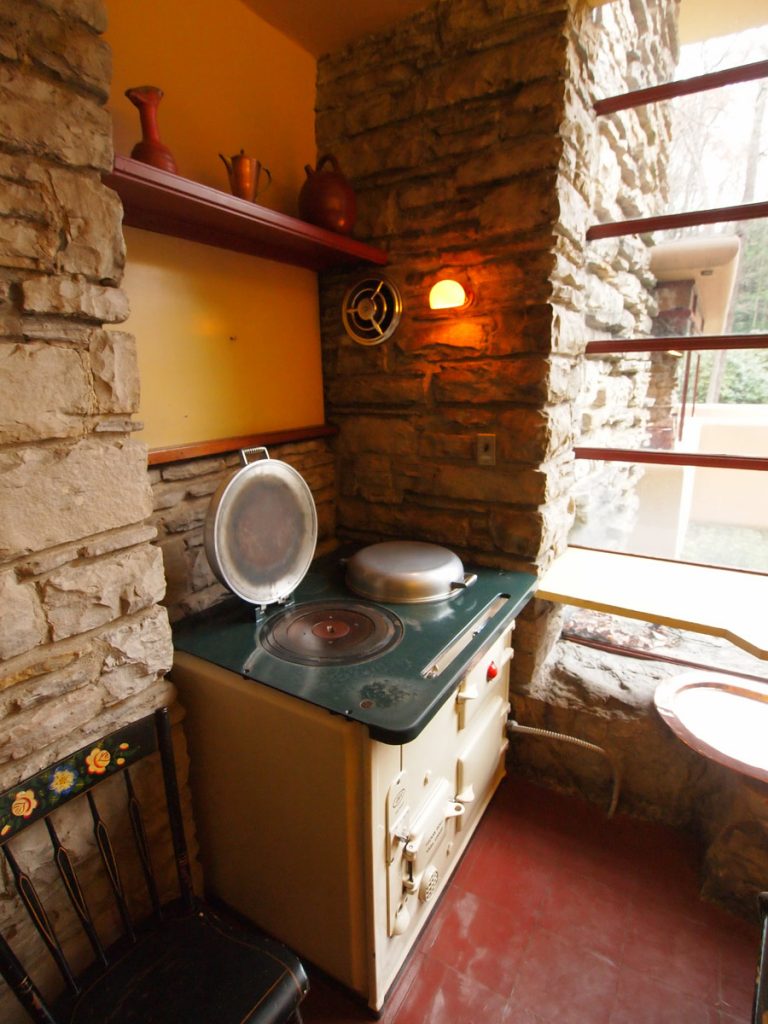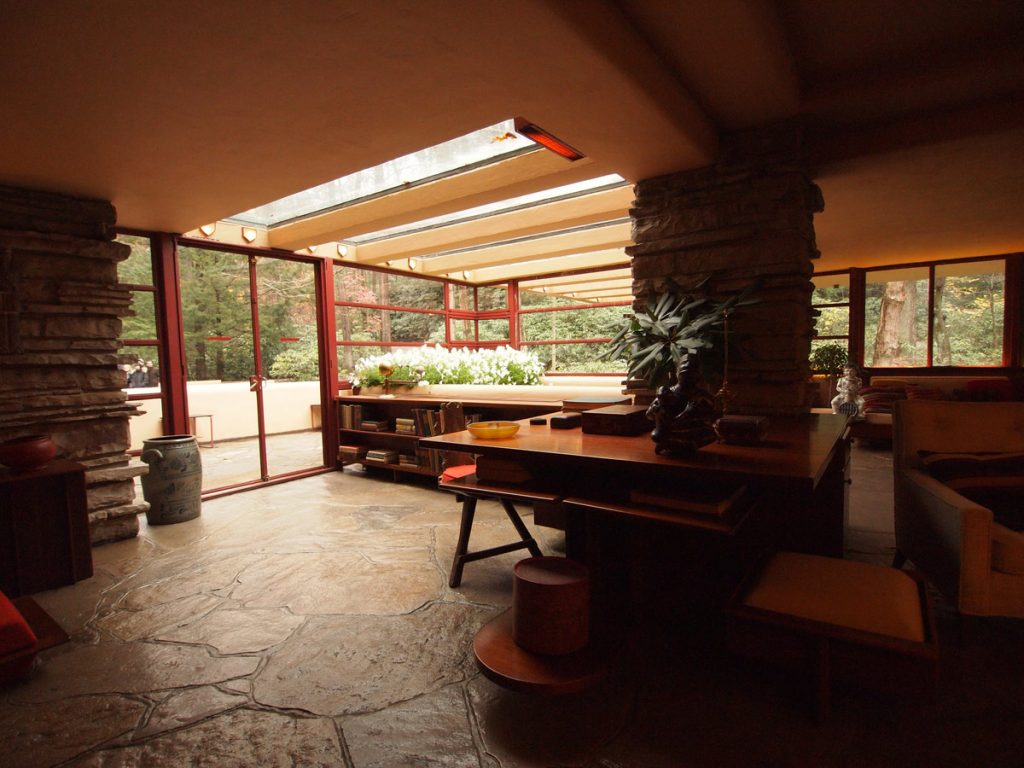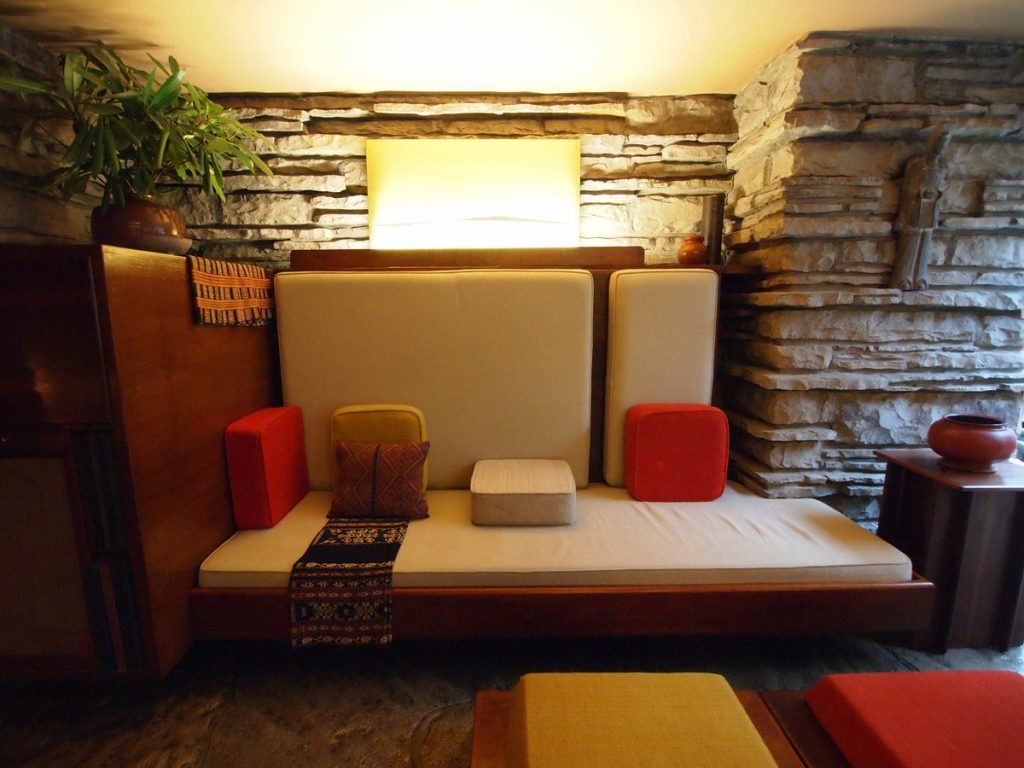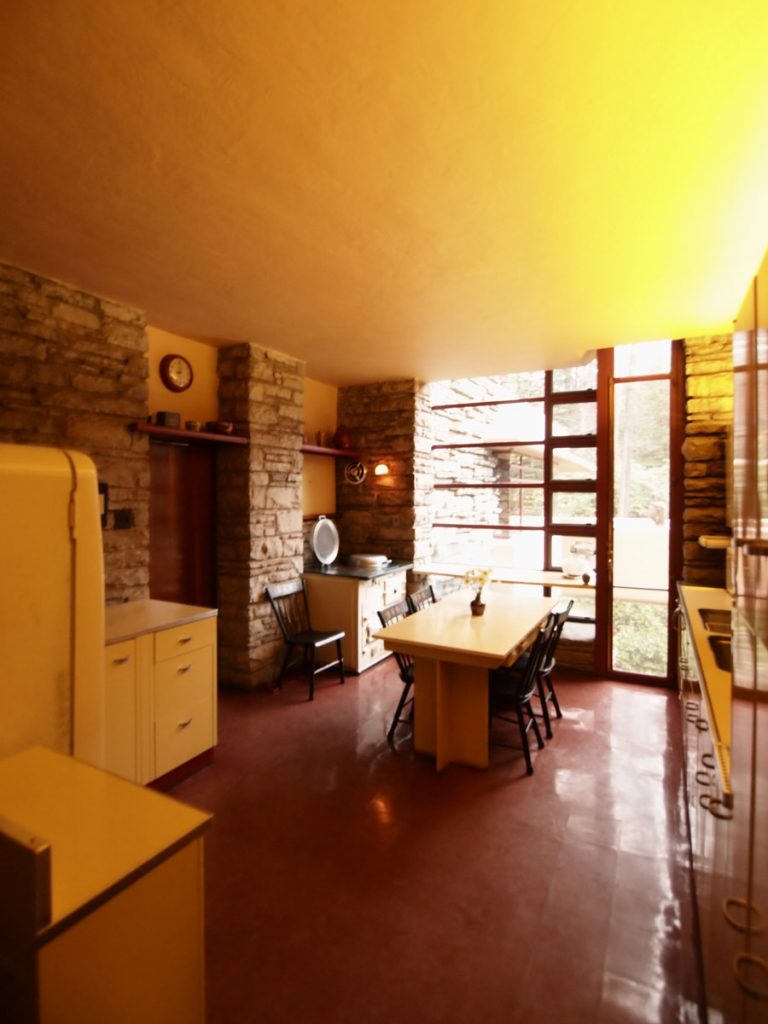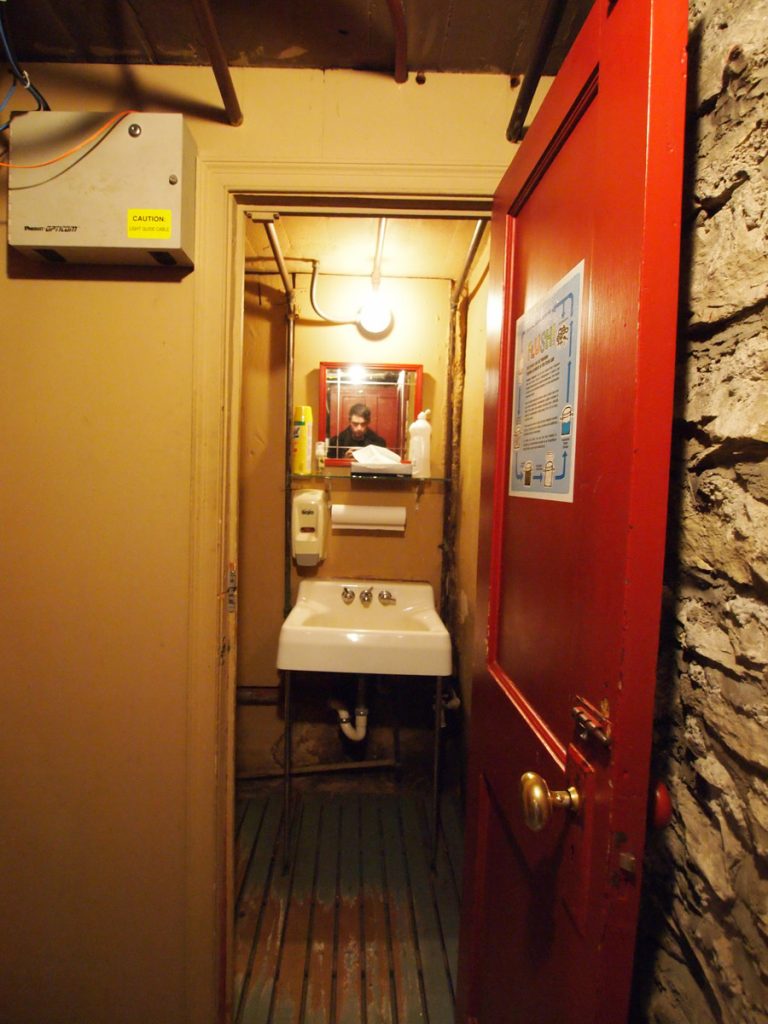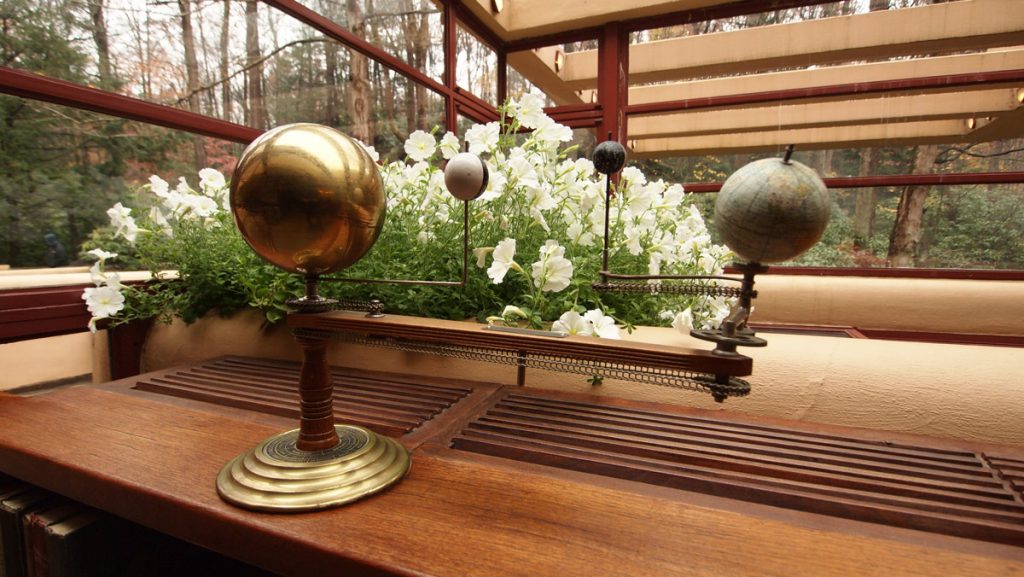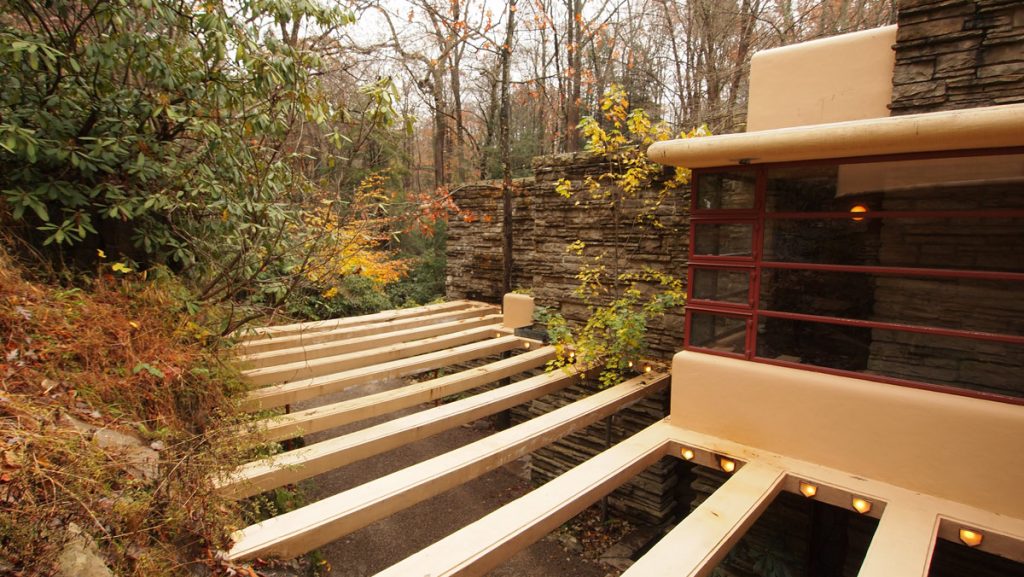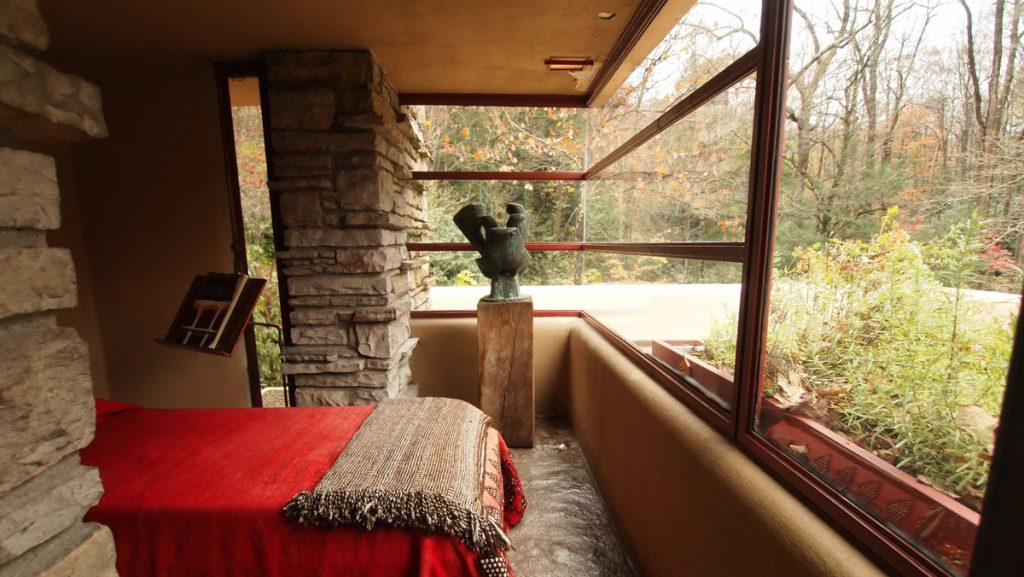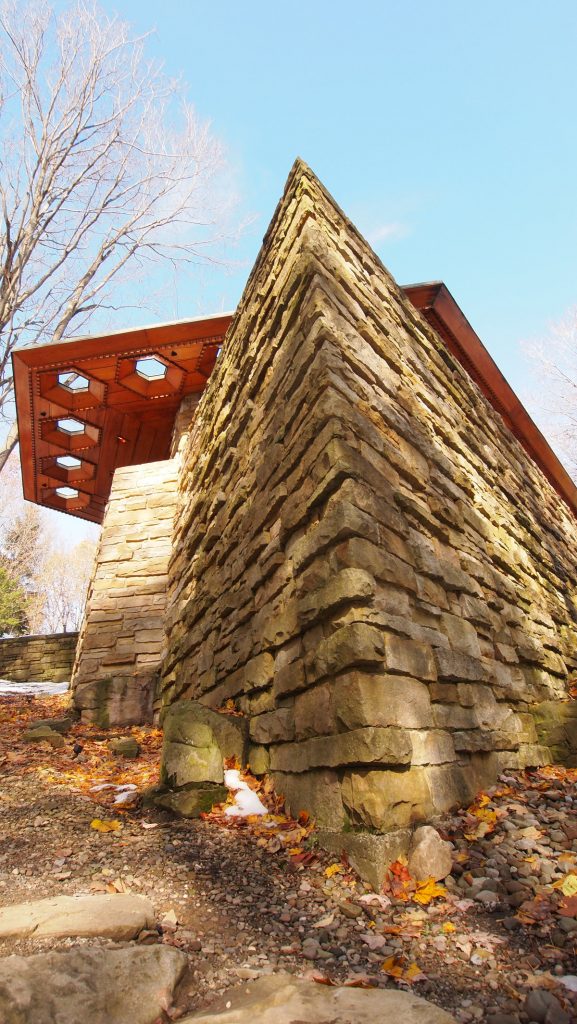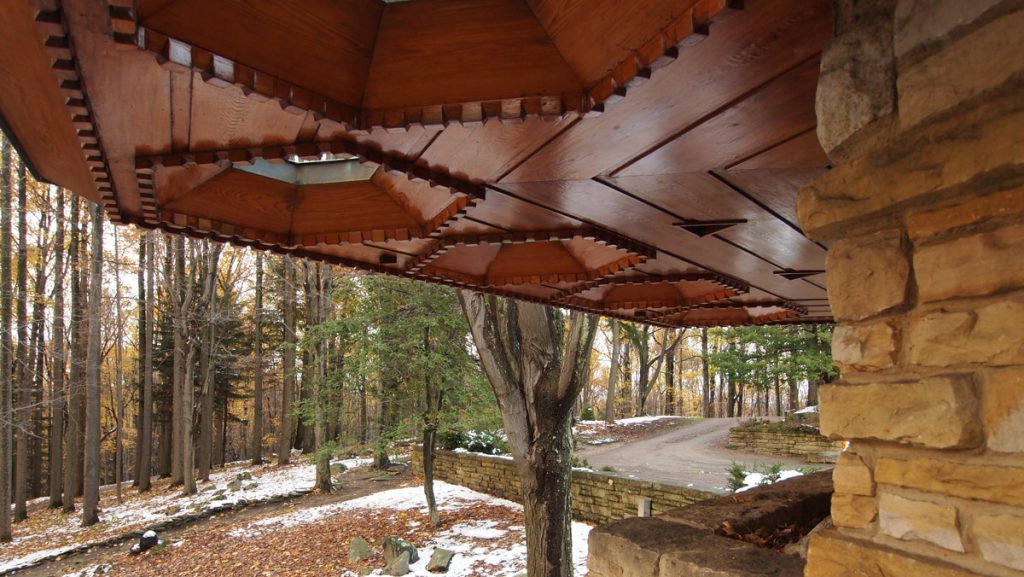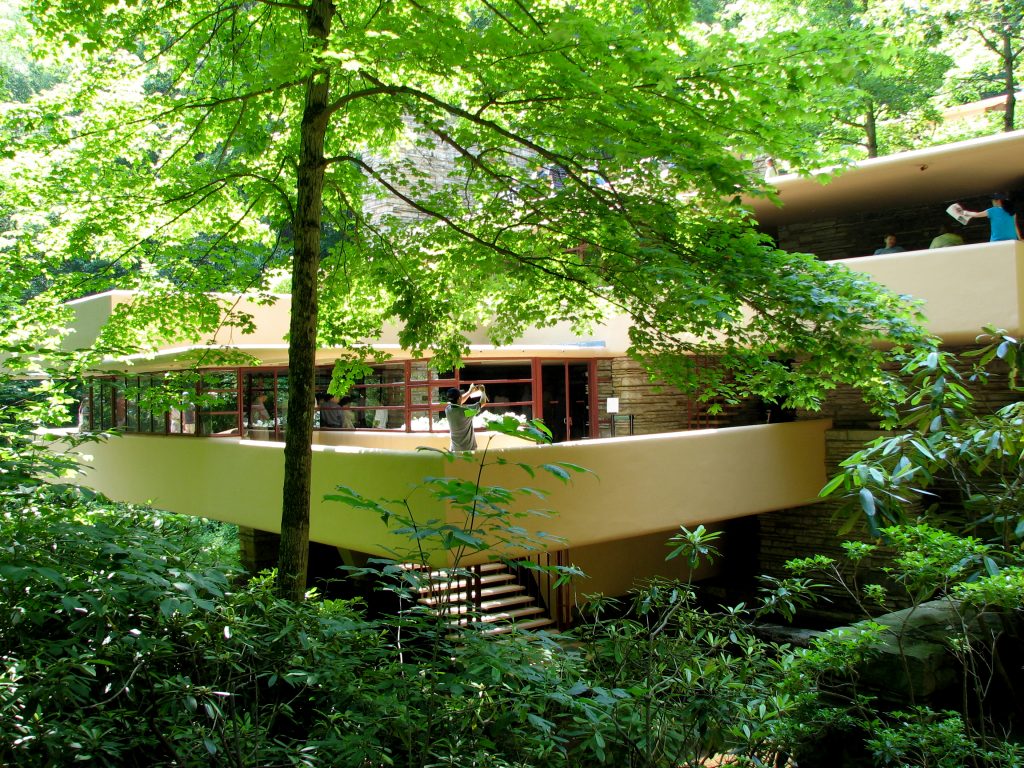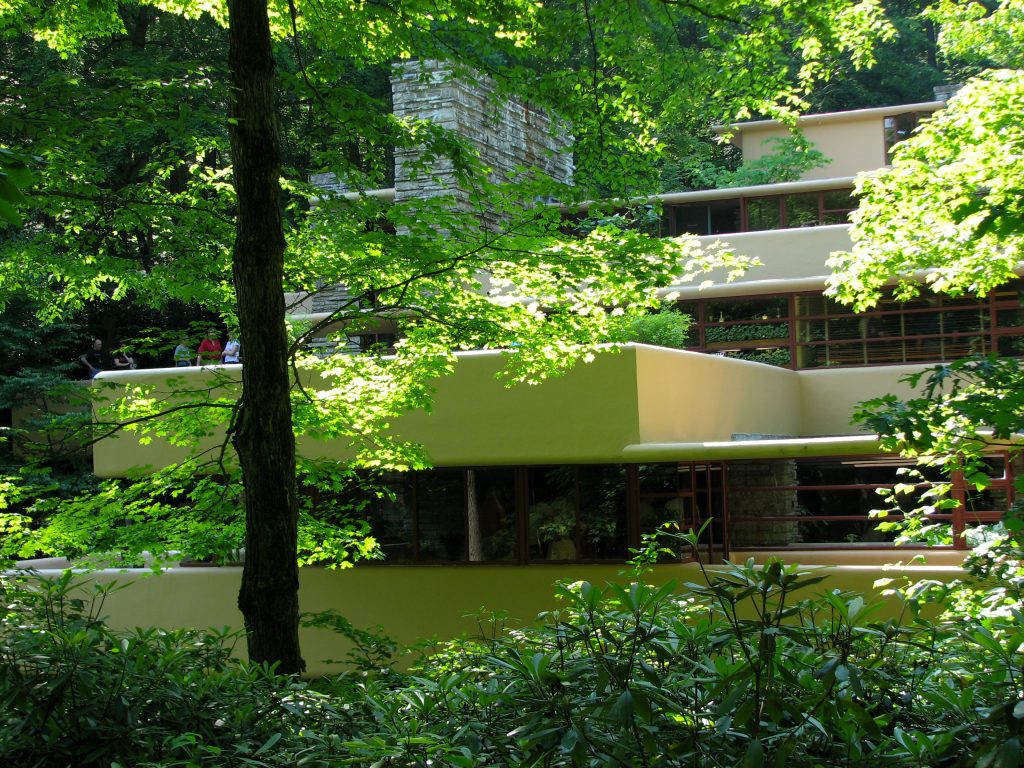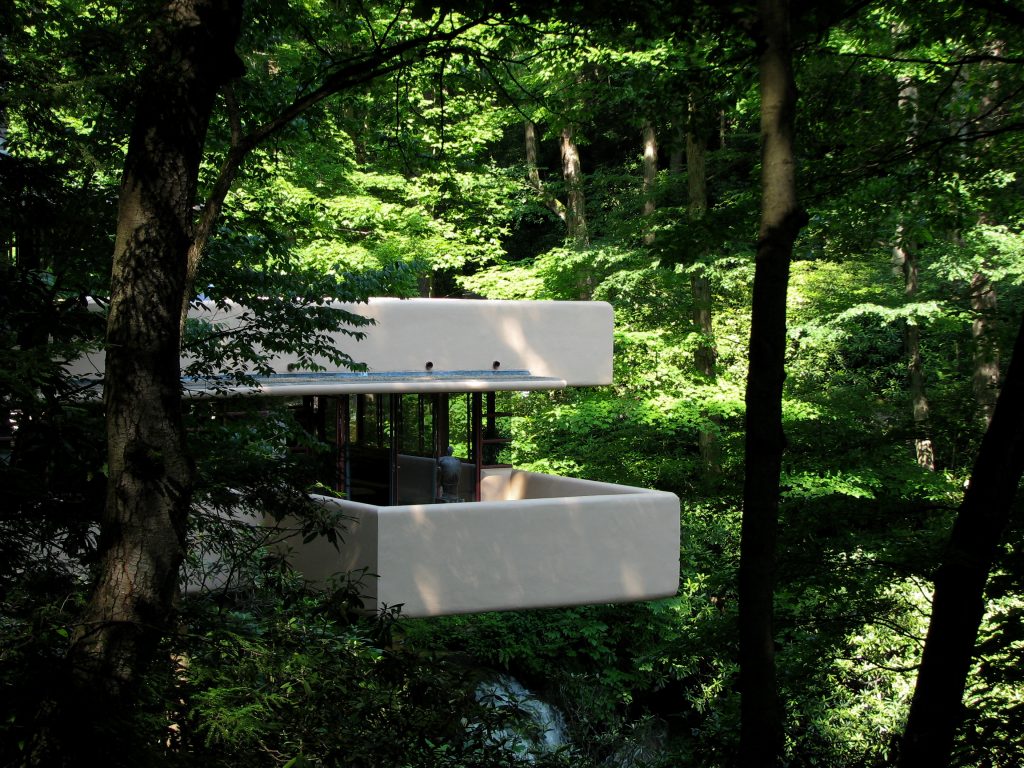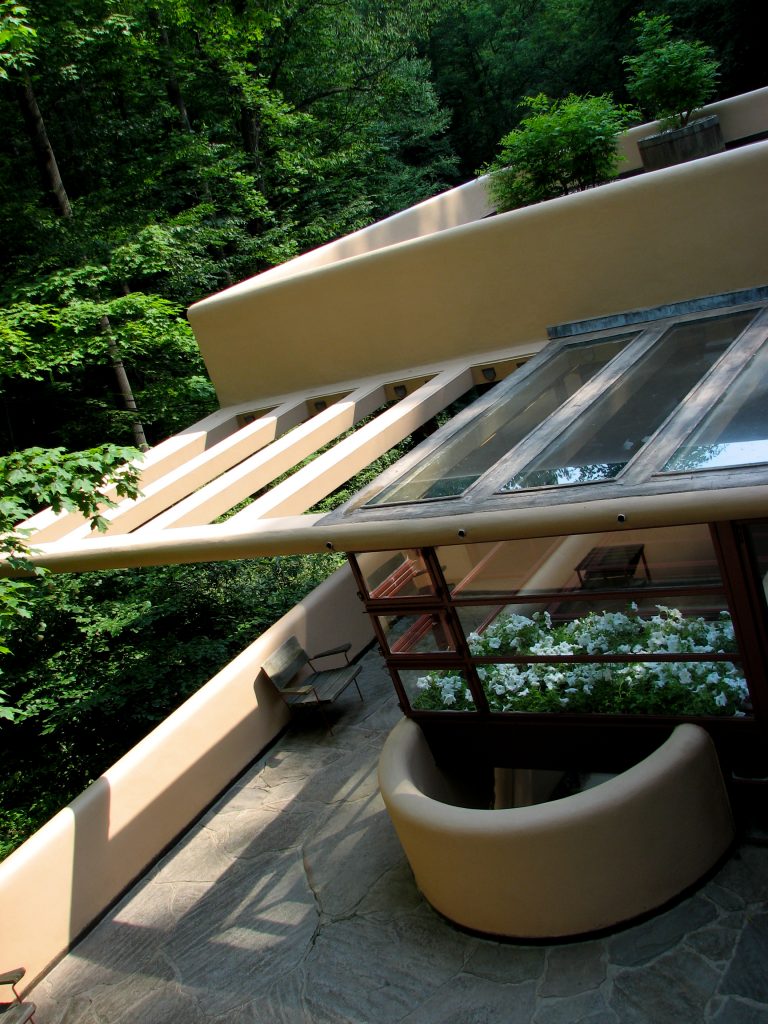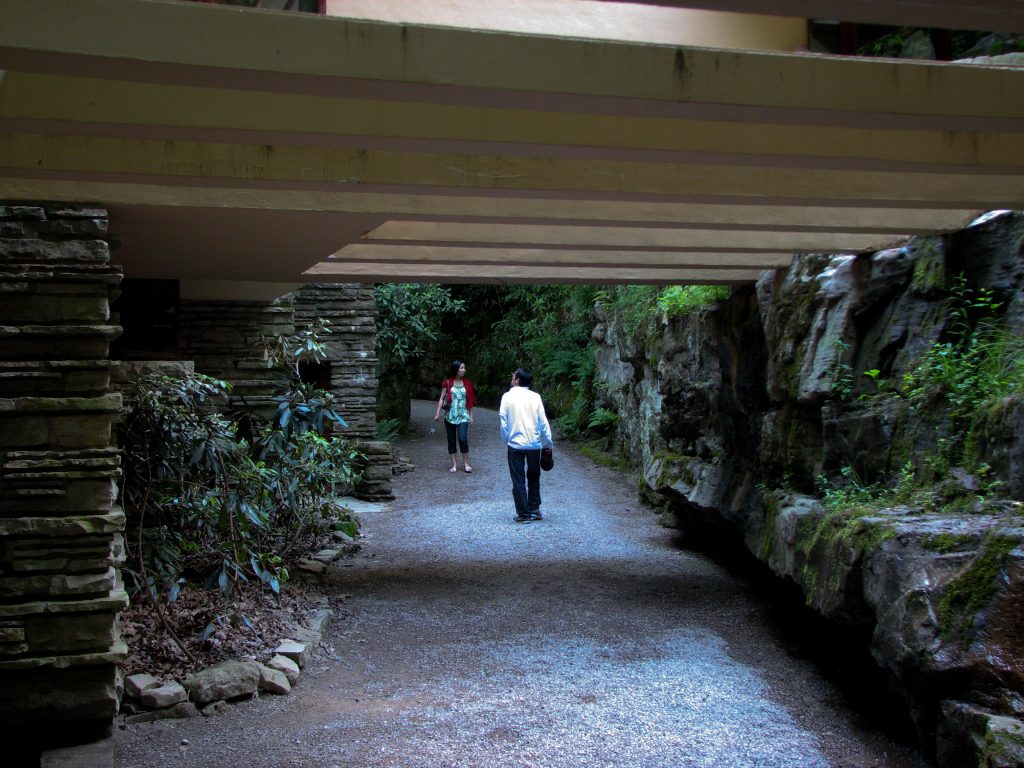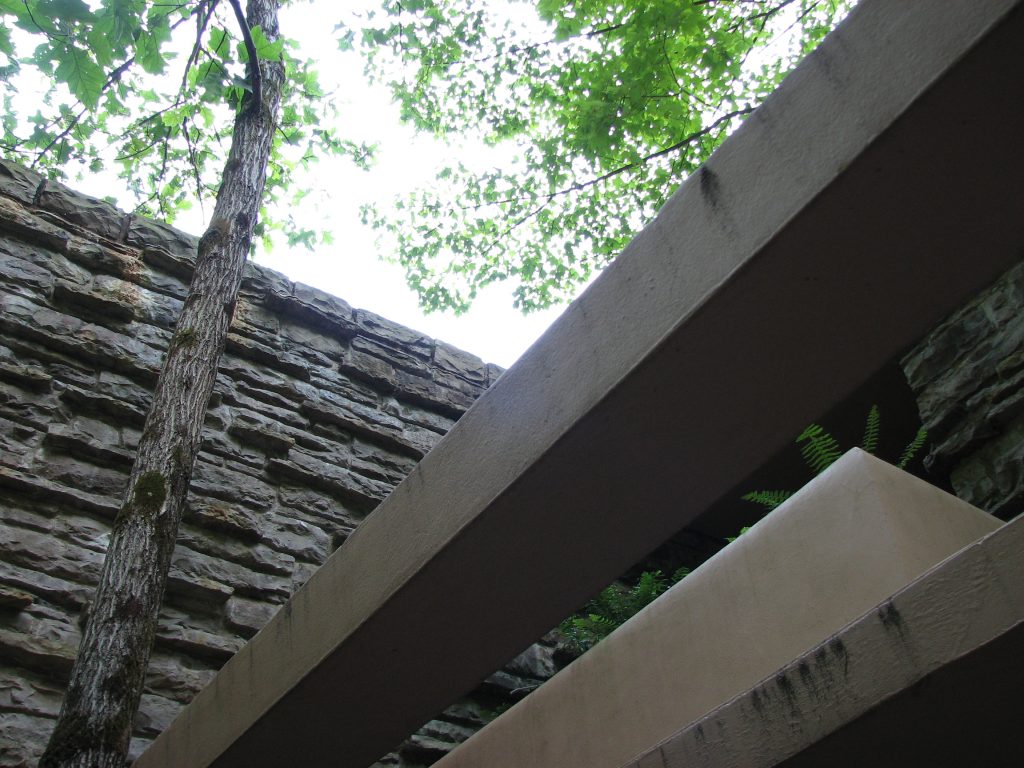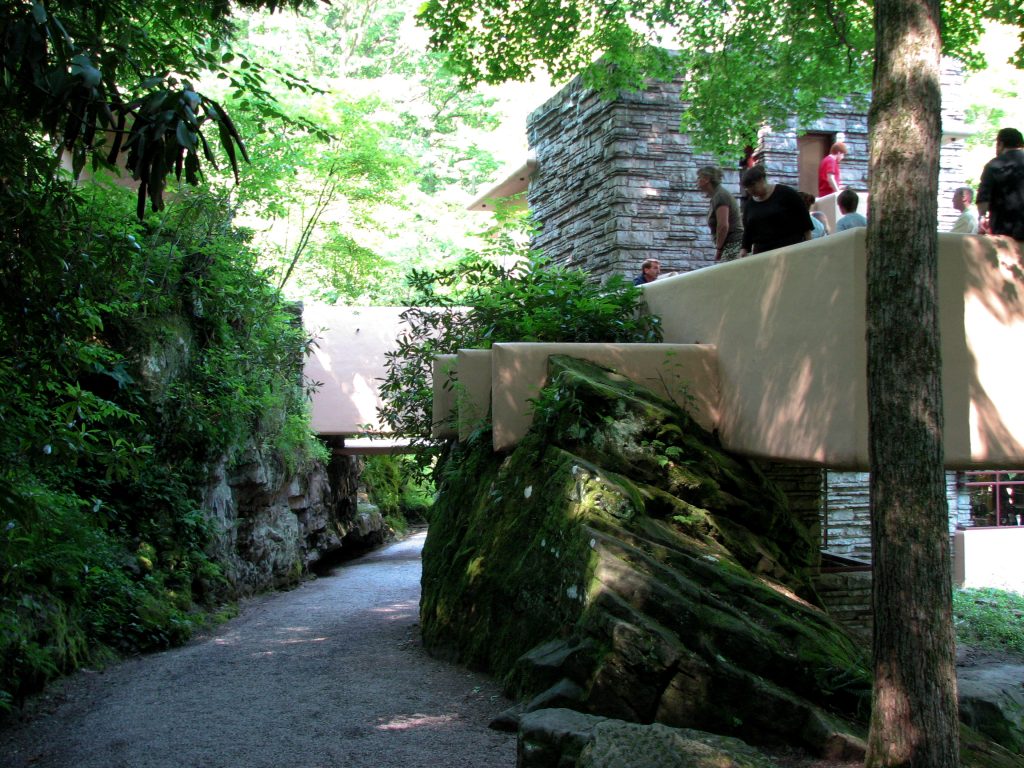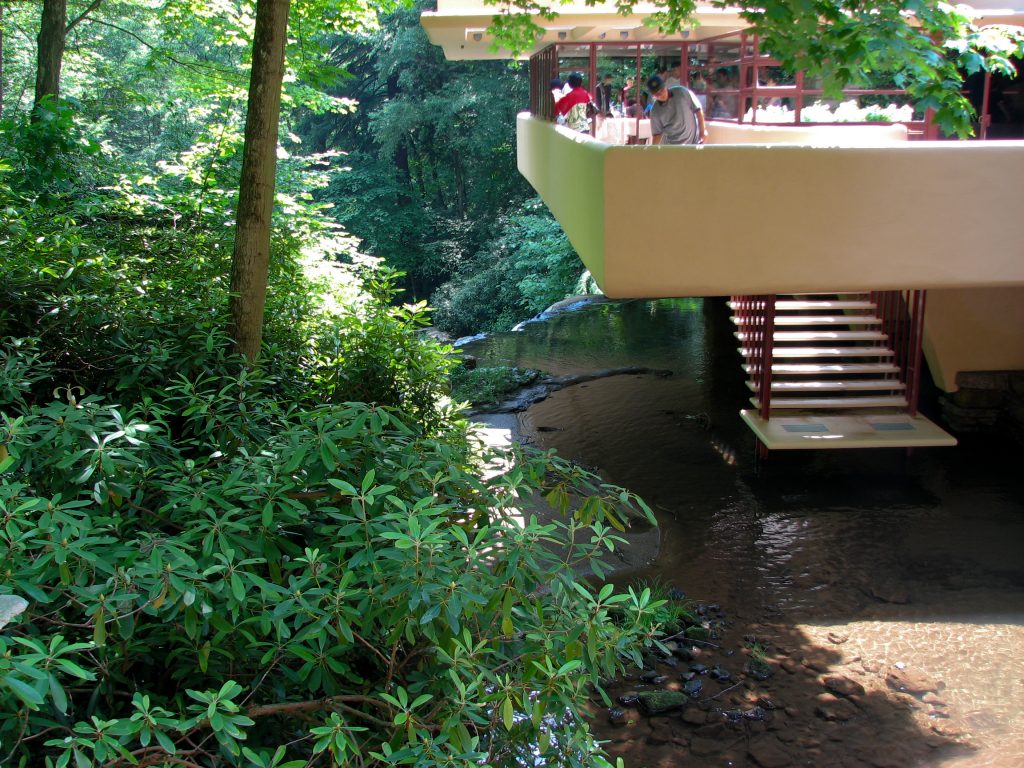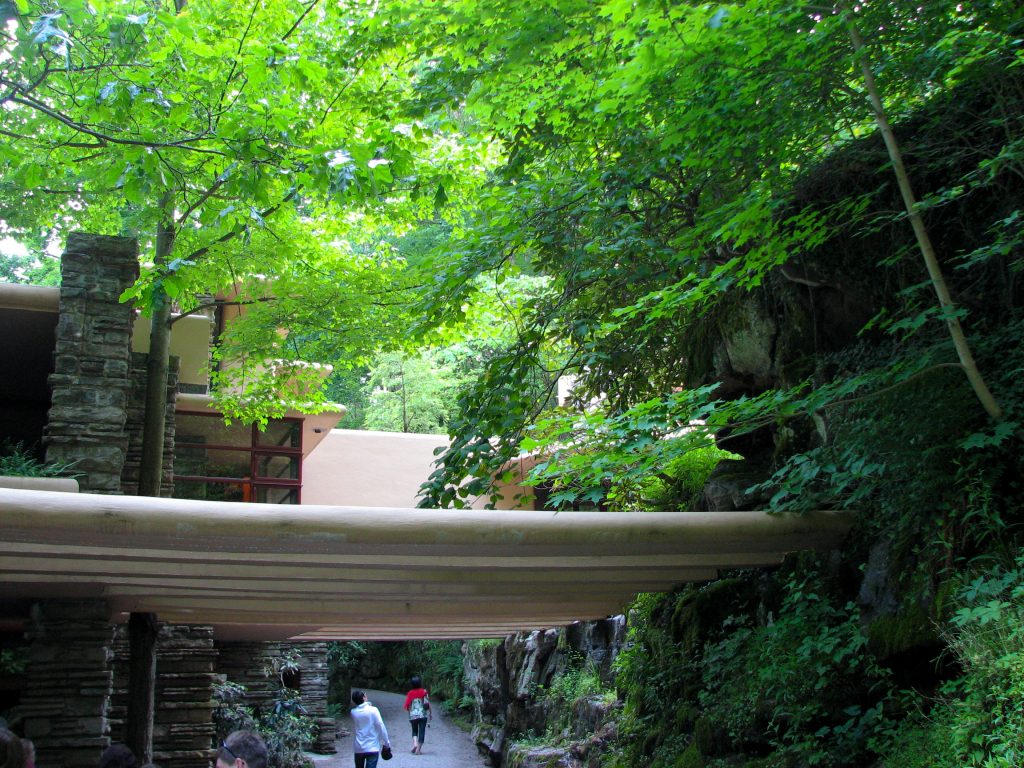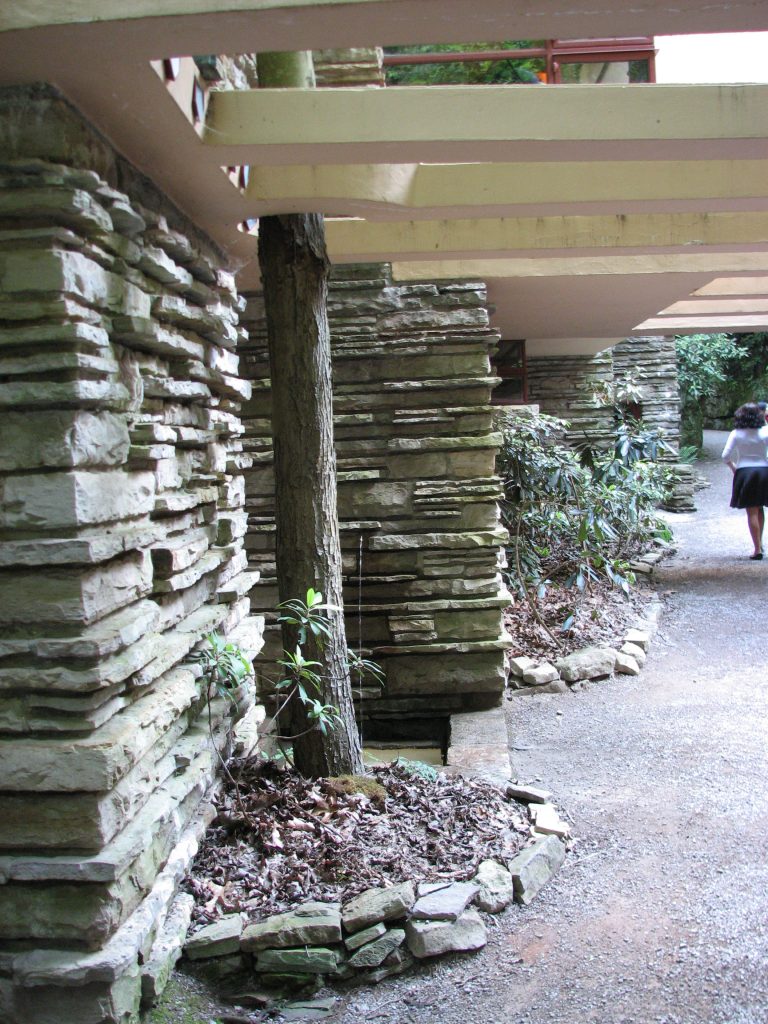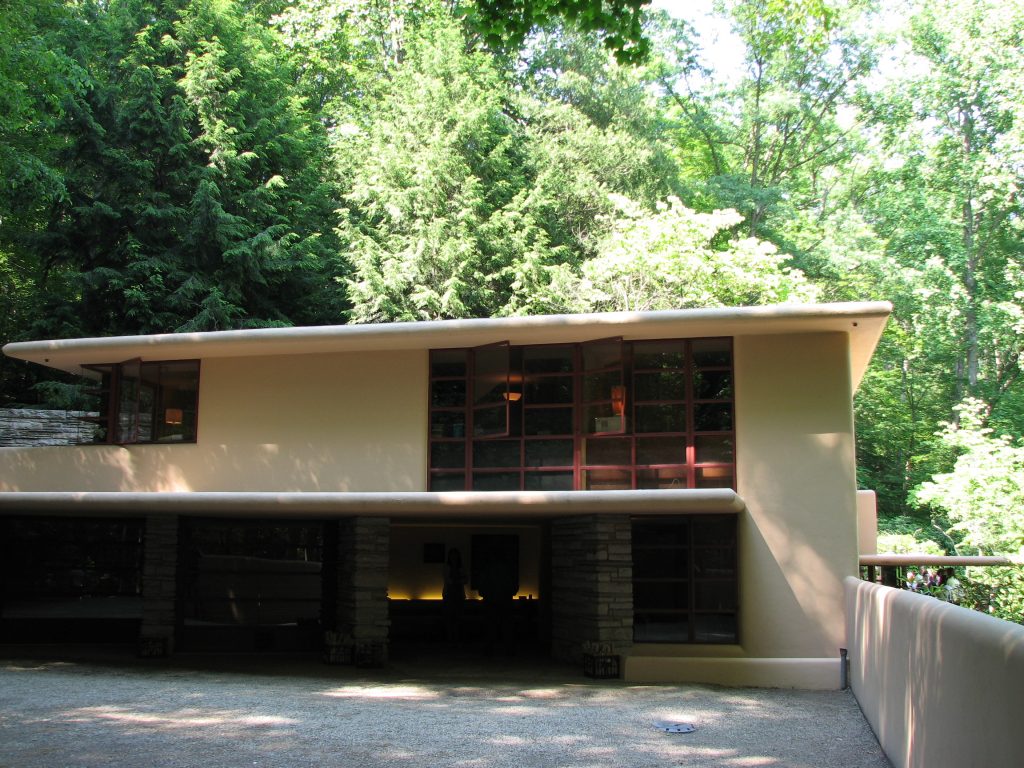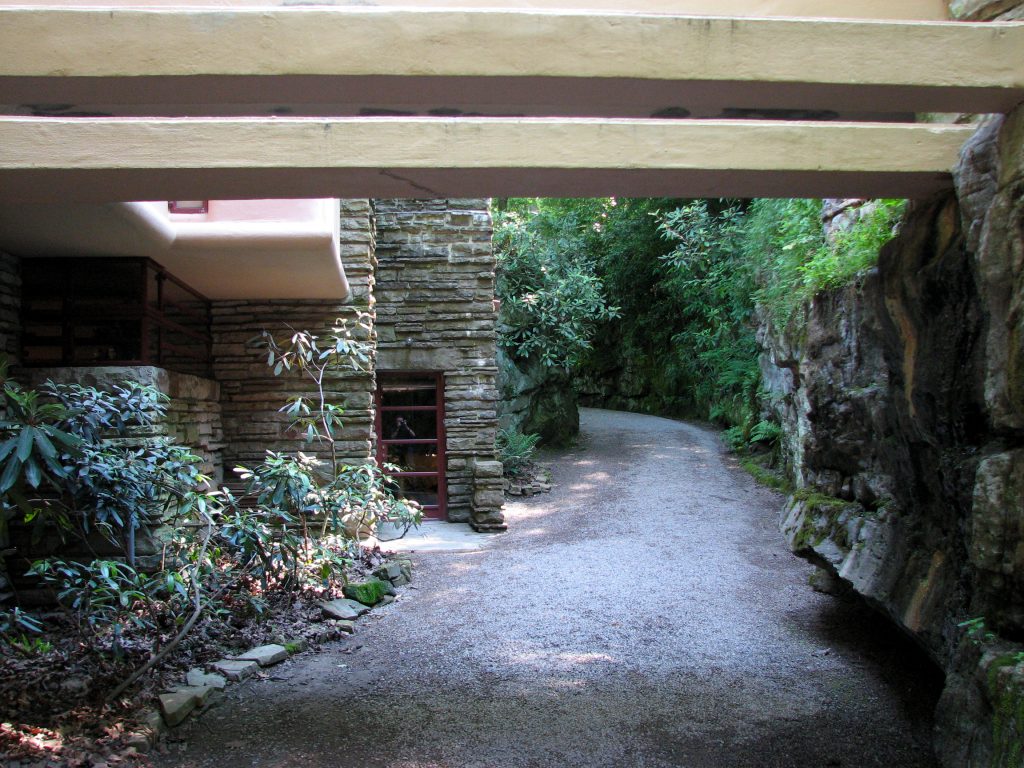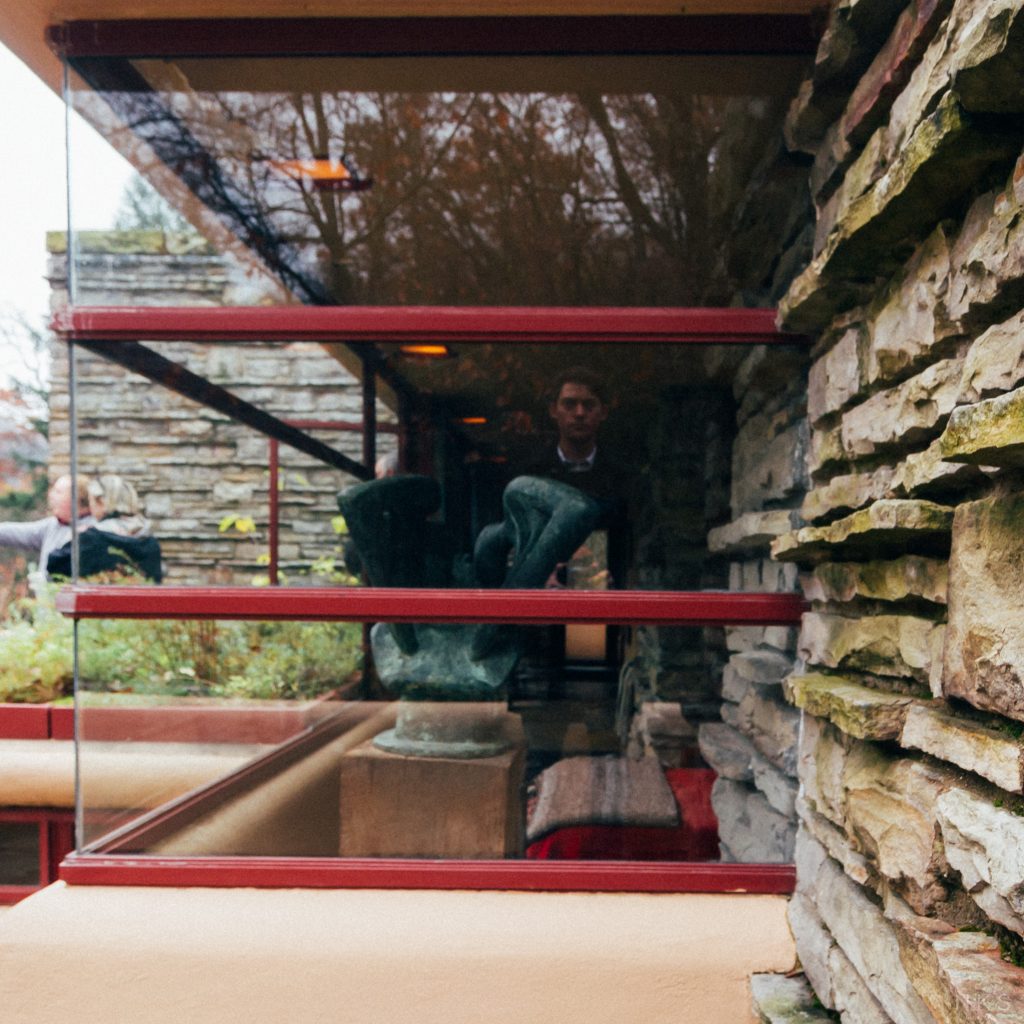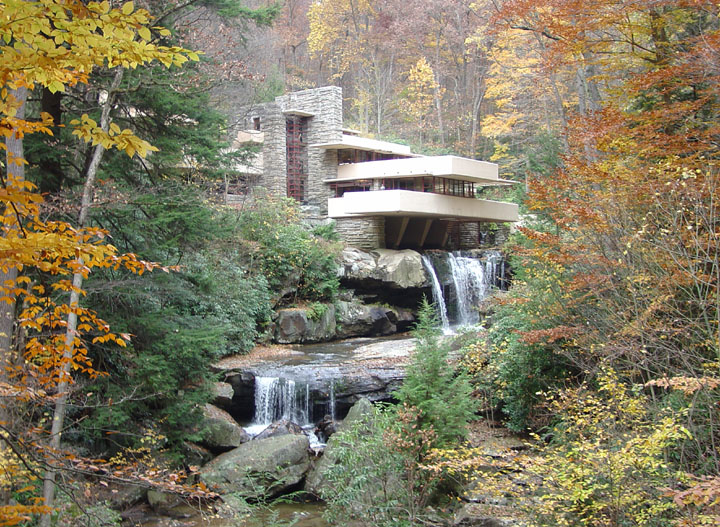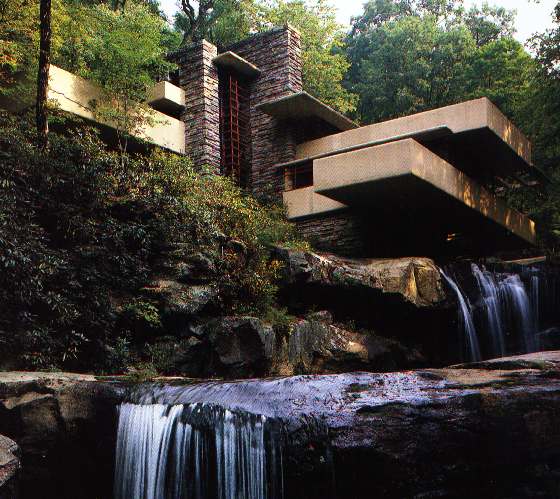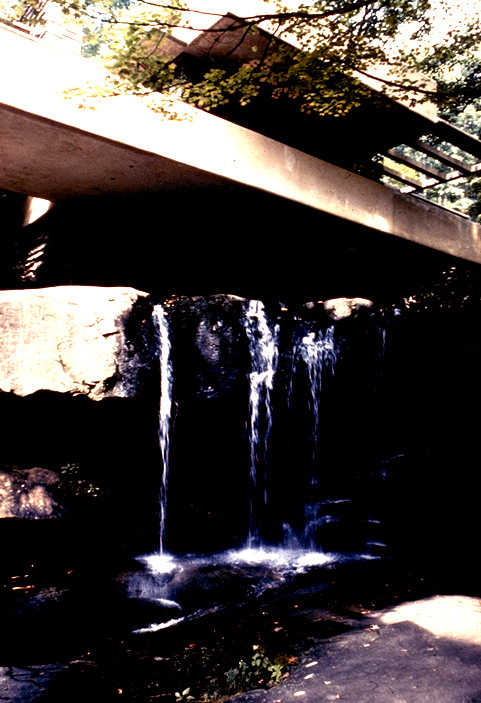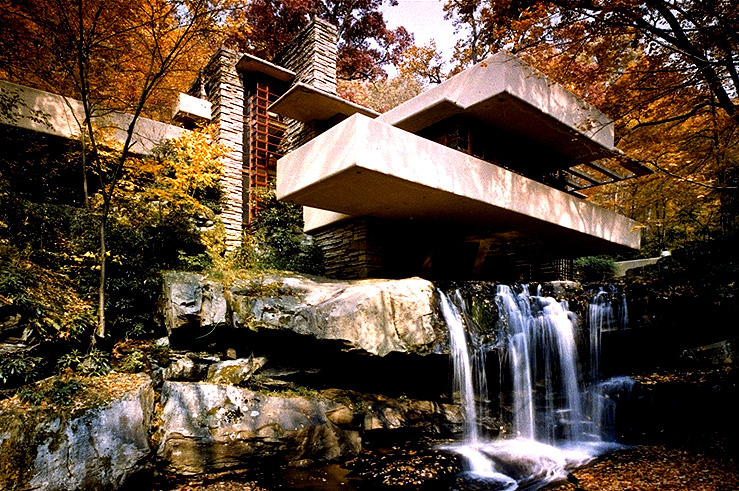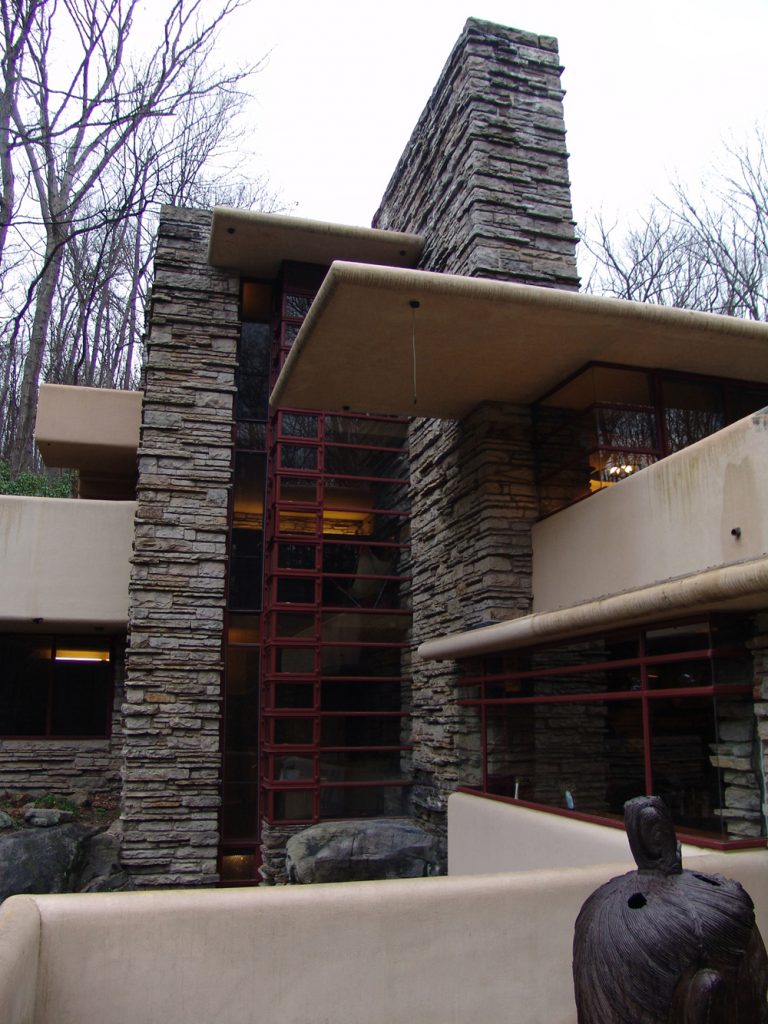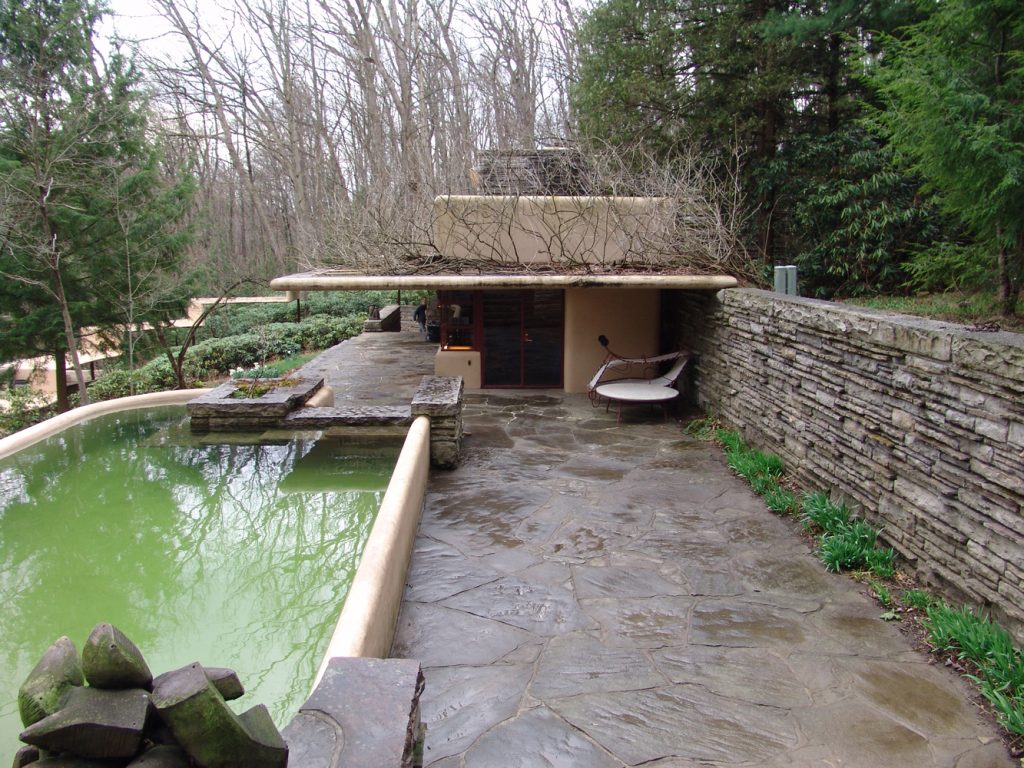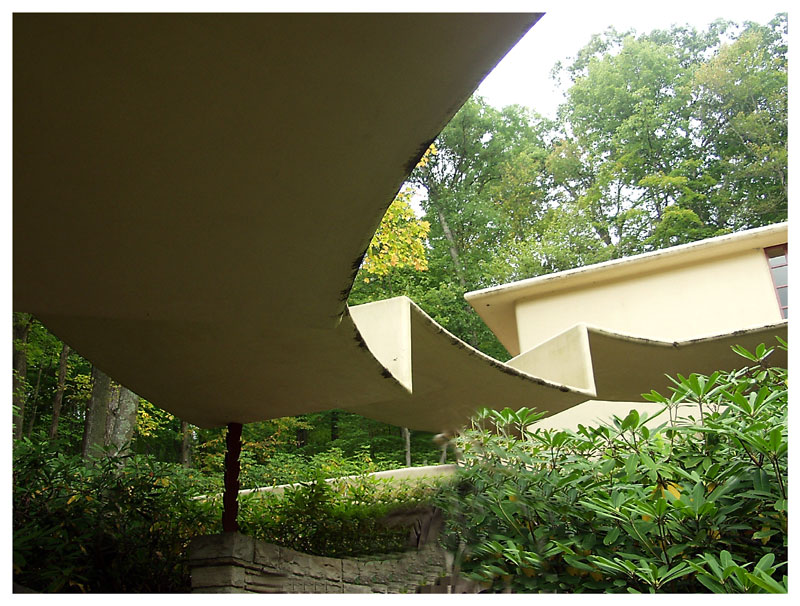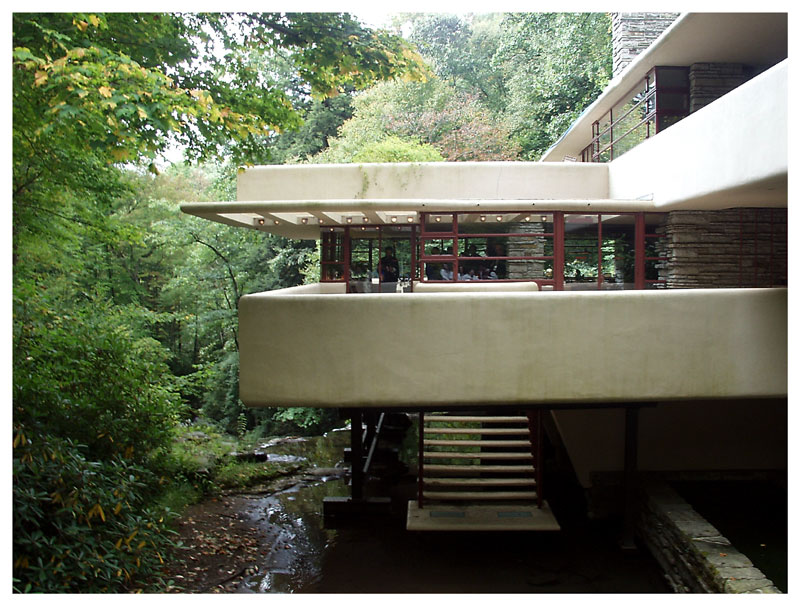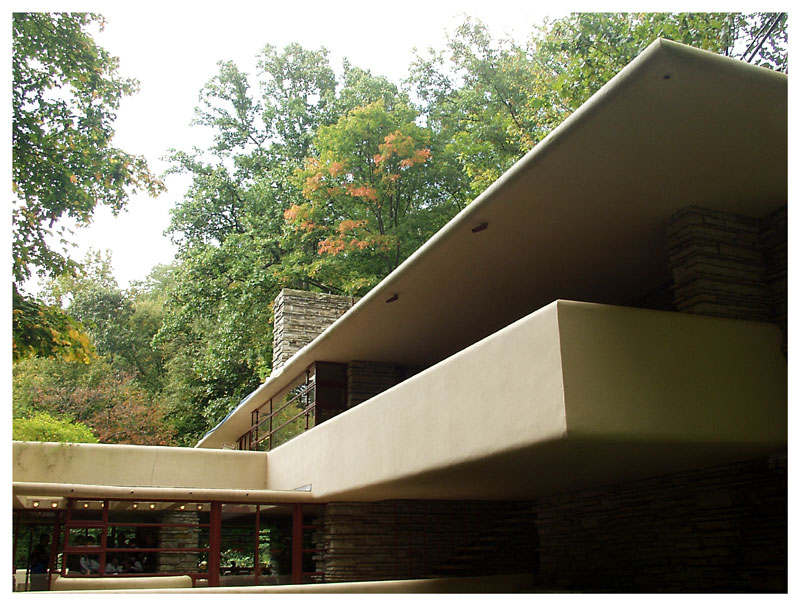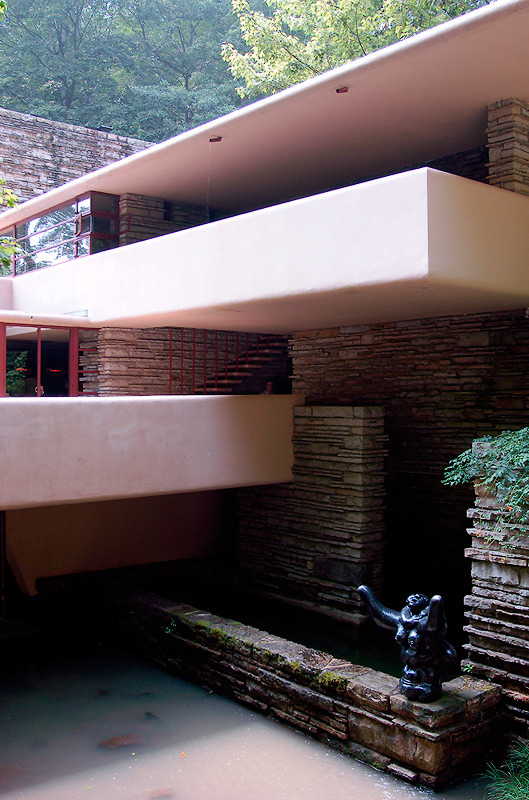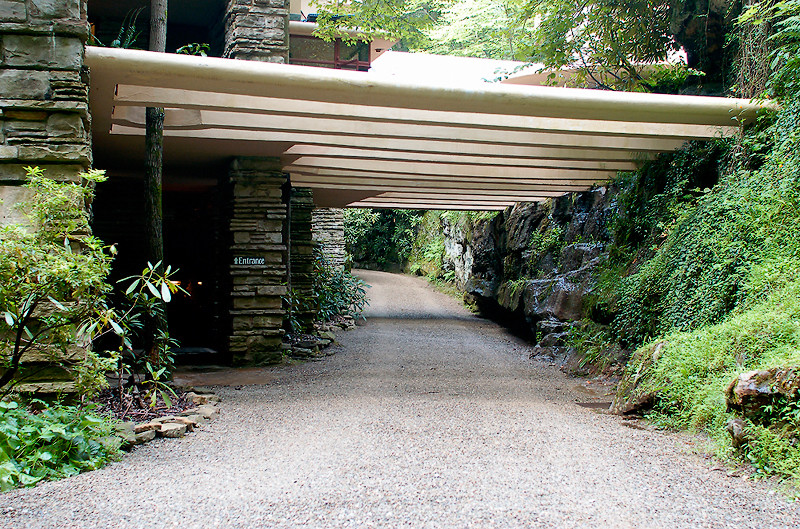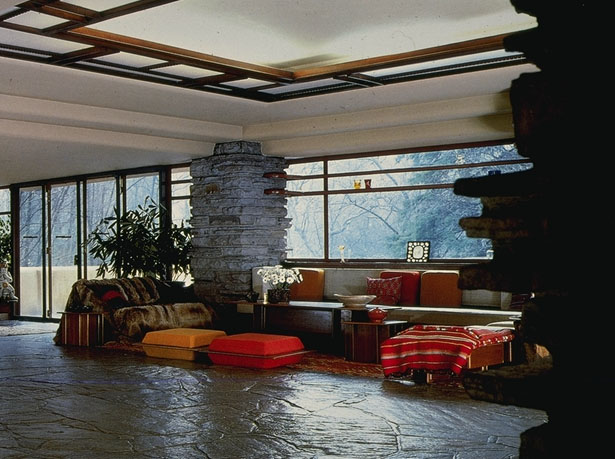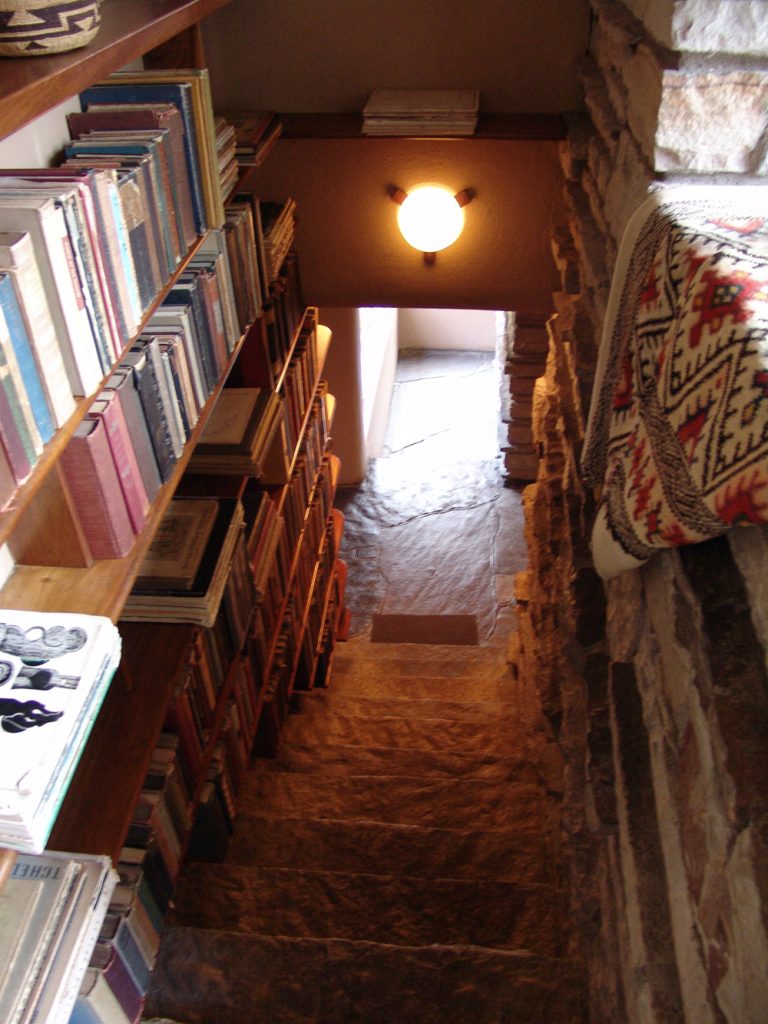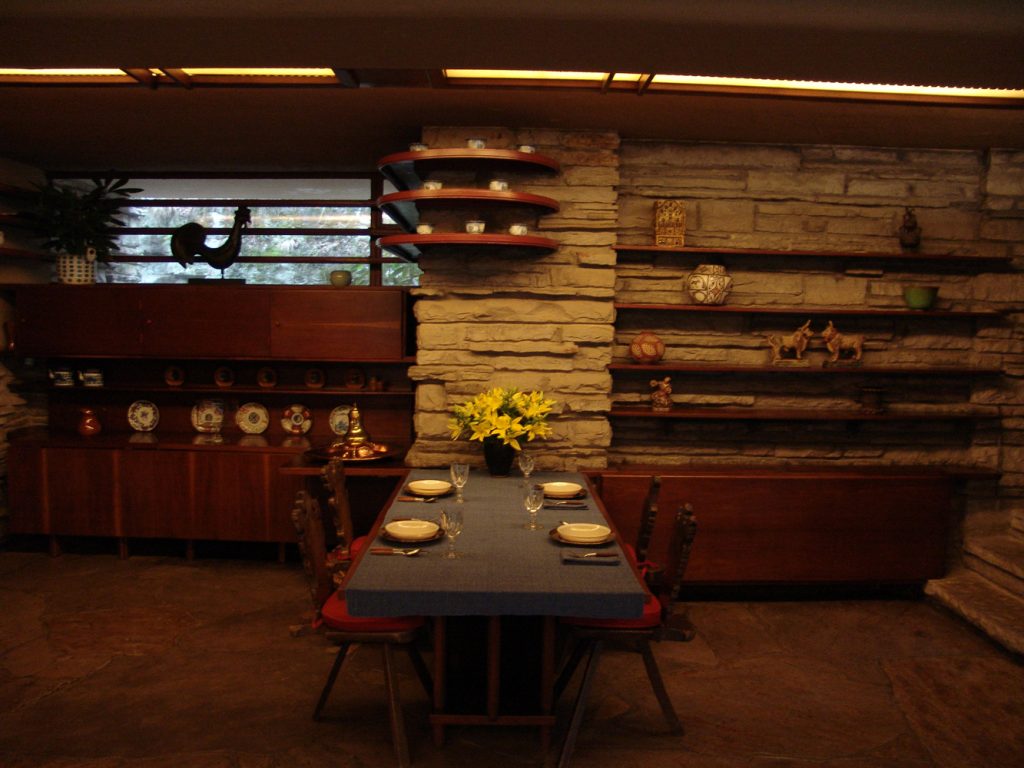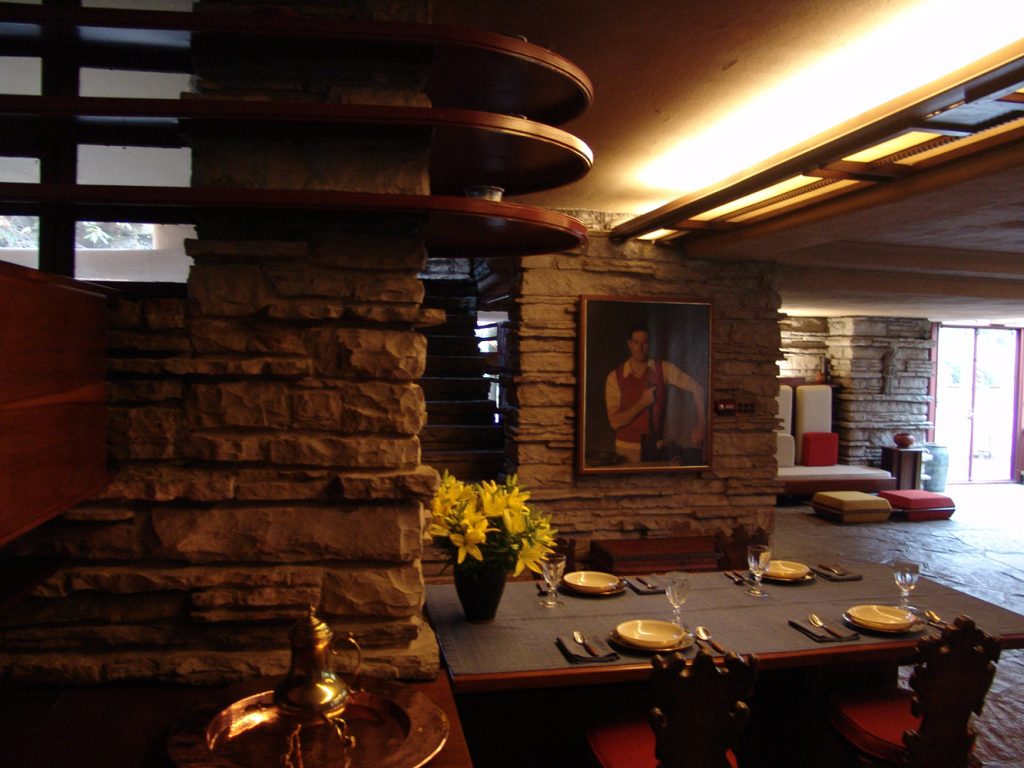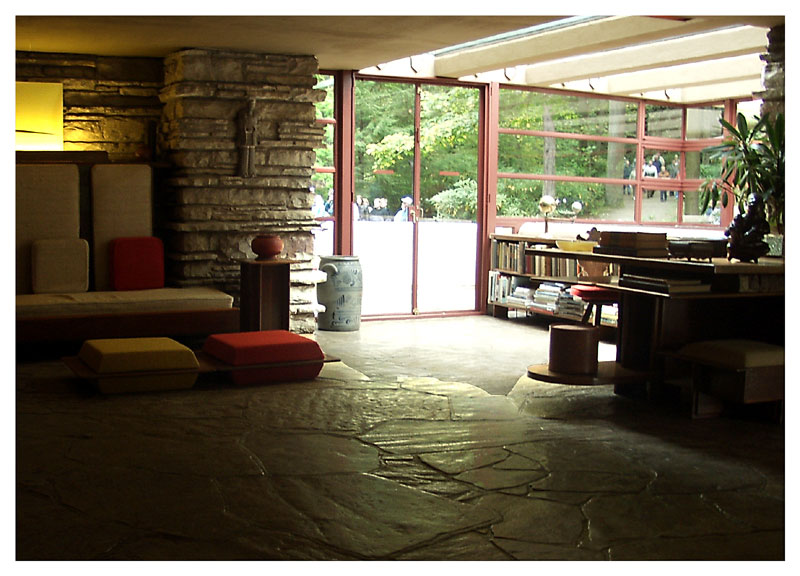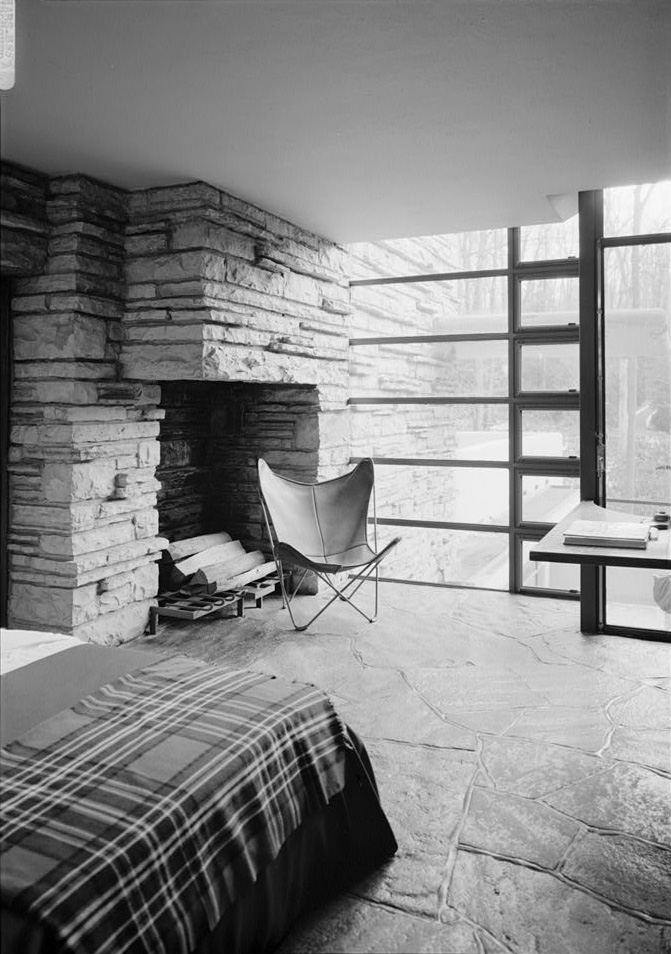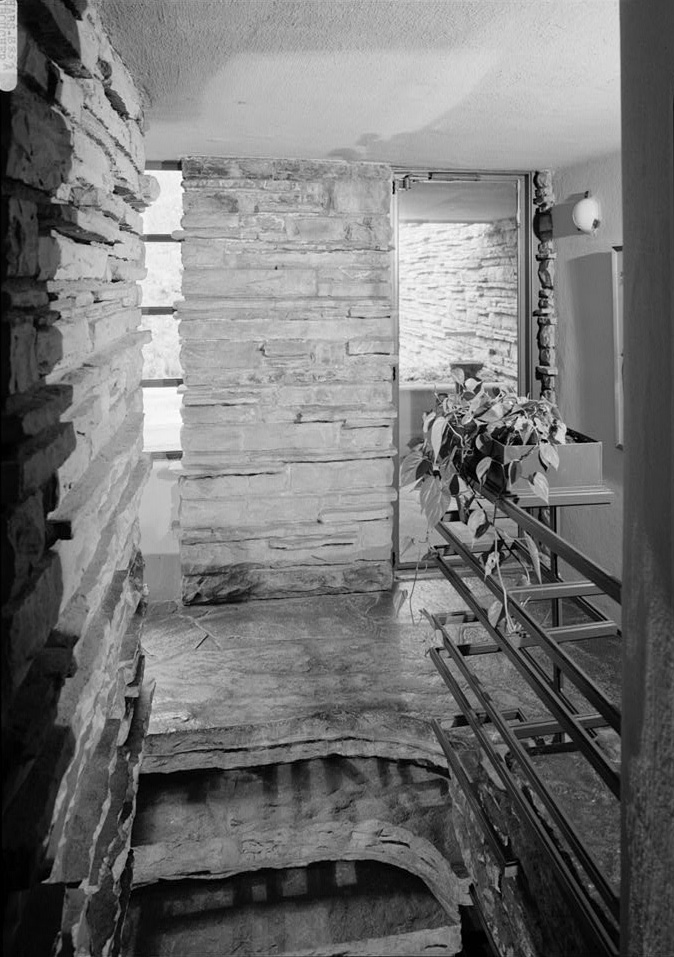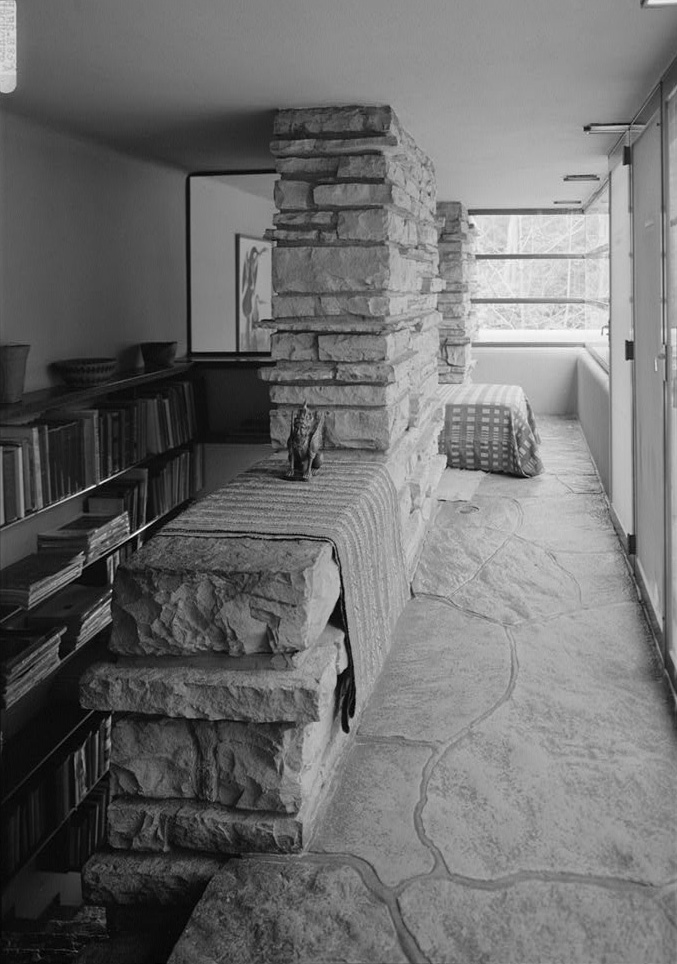Fallingwater House
Introduction
This building, constructed over three levels, sits on a rock over a natural waterfall.
It’s composition is horizontal, though somewhat complex. The vertical axis is defined by the chimney, which towers over the roof. The building grows from inside out and extends according to the needs of its inhabitants. In this way, it can be modified, as in organic architecture the construction is conceived as a living thing and can alter its form.
Each level is marked by wide projections which protrude asymmetrically in various directions. In reality, they are terraces limited by smooth concrete plates. In creating this impression, Wright was inspired by Japanese architecture. The exterior of the house maintains an intimate relationship with the surrounding nature. The architect decided to employ natural materials- wood, brick, rock- with which he achieved an impressive integration between the building and the forest which surrounds it.
The habitability of the interior was what truly preoccupied the architect. The interior space had to be light and spacious, and so he set out to avoid limitations as much as possible. The large living room has a glass wall which allows those inside to enjoy the view of the waterfall, as well as hearing its relaxing murmur. The use of large windows eliminates the separation between rooms and their terraces. Amongst other purposes, they reflect the natural light and project it, indirectly, toward the interior. The upper terrace gives the house a more intimate character. With this work, Wright achieved the maximum freedom of expression, while maintaining harmony with the surroundings. The integration of water, trees, rocks, sky and nature throughout the house closes off a certain romantic vision of the house, but opens up a new spatial-temporal dimension for man’s refuge.
Location
The house is located on a huge plot of land in the middle of the wild Pennsylvania forest. The forest of deciduous trees remains almost completely untamed, interrupted only by a discreet pedestrian access which is the only way of reaching the house. The plot on which the house ended up is also surrounded by the “Bear’s river”.
Concept
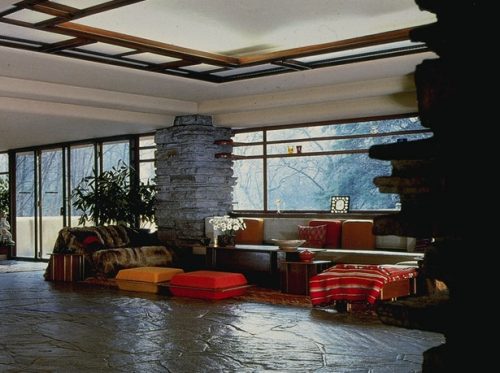
The design of the house is a clear example of naturalist architecture, as all the decisions taken in its construction were alongside the integration of the building with the countryside. It was intended that the work be converted into another natural element of the surroundings, in full harmony with it and with the passing of time.
From the terrain of the site, they extracted rocks which formed the masonry of the lower parts of the house’s façades, co-located to create a progression from the natural rock of the ground to the cement of the upper parts. The rest of the façades are cream-coloured: a contrast with the surrounding greens or browns (depending on the season). Another contrasting element of the house are the orthogonal forms of the projections and the walls, instilling in house a sense of “architecture”.
The building maintains a relationship with the surroundings which comes from a respect for and adaptation to the environment. As such, the foundations of the house are rocks of the place, and some are even found beyond the boundaries of the first floor, leaning next to the chimney. A large part of the house is cantilevered, hanging over the river. Wright’s engineers were not confident that the structure would support itself and asked Wright to reconsider his plans. His pride allowed him to back down only enough to agree to a number of metallic pieces which supported the cantilever, which remains intact following the effects of a tornado. Two floors of the house extend horizontally with prominent cantilevers and terraces. However, there is a core which rises vertically, in which the chimney is housed. It has several windows which also stretch vertically and which pass from one floor to the next, thus demonstrating the different levels. This vertical nucleus is the “heart” of the Fallingwater House.
On the North face of the house, the opposite of that which “flies” over the river, there are two pergolas, like awnings, which run from the exterior wall to a stone incline and hang over the path which leads to the entrance. This spot is known as the “forest of the house”. Two pergolas form an arc which goes around the trunks of two trees. This means was utilised by Wright to make clear the respect for nature with which he designed the house. The shadows cast by the pergolas resemble those of the tree trunks; an effect which makes the shadow of the house fade into those of the trees. On the ground of the terrace outside Mr. Kaufmann’s office, two holes were intended to be left so that the trees could pass through them. However, as the trees died during the construction of the house, no such apertures were made.
Spaces
In the interior of the Fallingwater House we find rooms which are unique in their distribution, location and finishes.
On entering the house by the main entrance, situated at the North face, we arrive at a small room which acts as a reception, located under the stairs which lead to the second floor. Past that room is the living room, the largest public room of the house from which there are splendid views of the woods which surround the house. On entering, we are faced by the “music corner”, whose etymology is unknown, to the right is the sofa area and behind the “music corner” is the “staircase of water”, so called because it leads down to a small platform beside the river. To get down there, you must open the sliding glass screens. The steps of the “staircase of water” are suspended from traction cables, attached to the first slab.
The walls of the living room, like those of the rest of the house, are the same as the exterior ones, with parts of masonry made from the extracted stone. The floor is brown stone and the ceiling has a pattern which goes round the integrated light fittings, designed specifically for this house. On entering the dining room, on the right hand side, is the chimney, surrounded by natural stones which emerge from the floor. On the left is a “wine ball”, a red, spherical container fitted with a handle on a hinge, that allows you to place it over the fire to heat the drink inside. On both sides of the room a door leads onto a terrace. The one on the East side is next to a small exterior staircase which leads to the terrace of the Kaufmann’s son’s bedroom. To the left of the chimney, a door leads to the kitchen; a smaller room than the living room with furniture exclusively designed by Wright for the house, as was the case for the rest of the furniture also. Between the door to the kitchen and the staircase is the dining table, placed against the North wall of the dining room.
On the second floor, there are two bedrooms, two bathrooms and Mr. Kaufmann’s office, as well as three terraces and the stairs which lead to the lookout on the third floor. On this floor, you pass along a small corridor from which the rooms are distributed. The Kaufmann’s son’s room is above the “music corner” on the first floor and has a small bathroom. To the East of this bedroom is the boy’s small, individual terrace, from which there is a small exterior stairwell leading to the first floor. Above the sofa area of the living room, there is the master bedroom, which has a small bathroom and an expansive terrace, which extends, cantilevered towards the South. In the West part of the second floor is Mr. Kaufmann’s office. In this room there is a bed and a staircase which leads to the viewpoint above the second floor. The chimney appears in the master bedroom as well as the office. In the last room there is a window which extends down to the kitchen below. On the West wall of the office there is a door which leads to the terrace, through which two trees were originally intended to grow.
Structure
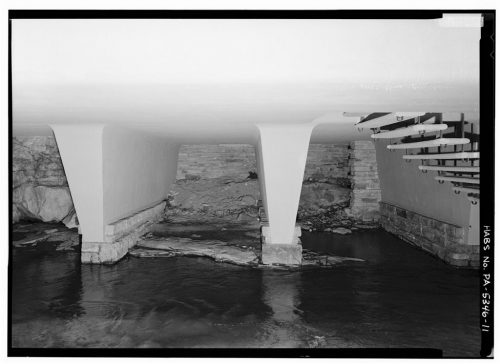
The majority of the house’s structure is made of concrete, with exposed columns and beams forming porticos and the projections (the horizontal elements which extend as terraces over the waterfall) all made of concrete. Some walls and other vertical elements which define the spaces of the house, as well as the floors, were covered in the local stone. Some details of the house can also be seen in steel and others in wood.
Materials
The materials used for the construction of this house were: concrete, rough stone, local stone, wood and steel.
Videos



